Quick filters:
West indies slaves Stock Photos and Images
 SLAVERY Workers on a French sugar plantation in the West Indies about 1800 Stock Photohttps://www.alamy.com/image-license-details/?v=1https://www.alamy.com/stock-photo-slavery-workers-on-a-french-sugar-plantation-in-the-west-indies-about-41314783.html
SLAVERY Workers on a French sugar plantation in the West Indies about 1800 Stock Photohttps://www.alamy.com/image-license-details/?v=1https://www.alamy.com/stock-photo-slavery-workers-on-a-french-sugar-plantation-in-the-west-indies-about-41314783.htmlRMCB61BY–SLAVERY Workers on a French sugar plantation in the West Indies about 1800
 Slavery West Indies Stock Photohttps://www.alamy.com/image-license-details/?v=1https://www.alamy.com/slavery-west-indies-image5070963.html
Slavery West Indies Stock Photohttps://www.alamy.com/image-license-details/?v=1https://www.alamy.com/slavery-west-indies-image5070963.htmlRMANHM74–Slavery West Indies
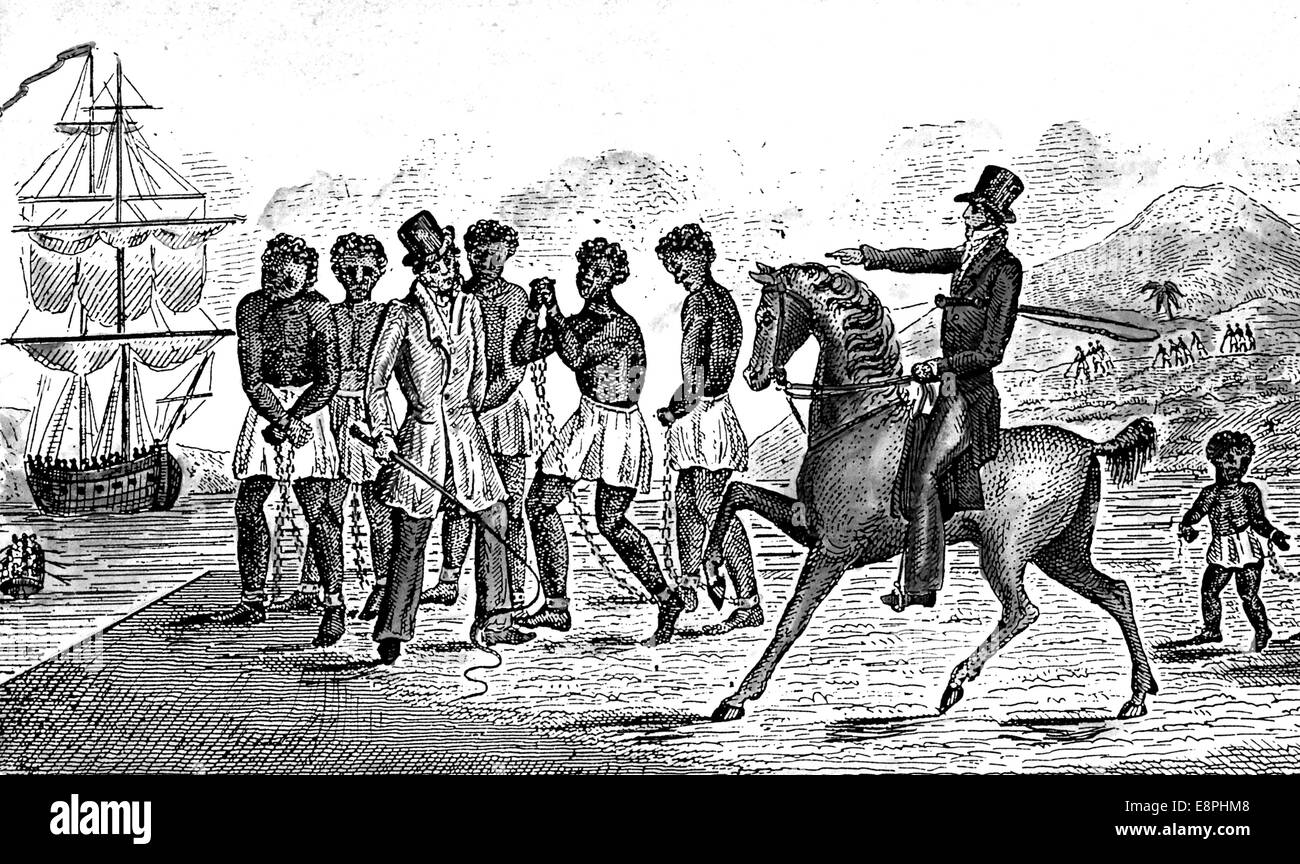 SLAVERY West Indies plantation owner selecting slaves about 1800 Stock Photohttps://www.alamy.com/image-license-details/?v=1https://www.alamy.com/stock-photo-slavery-west-indies-plantation-owner-selecting-slaves-about-1800-74255560.html
SLAVERY West Indies plantation owner selecting slaves about 1800 Stock Photohttps://www.alamy.com/image-license-details/?v=1https://www.alamy.com/stock-photo-slavery-west-indies-plantation-owner-selecting-slaves-about-1800-74255560.htmlRME8PHM8–SLAVERY West Indies plantation owner selecting slaves about 1800
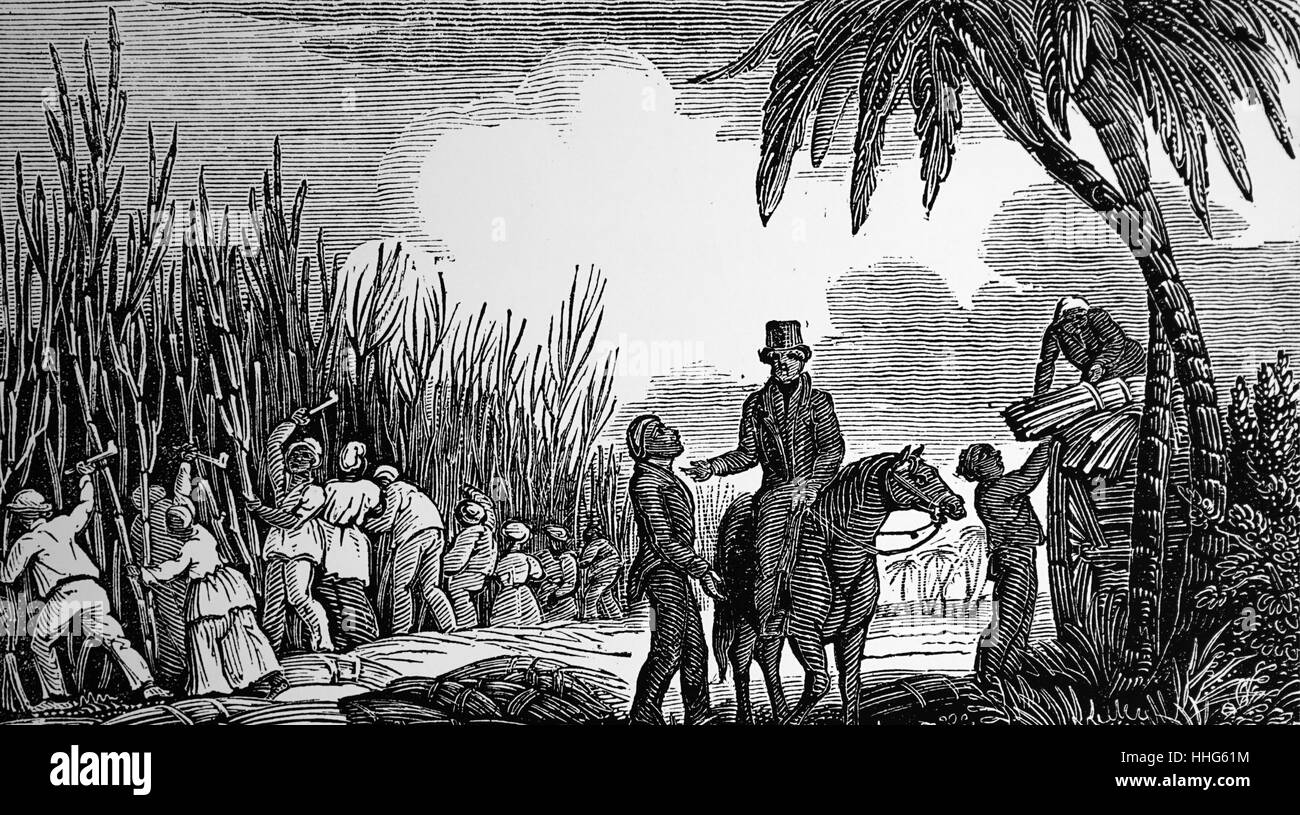 Cutting sugar cane in the West Indies, 1833. Stock Photohttps://www.alamy.com/image-license-details/?v=1https://www.alamy.com/stock-photo-cutting-sugar-cane-in-the-west-indies-1833-131277712.html
Cutting sugar cane in the West Indies, 1833. Stock Photohttps://www.alamy.com/image-license-details/?v=1https://www.alamy.com/stock-photo-cutting-sugar-cane-in-the-west-indies-1833-131277712.htmlRMHHG61M–Cutting sugar cane in the West Indies, 1833.
 Slaves cultivating sugar cane in the West Indies. Hand-coloured wood engraving from Grandfather Grey 'The Wonders of Home' London, 1852. Stock Photohttps://www.alamy.com/image-license-details/?v=1https://www.alamy.com/stock-photo-slaves-cultivating-sugar-cane-in-the-west-indies-hand-coloured-wood-135678293.html
Slaves cultivating sugar cane in the West Indies. Hand-coloured wood engraving from Grandfather Grey 'The Wonders of Home' London, 1852. Stock Photohttps://www.alamy.com/image-license-details/?v=1https://www.alamy.com/stock-photo-slaves-cultivating-sugar-cane-in-the-west-indies-hand-coloured-wood-135678293.htmlRMHTMK19–Slaves cultivating sugar cane in the West Indies. Hand-coloured wood engraving from Grandfather Grey 'The Wonders of Home' London, 1852.
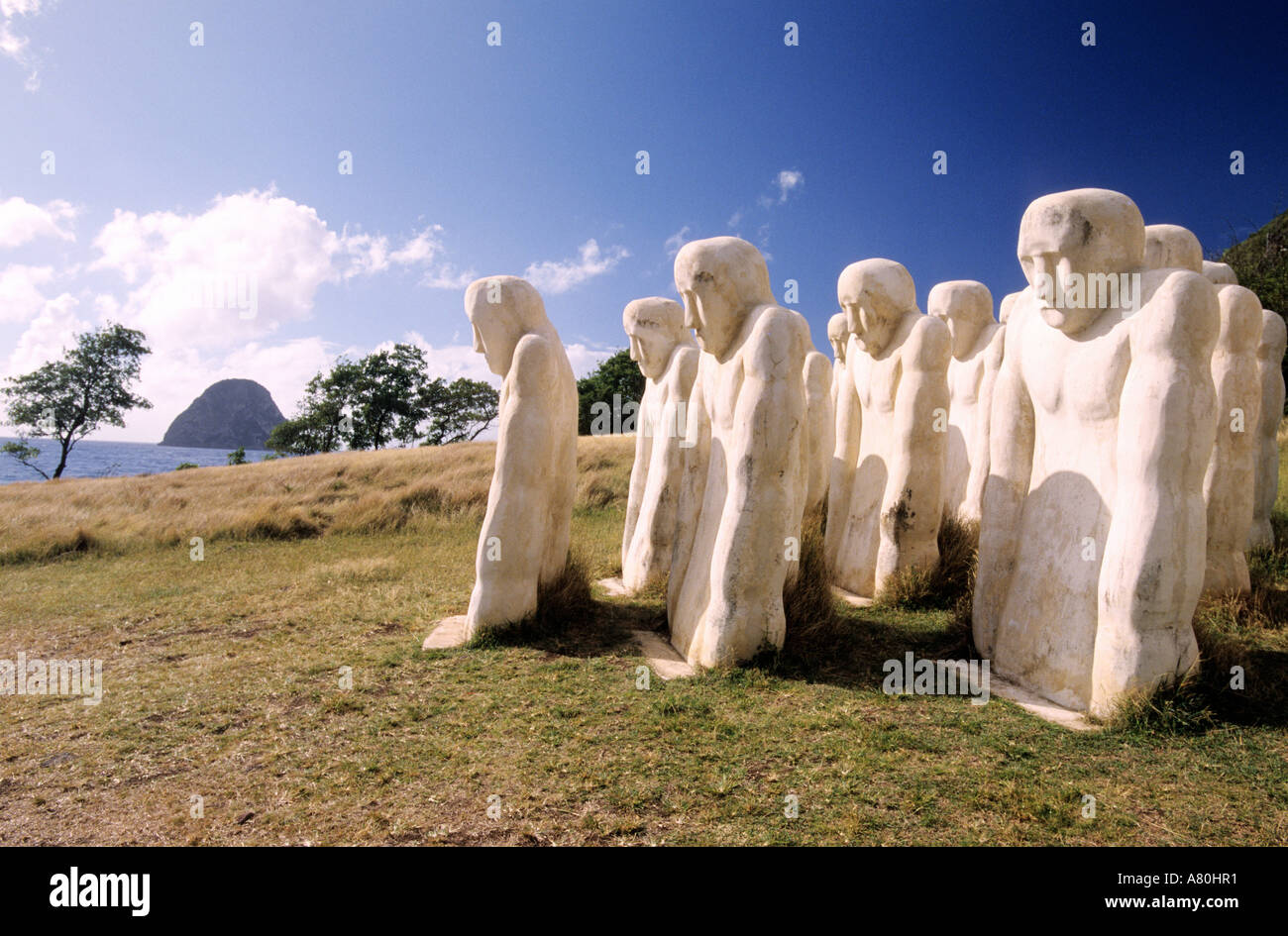 France, Martinique (French West Indies), Le Diamant, the Memorial of the Anse Cafard (Cockroach Cove) Stock Photohttps://www.alamy.com/image-license-details/?v=1https://www.alamy.com/france-martinique-french-west-indies-le-diamant-the-memorial-of-the-image6827312.html
France, Martinique (French West Indies), Le Diamant, the Memorial of the Anse Cafard (Cockroach Cove) Stock Photohttps://www.alamy.com/image-license-details/?v=1https://www.alamy.com/france-martinique-french-west-indies-le-diamant-the-memorial-of-the-image6827312.htmlRMA80HR1–France, Martinique (French West Indies), Le Diamant, the Memorial of the Anse Cafard (Cockroach Cove)
 Slaves planting sugar cane in the British West Indies, 1823 Stock Photohttps://www.alamy.com/image-license-details/?v=1https://www.alamy.com/slaves-planting-sugar-cane-in-the-british-west-indies-1823-image503786511.html
Slaves planting sugar cane in the British West Indies, 1823 Stock Photohttps://www.alamy.com/image-license-details/?v=1https://www.alamy.com/slaves-planting-sugar-cane-in-the-british-west-indies-1823-image503786511.htmlRM2M7HCRB–Slaves planting sugar cane in the British West Indies, 1823
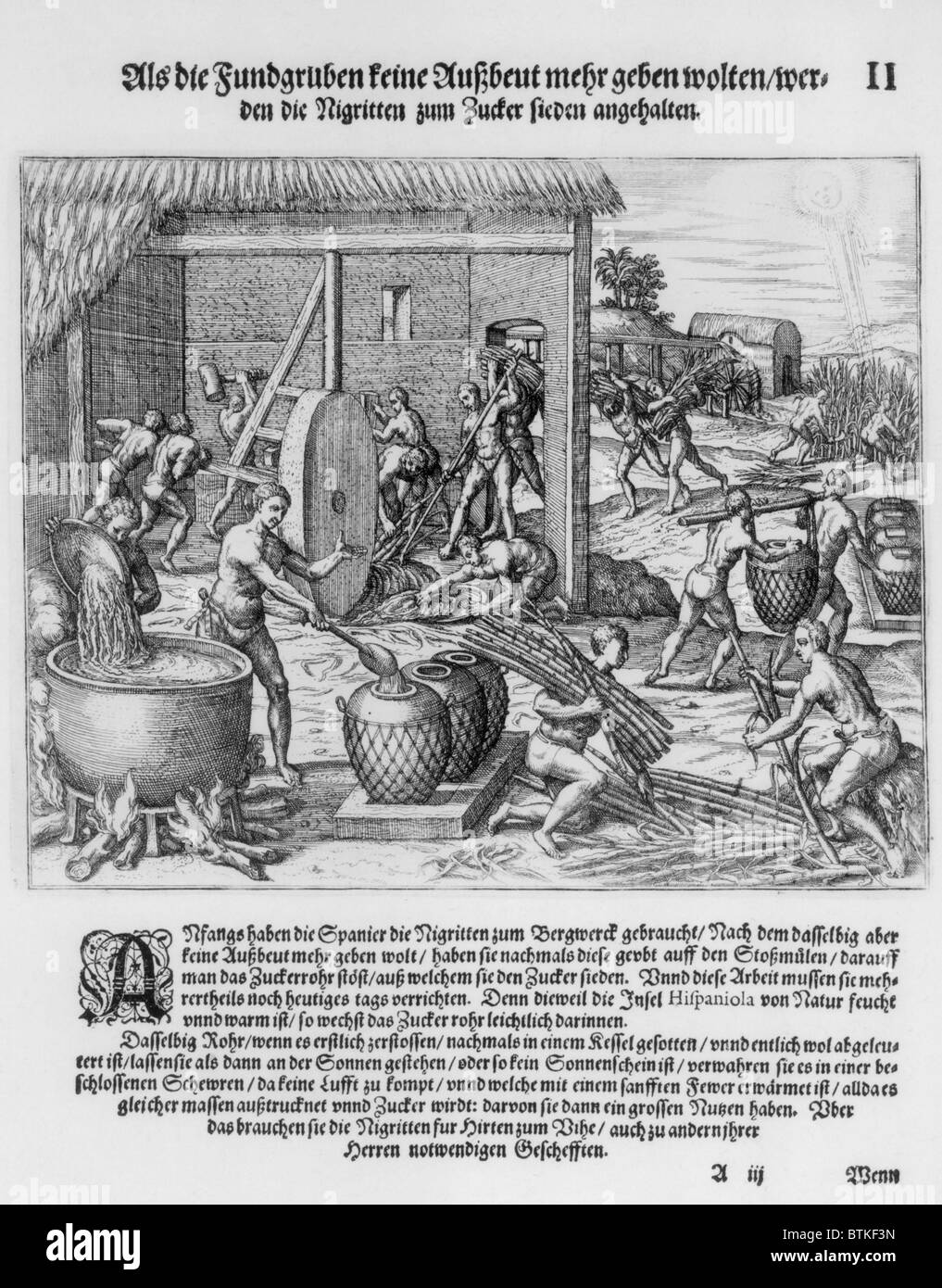 African slaves processing sugar cane on Hispaniola. 1595 engraving by Theodor de Bry show harvesting the cane, a slave powered grinding mill, and boiling cane juice. Stock Photohttps://www.alamy.com/image-license-details/?v=1https://www.alamy.com/stock-photo-african-slaves-processing-sugar-cane-on-hispaniola-1595-engraving-32391065.html
African slaves processing sugar cane on Hispaniola. 1595 engraving by Theodor de Bry show harvesting the cane, a slave powered grinding mill, and boiling cane juice. Stock Photohttps://www.alamy.com/image-license-details/?v=1https://www.alamy.com/stock-photo-african-slaves-processing-sugar-cane-on-hispaniola-1595-engraving-32391065.htmlRMBTKF3N–African slaves processing sugar cane on Hispaniola. 1595 engraving by Theodor de Bry show harvesting the cane, a slave powered grinding mill, and boiling cane juice.
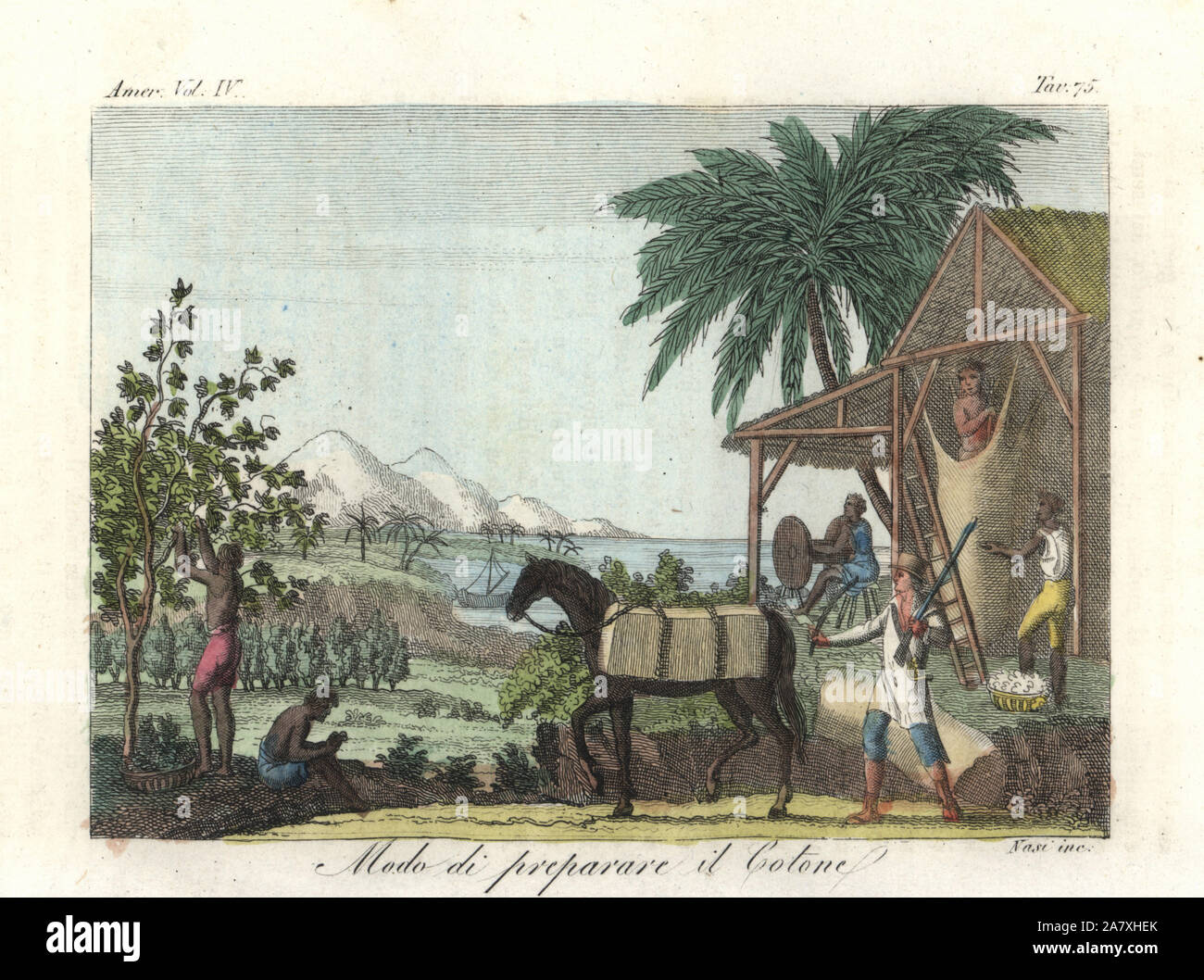 African slaves harvesting cotton bolls, removing the seeds by machine, while an overseer with musket and whip drives a horse laden with raw cotton. West Indies, early 19th century. Handcoloured copperplate engraving by Nasi from Giulio Ferrrario's Costumes Antique and Modern of All Peoples (Il Costume Antico e Moderno di Tutti i Popoli), Florence, 1842. Stock Photohttps://www.alamy.com/image-license-details/?v=1https://www.alamy.com/african-slaves-harvesting-cotton-bolls-removing-the-seeds-by-machine-while-an-overseer-with-musket-and-whip-drives-a-horse-laden-with-raw-cotton-west-indies-early-19th-century-handcoloured-copperplate-engraving-by-nasi-from-giulio-ferrrarios-costumes-antique-and-modern-of-all-peoples-il-costume-antico-e-moderno-di-tutti-i-popoli-florence-1842-image331884075.html
African slaves harvesting cotton bolls, removing the seeds by machine, while an overseer with musket and whip drives a horse laden with raw cotton. West Indies, early 19th century. Handcoloured copperplate engraving by Nasi from Giulio Ferrrario's Costumes Antique and Modern of All Peoples (Il Costume Antico e Moderno di Tutti i Popoli), Florence, 1842. Stock Photohttps://www.alamy.com/image-license-details/?v=1https://www.alamy.com/african-slaves-harvesting-cotton-bolls-removing-the-seeds-by-machine-while-an-overseer-with-musket-and-whip-drives-a-horse-laden-with-raw-cotton-west-indies-early-19th-century-handcoloured-copperplate-engraving-by-nasi-from-giulio-ferrrarios-costumes-antique-and-modern-of-all-peoples-il-costume-antico-e-moderno-di-tutti-i-popoli-florence-1842-image331884075.htmlRM2A7XHEK–African slaves harvesting cotton bolls, removing the seeds by machine, while an overseer with musket and whip drives a horse laden with raw cotton. West Indies, early 19th century. Handcoloured copperplate engraving by Nasi from Giulio Ferrrario's Costumes Antique and Modern of All Peoples (Il Costume Antico e Moderno di Tutti i Popoli), Florence, 1842.
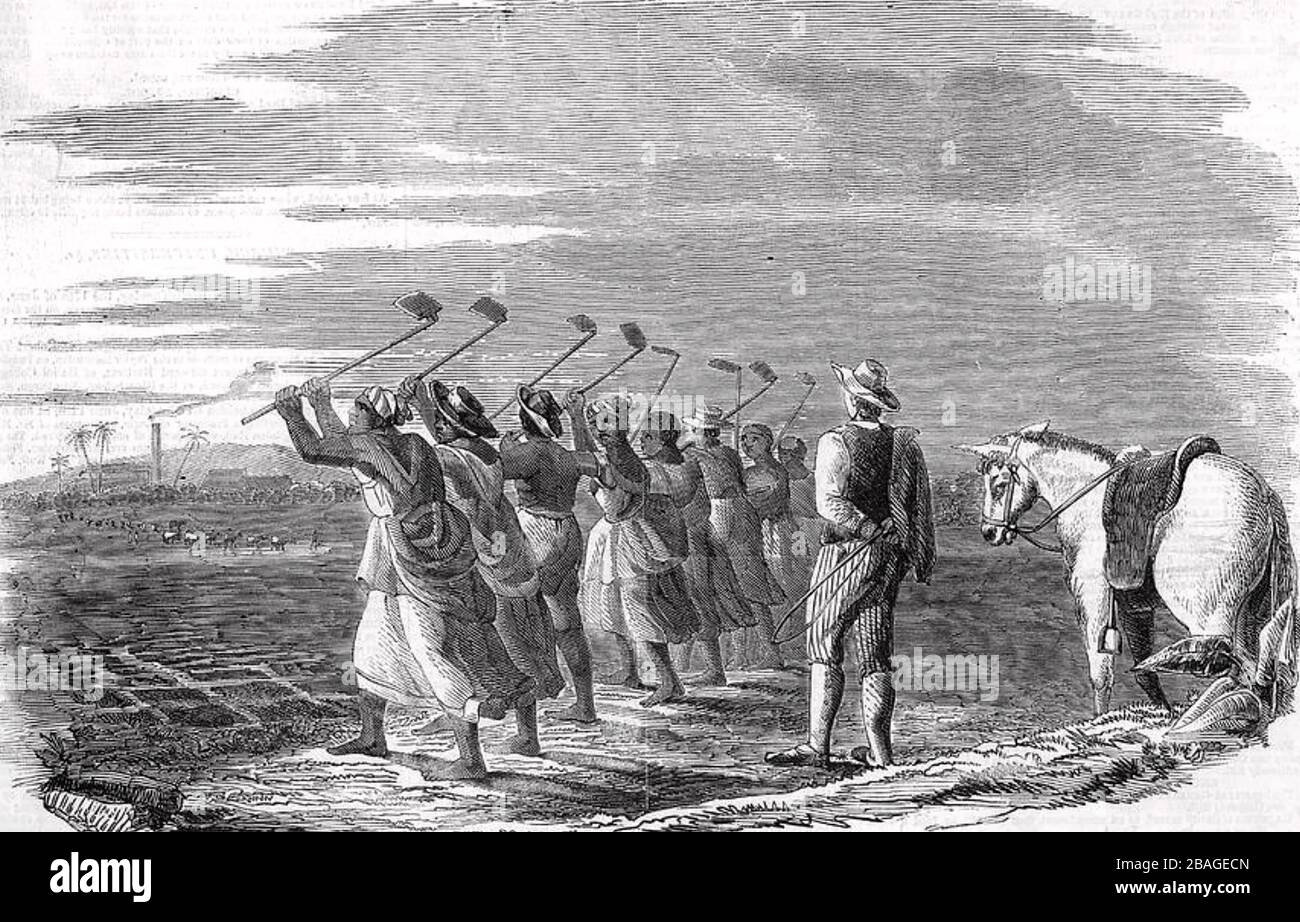 SUGAR CANE farming in the West Indies, Slaves prepare individual plots for the canes watched by an overseer with the factory in the distance. About 1820. Stock Photohttps://www.alamy.com/image-license-details/?v=1https://www.alamy.com/sugar-cane-farming-in-the-west-indies-slaves-prepare-individual-plots-for-the-canes-watched-by-an-overseer-with-the-factory-in-the-distance-about-1820-image350716485.html
SUGAR CANE farming in the West Indies, Slaves prepare individual plots for the canes watched by an overseer with the factory in the distance. About 1820. Stock Photohttps://www.alamy.com/image-license-details/?v=1https://www.alamy.com/sugar-cane-farming-in-the-west-indies-slaves-prepare-individual-plots-for-the-canes-watched-by-an-overseer-with-the-factory-in-the-distance-about-1820-image350716485.htmlRM2BAGECN–SUGAR CANE farming in the West Indies, Slaves prepare individual plots for the canes watched by an overseer with the factory in the distance. About 1820.
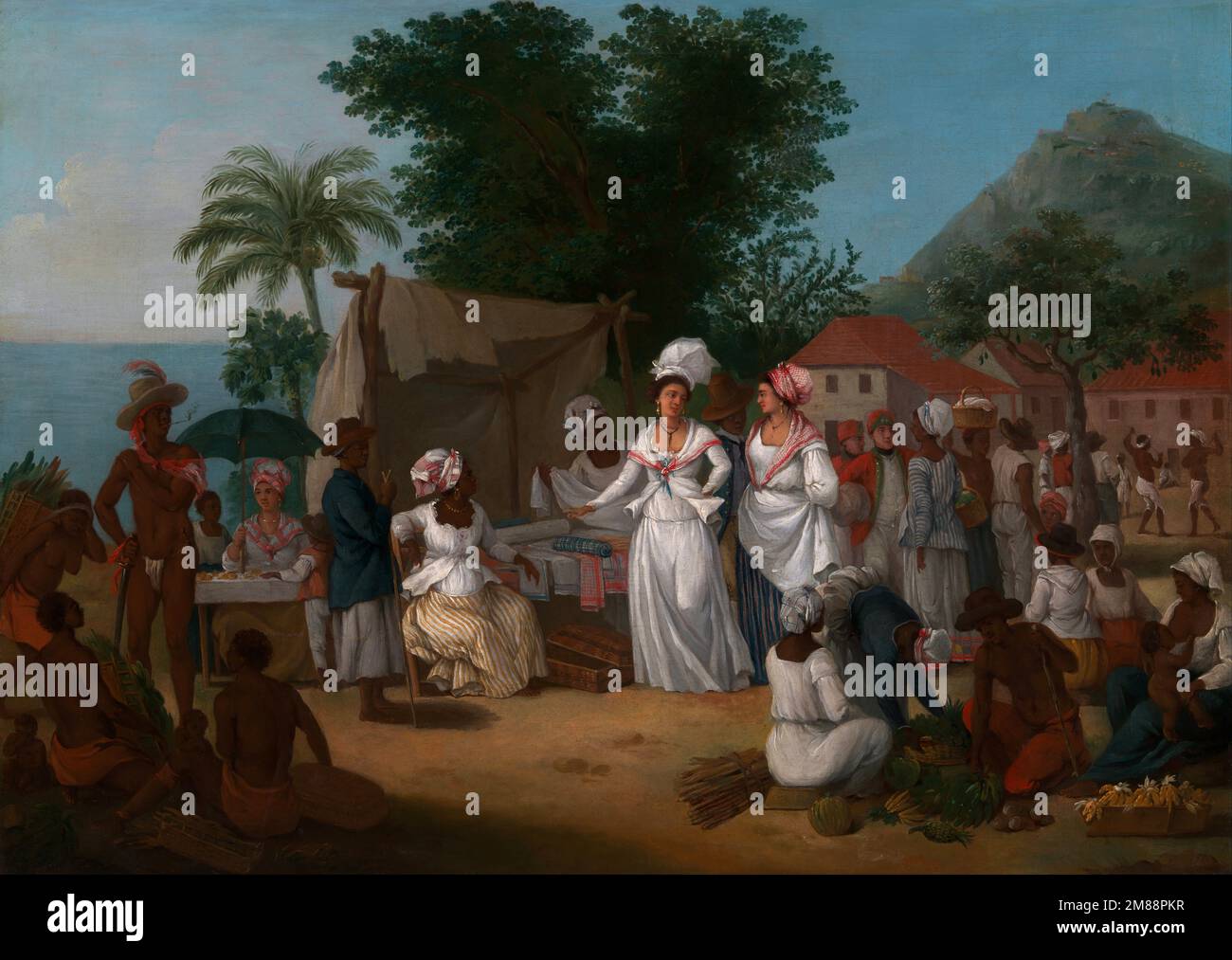 A Linen Market with enslaved Africans. West Indies, circa 1780 Stock Photohttps://www.alamy.com/image-license-details/?v=1https://www.alamy.com/a-linen-market-with-enslaved-africans-west-indies-circa-1780-image504211339.html
A Linen Market with enslaved Africans. West Indies, circa 1780 Stock Photohttps://www.alamy.com/image-license-details/?v=1https://www.alamy.com/a-linen-market-with-enslaved-africans-west-indies-circa-1780-image504211339.htmlRM2M88PKR–A Linen Market with enslaved Africans. West Indies, circa 1780
 Sugar Plantation Slaves 1858 engraving of slaves in the British West Indies working the sugar cane Stock Photohttps://www.alamy.com/image-license-details/?v=1https://www.alamy.com/stock-photo-sugar-plantation-slaves-1858-engraving-of-slaves-in-the-british-west-12239309.html
Sugar Plantation Slaves 1858 engraving of slaves in the British West Indies working the sugar cane Stock Photohttps://www.alamy.com/image-license-details/?v=1https://www.alamy.com/stock-photo-sugar-plantation-slaves-1858-engraving-of-slaves-in-the-british-west-12239309.htmlRMA93H5J–Sugar Plantation Slaves 1858 engraving of slaves in the British West Indies working the sugar cane
 Scene on a West Indian Plantation - Slaves receiving the news of their emancipation following the passing of the Slavery Abolition Act 1833. Illustration from Cassell's History of England, Vol VII. New Edition published Circ 1873-5. Stock Photohttps://www.alamy.com/image-license-details/?v=1https://www.alamy.com/scene-on-a-west-indian-plantation-slaves-receiving-the-news-of-their-emancipation-following-the-passing-of-the-slavery-abolition-act-1833-illustration-from-cassells-history-of-england-vol-vii-new-edition-published-circ-1873-5-image605755890.html
Scene on a West Indian Plantation - Slaves receiving the news of their emancipation following the passing of the Slavery Abolition Act 1833. Illustration from Cassell's History of England, Vol VII. New Edition published Circ 1873-5. Stock Photohttps://www.alamy.com/image-license-details/?v=1https://www.alamy.com/scene-on-a-west-indian-plantation-slaves-receiving-the-news-of-their-emancipation-following-the-passing-of-the-slavery-abolition-act-1833-illustration-from-cassells-history-of-england-vol-vii-new-edition-published-circ-1873-5-image605755890.htmlRM2X5EFPX–Scene on a West Indian Plantation - Slaves receiving the news of their emancipation following the passing of the Slavery Abolition Act 1833. Illustration from Cassell's History of England, Vol VII. New Edition published Circ 1873-5.
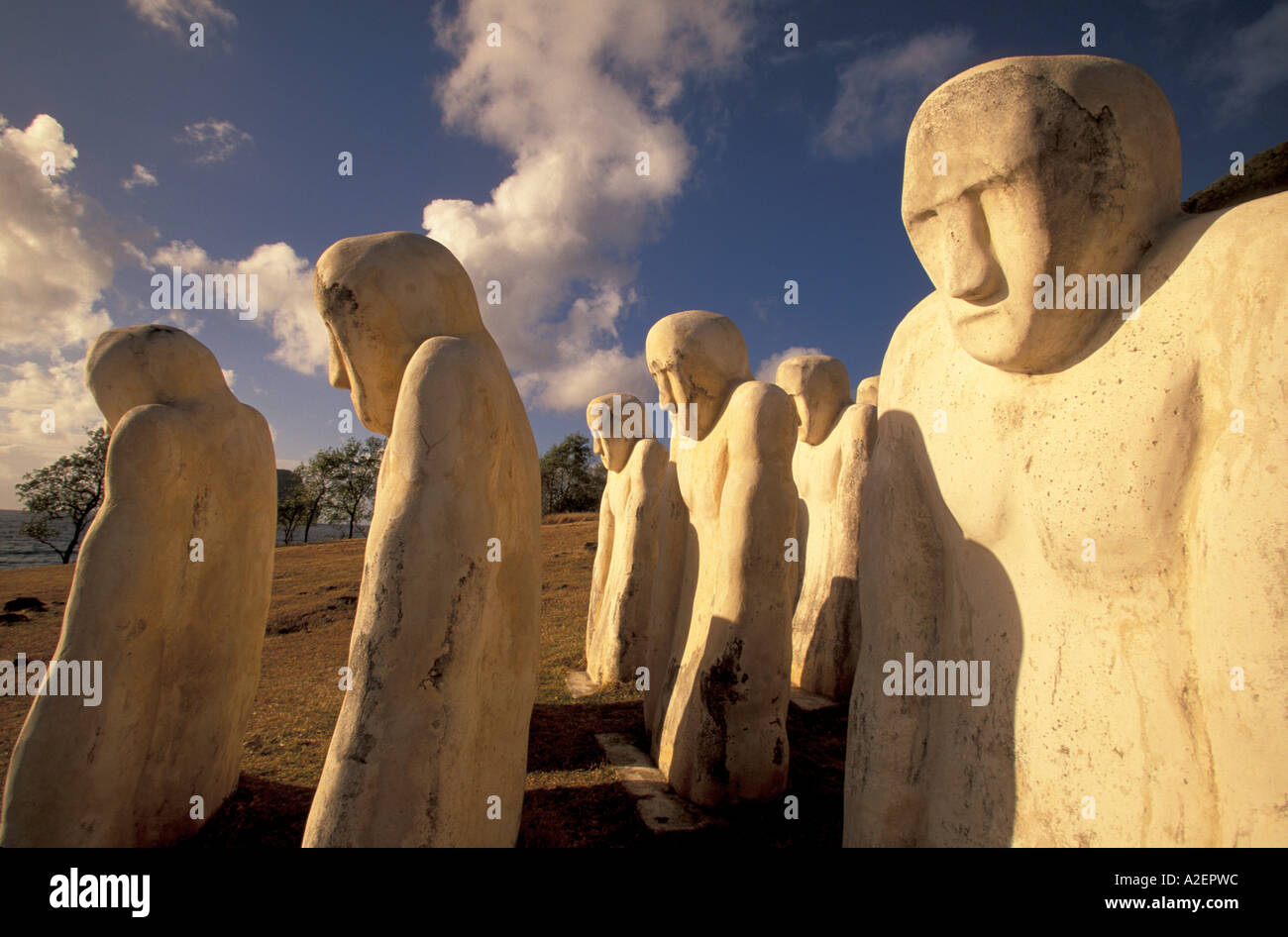 Caribbean, French West Indies, Martinique Le Diamant; memorial to the Anse Caffard drowned African slaves, 1830 Stock Photohttps://www.alamy.com/image-license-details/?v=1https://www.alamy.com/caribbean-french-west-indies-martinique-le-diamant-memorial-to-the-image6000411.html
Caribbean, French West Indies, Martinique Le Diamant; memorial to the Anse Caffard drowned African slaves, 1830 Stock Photohttps://www.alamy.com/image-license-details/?v=1https://www.alamy.com/caribbean-french-west-indies-martinique-le-diamant-memorial-to-the-image6000411.htmlRMA2EPWC–Caribbean, French West Indies, Martinique Le Diamant; memorial to the Anse Caffard drowned African slaves, 1830
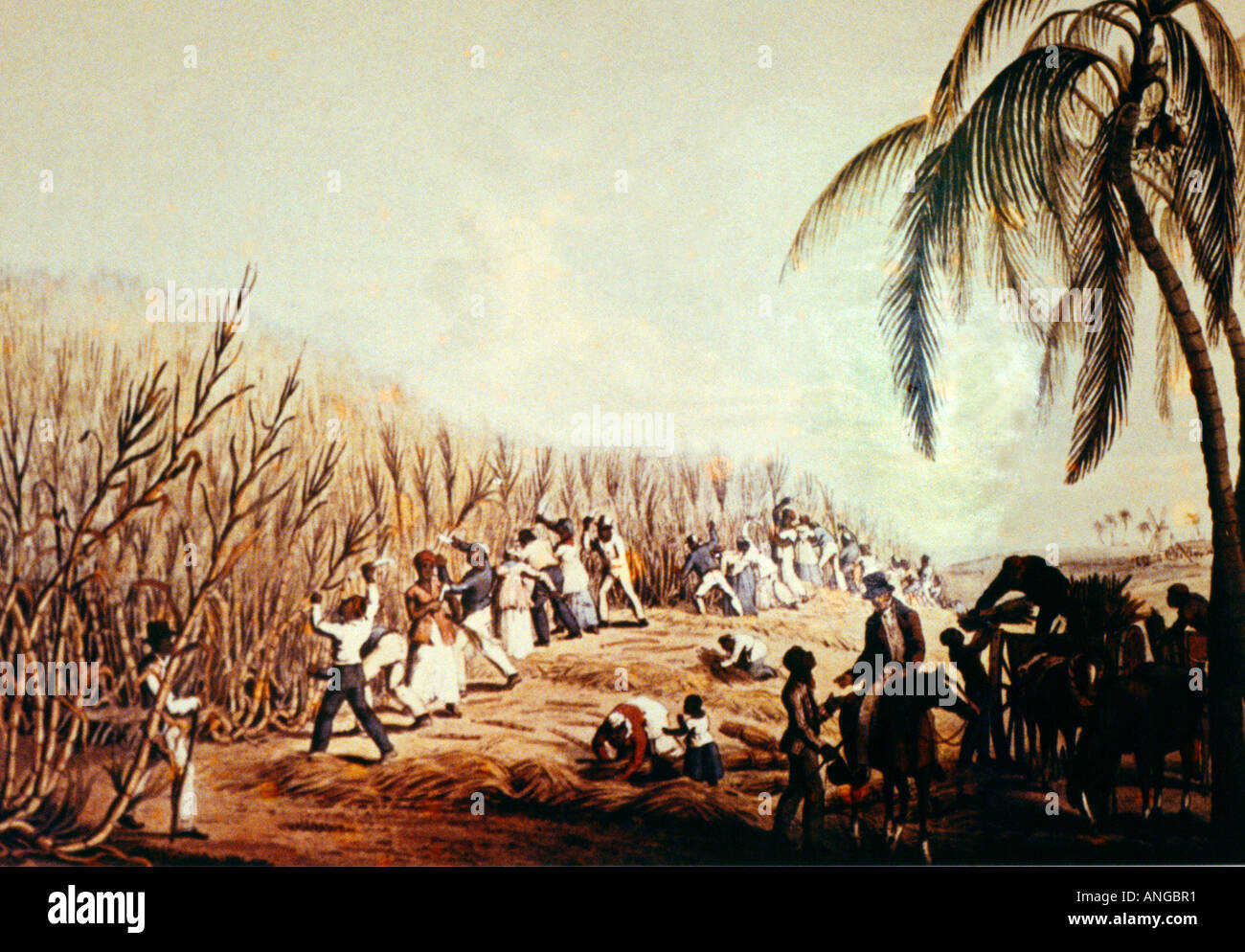 Bettys Hope Antigua Sugar Mill Slaves - Harvesting Cane 19 Century Painting In Bettys Hope Museum Stock Photohttps://www.alamy.com/image-license-details/?v=1https://www.alamy.com/bettys-hope-antigua-sugar-mill-slaves-harvesting-cane-19-century-painting-image8869040.html
Bettys Hope Antigua Sugar Mill Slaves - Harvesting Cane 19 Century Painting In Bettys Hope Museum Stock Photohttps://www.alamy.com/image-license-details/?v=1https://www.alamy.com/bettys-hope-antigua-sugar-mill-slaves-harvesting-cane-19-century-painting-image8869040.htmlRMANGBR1–Bettys Hope Antigua Sugar Mill Slaves - Harvesting Cane 19 Century Painting In Bettys Hope Museum
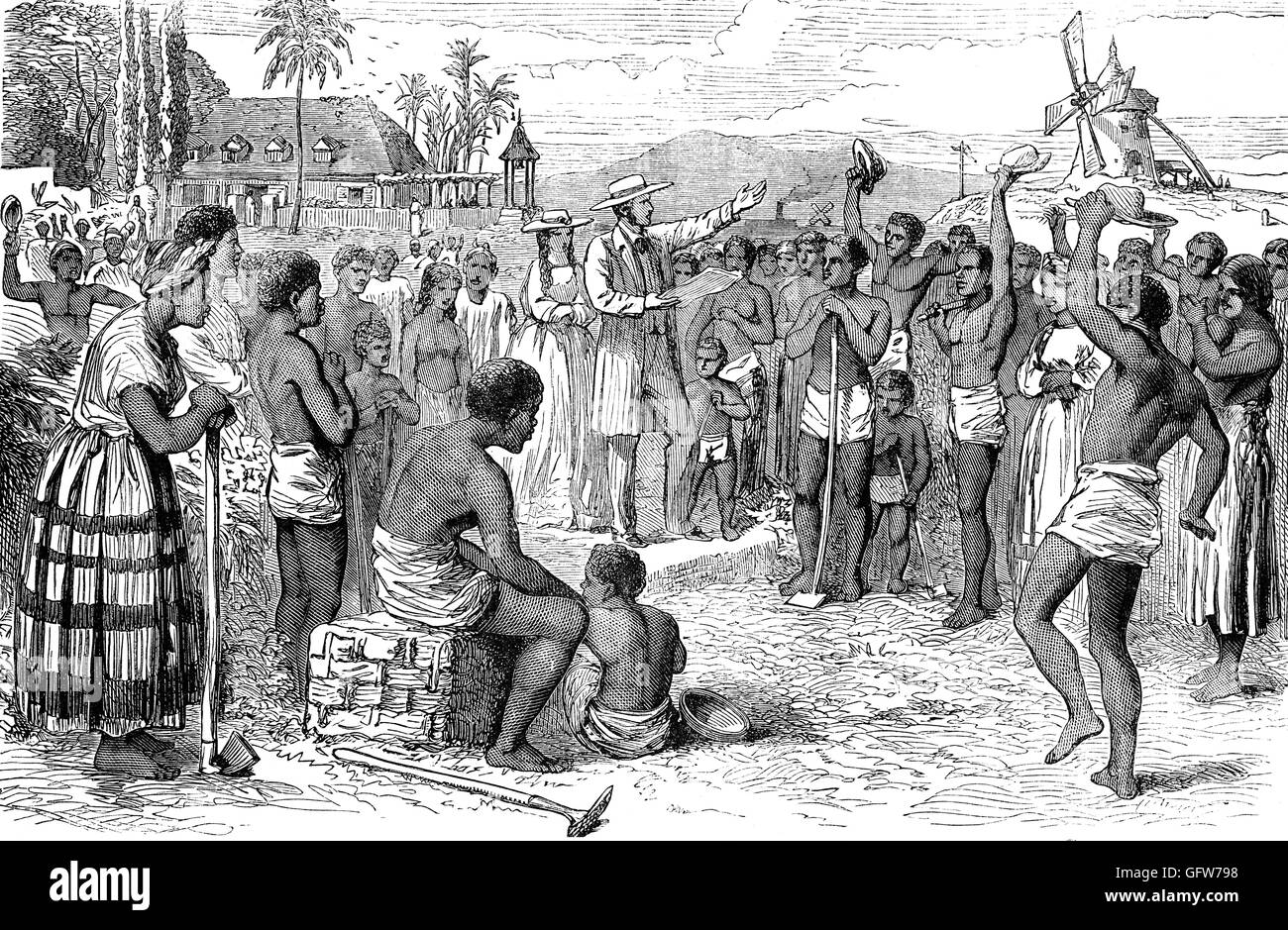 Following the abolition of slavery in the British Empire, slaves on a West Indian plantation are given their freedom. Stock Photohttps://www.alamy.com/image-license-details/?v=1https://www.alamy.com/stock-photo-following-the-abolition-of-slavery-in-the-british-empire-slaves-on-113036596.html
Following the abolition of slavery in the British Empire, slaves on a West Indian plantation are given their freedom. Stock Photohttps://www.alamy.com/image-license-details/?v=1https://www.alamy.com/stock-photo-following-the-abolition-of-slavery-in-the-british-empire-slaves-on-113036596.htmlRMGFW798–Following the abolition of slavery in the British Empire, slaves on a West Indian plantation are given their freedom.
 Shipping slaves off the Pitons, St. Lucia, West Indies, painting of slave ships collecting slaves to transport to America, Nicholas Pocock, c. 1771 Stock Photohttps://www.alamy.com/image-license-details/?v=1https://www.alamy.com/shipping-slaves-off-the-pitons-st-lucia-west-indies-painting-of-slave-ships-collecting-slaves-to-transport-to-america-nicholas-pocock-c-1771-image245172346.html
Shipping slaves off the Pitons, St. Lucia, West Indies, painting of slave ships collecting slaves to transport to America, Nicholas Pocock, c. 1771 Stock Photohttps://www.alamy.com/image-license-details/?v=1https://www.alamy.com/shipping-slaves-off-the-pitons-st-lucia-west-indies-painting-of-slave-ships-collecting-slaves-to-transport-to-america-nicholas-pocock-c-1771-image245172346.htmlRMT6TFR6–Shipping slaves off the Pitons, St. Lucia, West Indies, painting of slave ships collecting slaves to transport to America, Nicholas Pocock, c. 1771
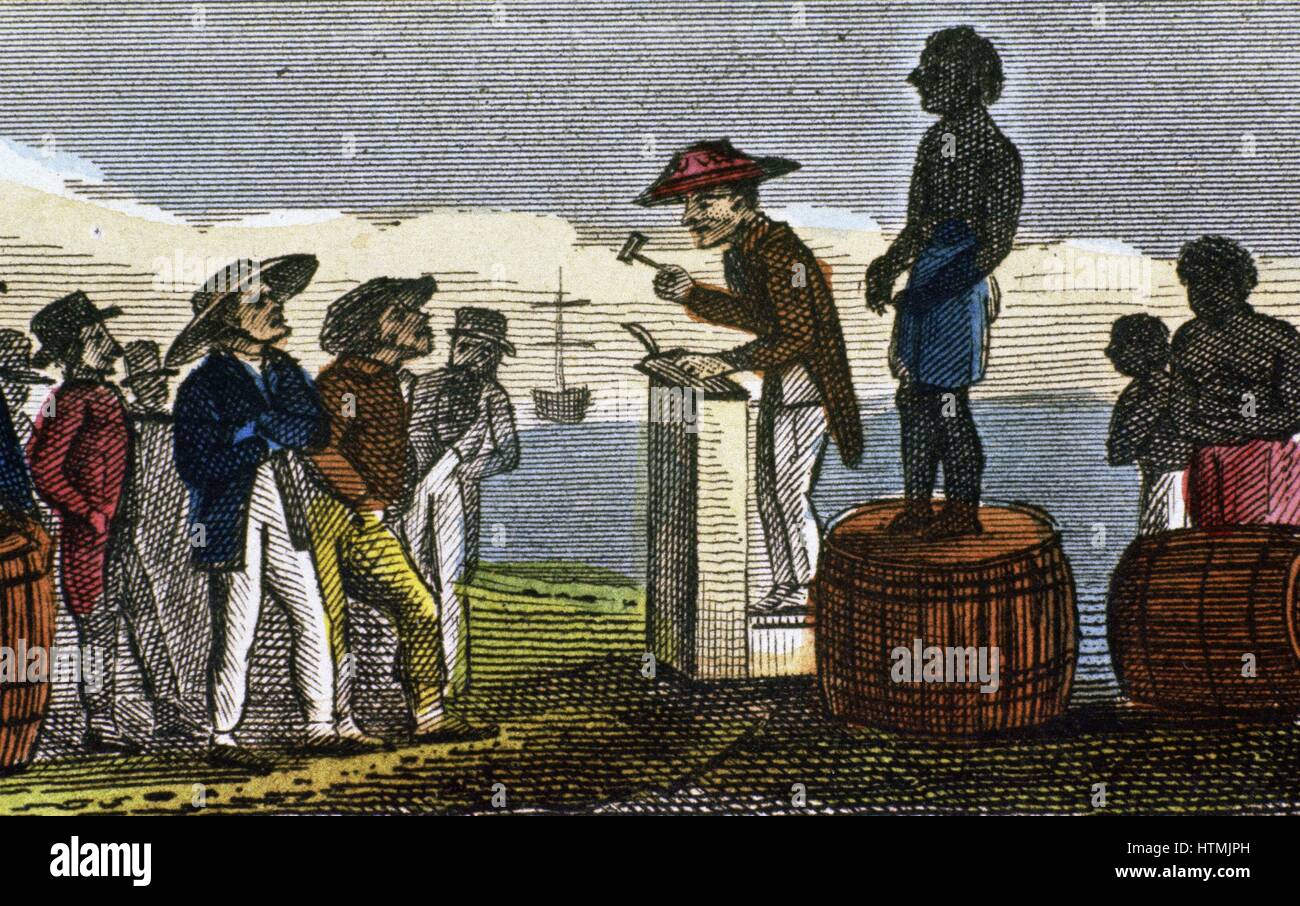 Auctioning slaves in the West Indies after their transportation from West Africa. From Rev. Isaac Taylor 'Scenes in Africa' London 1824. Hand-coloured engraving Stock Photohttps://www.alamy.com/image-license-details/?v=1https://www.alamy.com/stock-photo-auctioning-slaves-in-the-west-indies-after-their-transportation-from-135678105.html
Auctioning slaves in the West Indies after their transportation from West Africa. From Rev. Isaac Taylor 'Scenes in Africa' London 1824. Hand-coloured engraving Stock Photohttps://www.alamy.com/image-license-details/?v=1https://www.alamy.com/stock-photo-auctioning-slaves-in-the-west-indies-after-their-transportation-from-135678105.htmlRMHTMJPH–Auctioning slaves in the West Indies after their transportation from West Africa. From Rev. Isaac Taylor 'Scenes in Africa' London 1824. Hand-coloured engraving
 WEST INDIES: Tobacco plantation & slaves. 'Tabacs'. Caribbean. MALLET, 1683 Stock Photohttps://www.alamy.com/image-license-details/?v=1https://www.alamy.com/stock-photo-west-indies-tobacco-plantation-slaves-tabacs-caribbean-mallet-1683-102711180.html
WEST INDIES: Tobacco plantation & slaves. 'Tabacs'. Caribbean. MALLET, 1683 Stock Photohttps://www.alamy.com/image-license-details/?v=1https://www.alamy.com/stock-photo-west-indies-tobacco-plantation-slaves-tabacs-caribbean-mallet-1683-102711180.htmlRFFY2W4C–WEST INDIES: Tobacco plantation & slaves. 'Tabacs'. Caribbean. MALLET, 1683
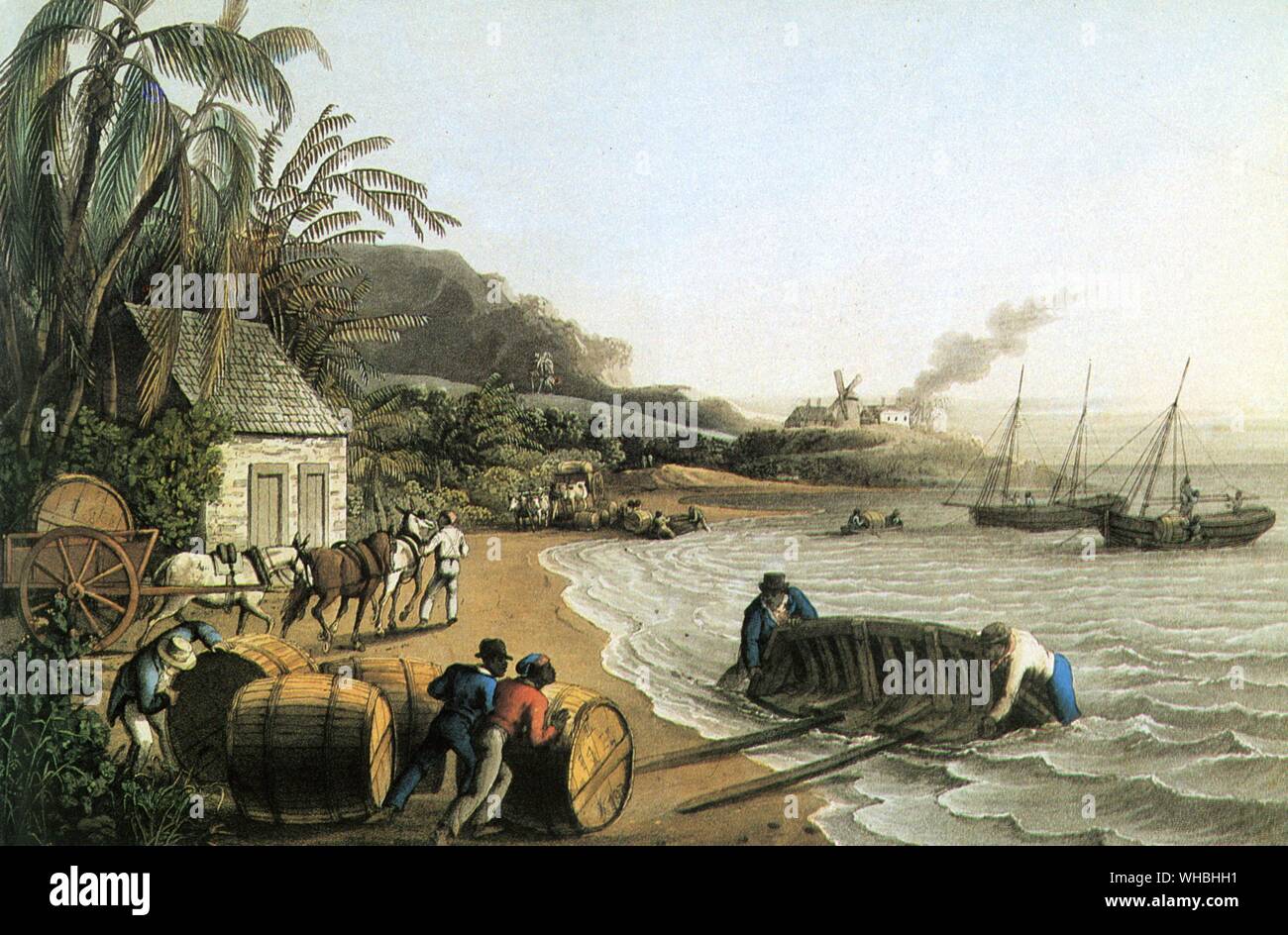 Slaves shipping sugar in the West Indies Stock Photohttps://www.alamy.com/image-license-details/?v=1https://www.alamy.com/slaves-shipping-sugar-in-the-west-indies-image268859949.html
Slaves shipping sugar in the West Indies Stock Photohttps://www.alamy.com/image-license-details/?v=1https://www.alamy.com/slaves-shipping-sugar-in-the-west-indies-image268859949.htmlRMWHBHH1–Slaves shipping sugar in the West Indies
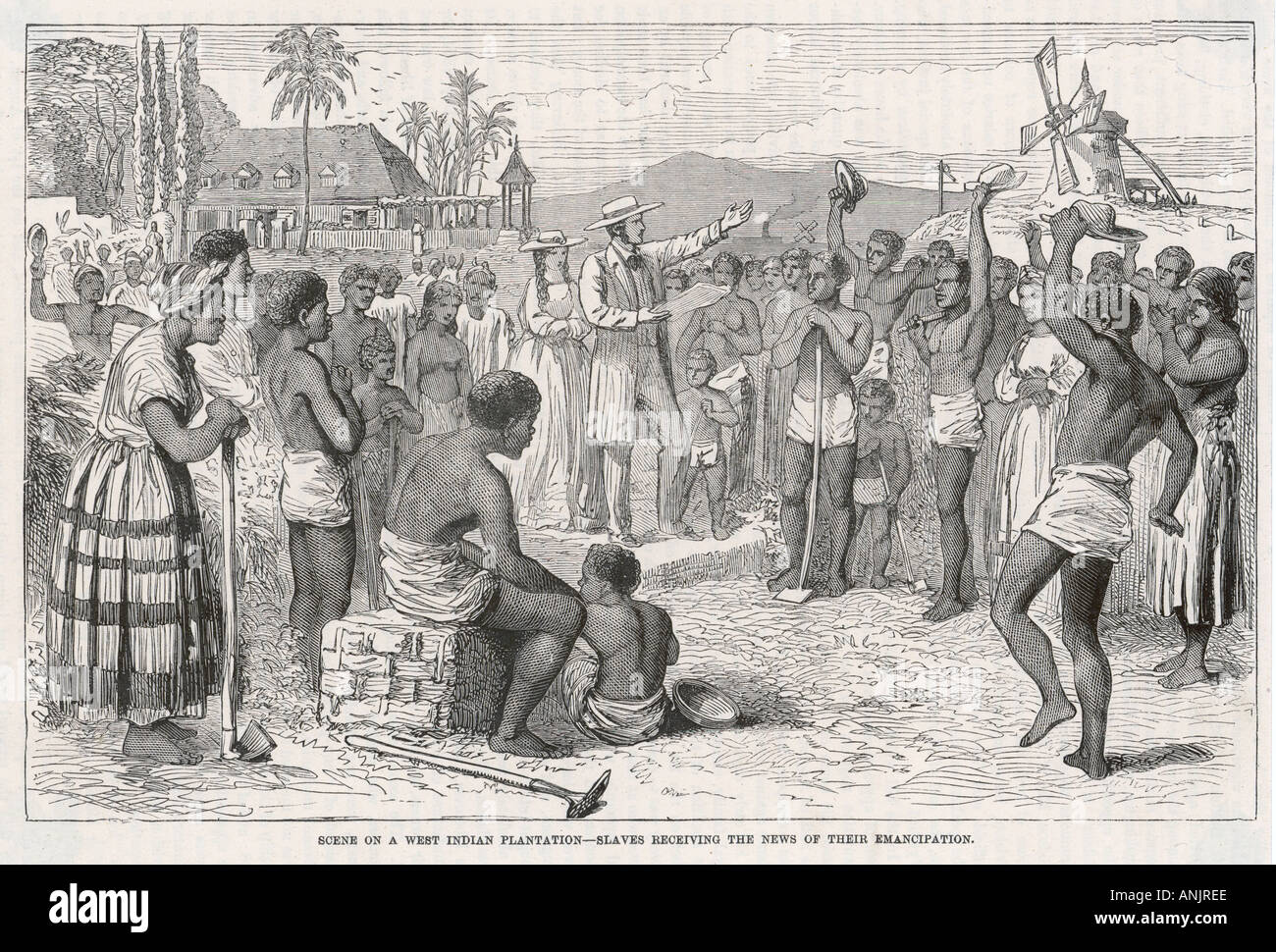 Slavery West Indies Stock Photohttps://www.alamy.com/image-license-details/?v=1https://www.alamy.com/slavery-west-indies-image5074925.html
Slavery West Indies Stock Photohttps://www.alamy.com/image-license-details/?v=1https://www.alamy.com/slavery-west-indies-image5074925.htmlRMANJREE–Slavery West Indies
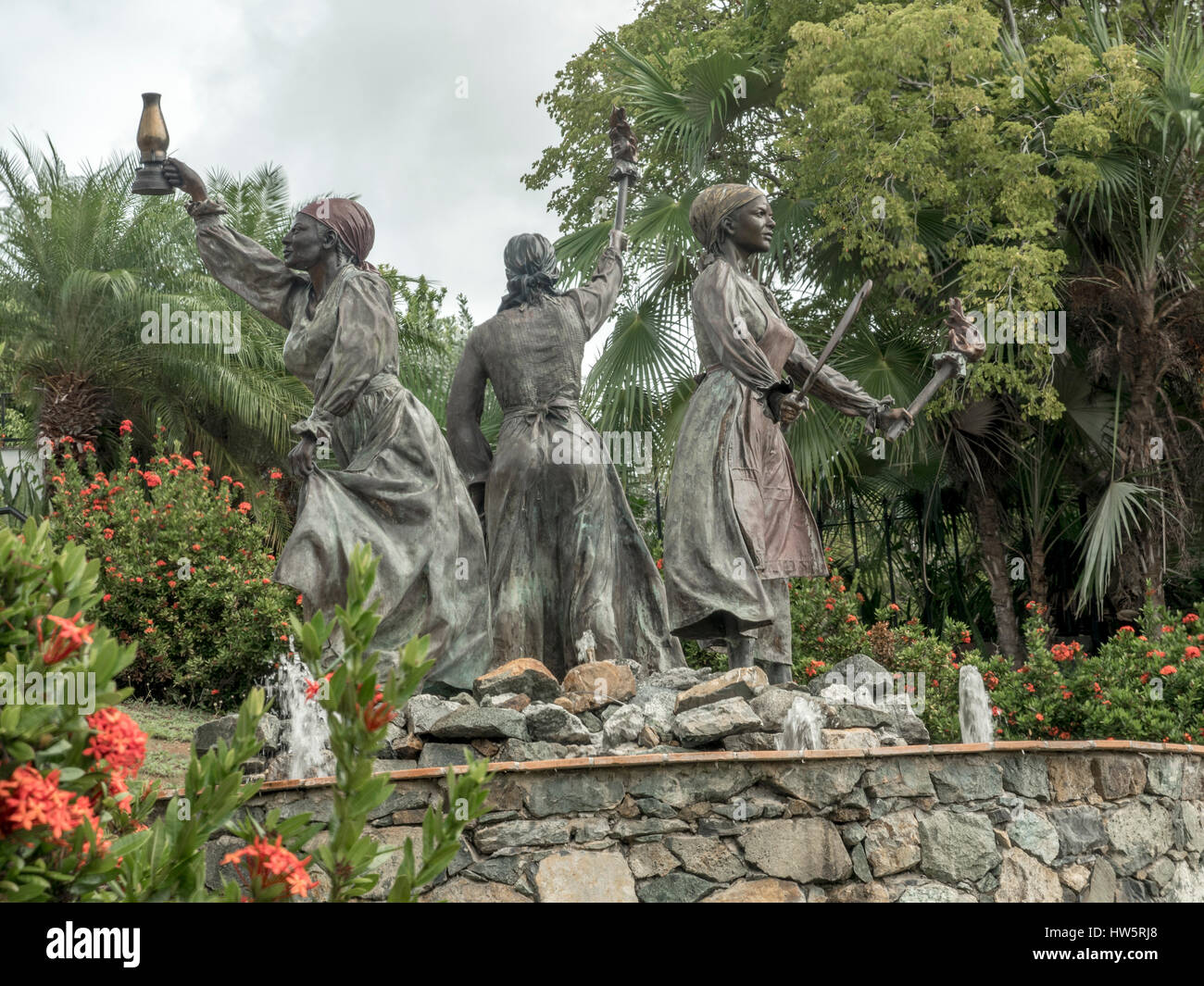 The Three Queens Of The Virgin Islands Fountain And Statue, Depicts Three Former Slaves From St Croix Who Led A Revolt Known As Fireburn Stock Photohttps://www.alamy.com/image-license-details/?v=1https://www.alamy.com/stock-photo-the-three-queens-of-the-virgin-islands-fountain-and-statue-depicts-135967280.html
The Three Queens Of The Virgin Islands Fountain And Statue, Depicts Three Former Slaves From St Croix Who Led A Revolt Known As Fireburn Stock Photohttps://www.alamy.com/image-license-details/?v=1https://www.alamy.com/stock-photo-the-three-queens-of-the-virgin-islands-fountain-and-statue-depicts-135967280.htmlRMHW5RJ8–The Three Queens Of The Virgin Islands Fountain And Statue, Depicts Three Former Slaves From St Croix Who Led A Revolt Known As Fireburn
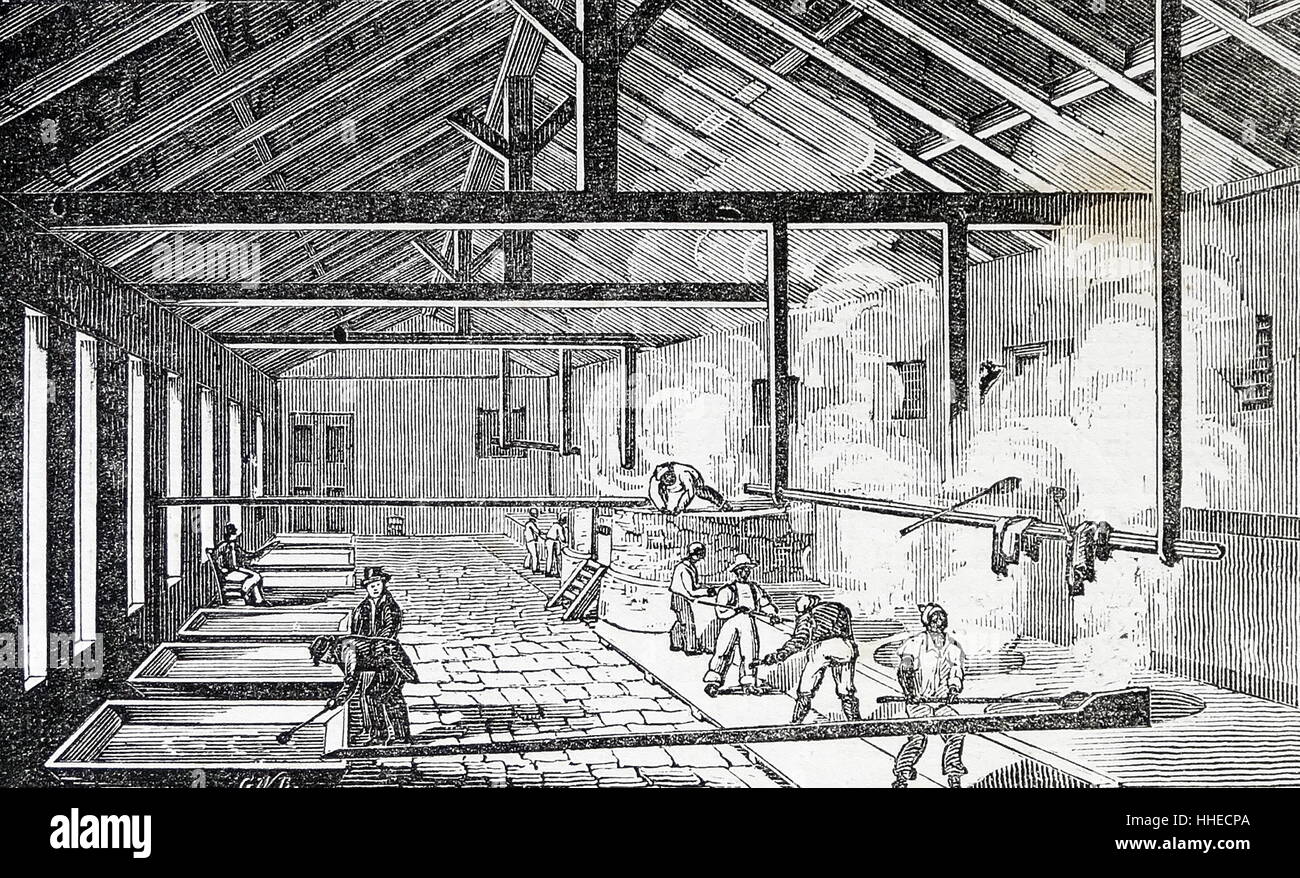 West Indies: Slaves work in a sugar boiling factory 1833 Stock Photohttps://www.alamy.com/image-license-details/?v=1https://www.alamy.com/stock-photo-west-indies-slaves-work-in-a-sugar-boiling-factory-1833-131239090.html
West Indies: Slaves work in a sugar boiling factory 1833 Stock Photohttps://www.alamy.com/image-license-details/?v=1https://www.alamy.com/stock-photo-west-indies-slaves-work-in-a-sugar-boiling-factory-1833-131239090.htmlRMHHECPA–West Indies: Slaves work in a sugar boiling factory 1833
 Immediate emancipation of slaves in the West Indies Stock Photohttps://www.alamy.com/image-license-details/?v=1https://www.alamy.com/stock-photo-immediate-emancipation-of-slaves-in-the-west-indies-83184252.html
Immediate emancipation of slaves in the West Indies Stock Photohttps://www.alamy.com/image-license-details/?v=1https://www.alamy.com/stock-photo-immediate-emancipation-of-slaves-in-the-west-indies-83184252.htmlRMER9AA4–Immediate emancipation of slaves in the West Indies
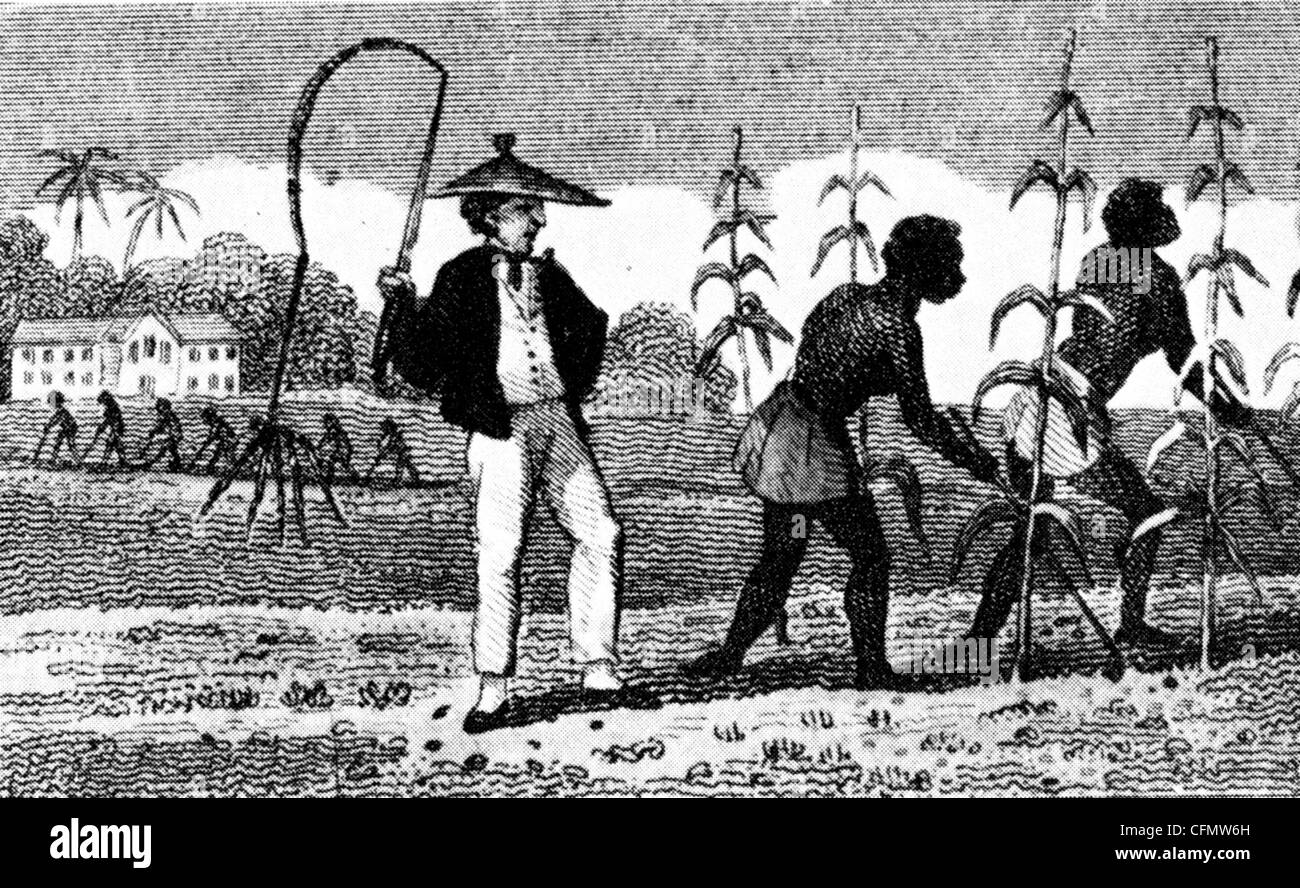 SLAVES ON SUGAR CANE PLANTATION in West Indies about 1810 Stock Photohttps://www.alamy.com/image-license-details/?v=1https://www.alamy.com/stock-photo-slaves-on-sugar-cane-plantation-in-west-indies-about-1810-44099401.html
SLAVES ON SUGAR CANE PLANTATION in West Indies about 1810 Stock Photohttps://www.alamy.com/image-license-details/?v=1https://www.alamy.com/stock-photo-slaves-on-sugar-cane-plantation-in-west-indies-about-1810-44099401.htmlRMCFMW6H–SLAVES ON SUGAR CANE PLANTATION in West Indies about 1810
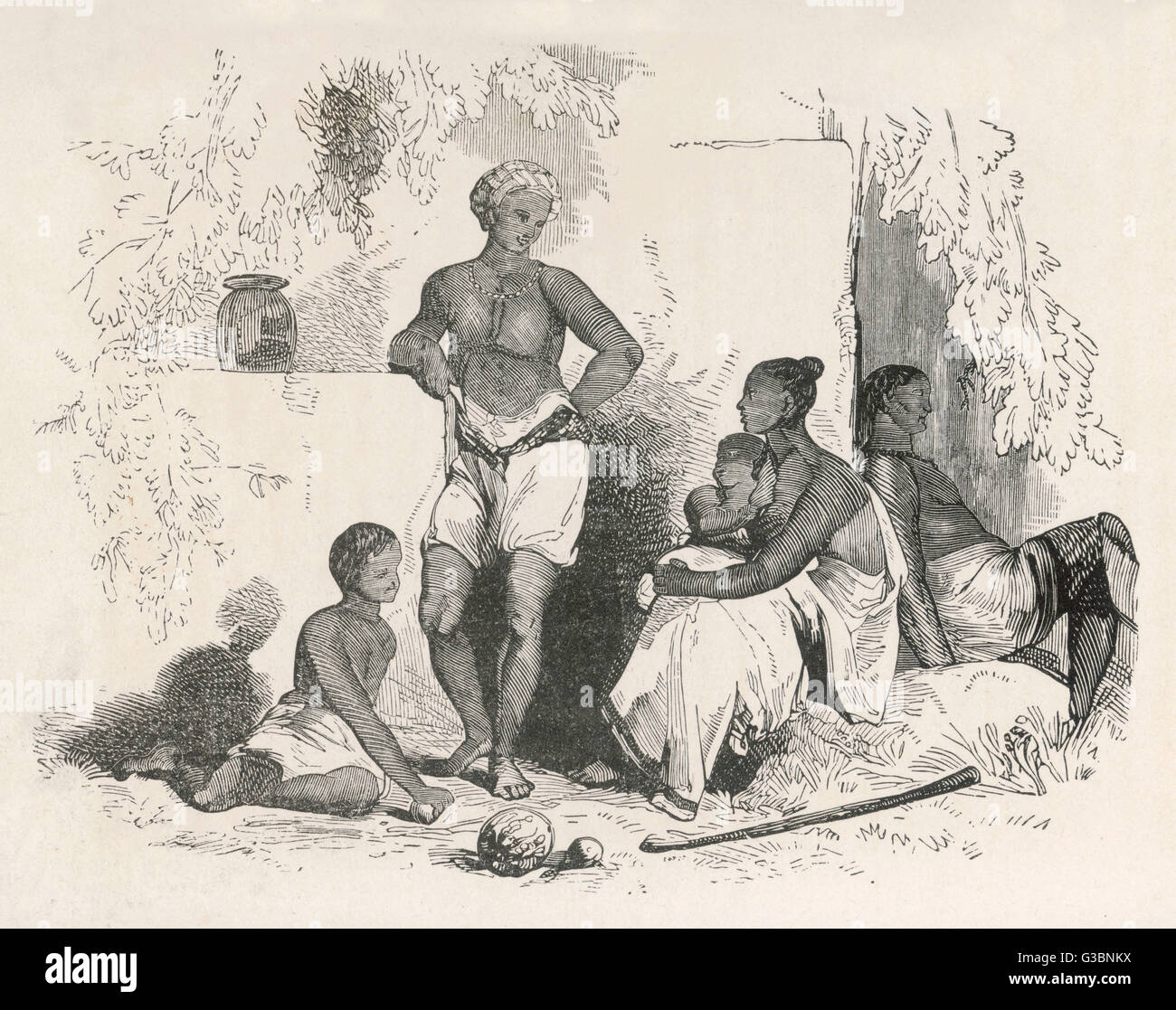 Asian slaves in the West Indies Stock Photohttps://www.alamy.com/image-license-details/?v=1https://www.alamy.com/stock-photo-asian-slaves-in-the-west-indies-105364670.html
Asian slaves in the West Indies Stock Photohttps://www.alamy.com/image-license-details/?v=1https://www.alamy.com/stock-photo-asian-slaves-in-the-west-indies-105364670.htmlRMG3BNKX–Asian slaves in the West Indies
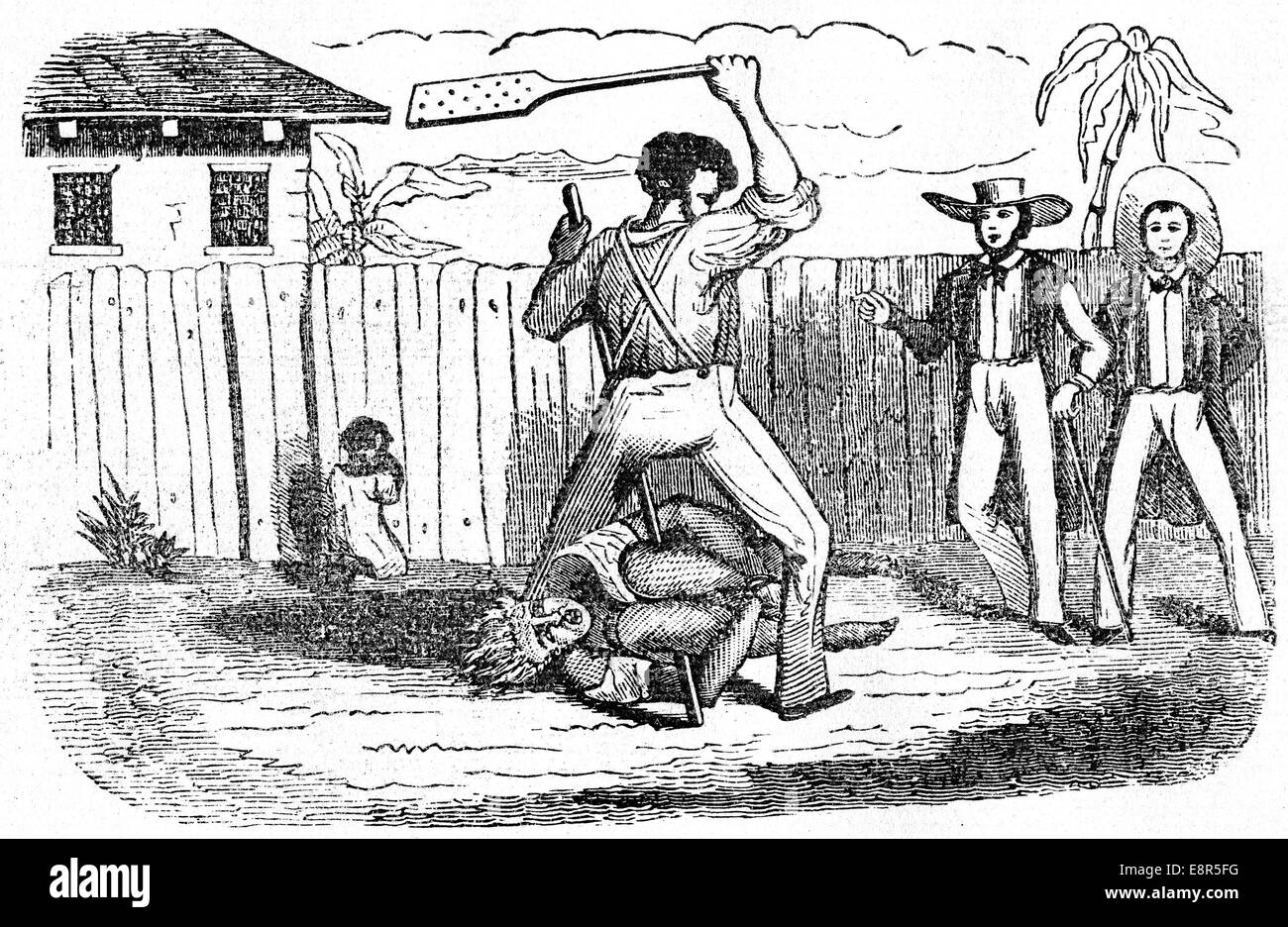 SLAVERY Punishment with the 'paddle' on a West Indian plantation about 1810 Stock Photohttps://www.alamy.com/image-license-details/?v=1https://www.alamy.com/stock-photo-slavery-punishment-with-the-paddle-on-a-west-indian-plantation-about-74267972.html
SLAVERY Punishment with the 'paddle' on a West Indian plantation about 1810 Stock Photohttps://www.alamy.com/image-license-details/?v=1https://www.alamy.com/stock-photo-slavery-punishment-with-the-paddle-on-a-west-indian-plantation-about-74267972.htmlRME8R5FG–SLAVERY Punishment with the 'paddle' on a West Indian plantation about 1810
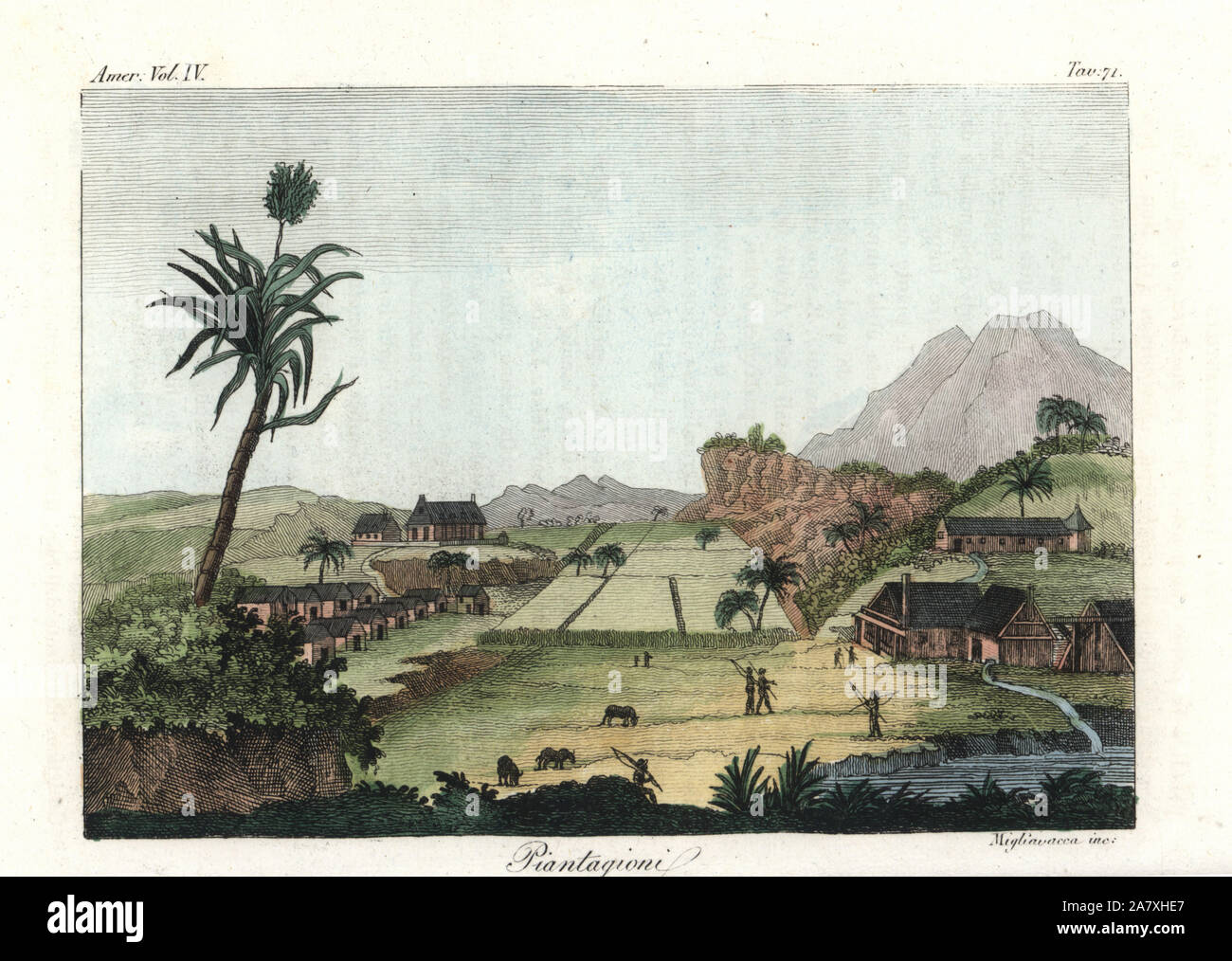 African slaves working on a sugarcane plantation in the West Indies. Handcoloured copperplate engraving by Migliavacca from Giulio Ferrrario's Costumes Antique and Modern of All Peoples (Il Costume Antico e Moderno di Tutti i Popoli), Florence, 1842. Stock Photohttps://www.alamy.com/image-license-details/?v=1https://www.alamy.com/african-slaves-working-on-a-sugarcane-plantation-in-the-west-indies-handcoloured-copperplate-engraving-by-migliavacca-from-giulio-ferrrarios-costumes-antique-and-modern-of-all-peoples-il-costume-antico-e-moderno-di-tutti-i-popoli-florence-1842-image331884063.html
African slaves working on a sugarcane plantation in the West Indies. Handcoloured copperplate engraving by Migliavacca from Giulio Ferrrario's Costumes Antique and Modern of All Peoples (Il Costume Antico e Moderno di Tutti i Popoli), Florence, 1842. Stock Photohttps://www.alamy.com/image-license-details/?v=1https://www.alamy.com/african-slaves-working-on-a-sugarcane-plantation-in-the-west-indies-handcoloured-copperplate-engraving-by-migliavacca-from-giulio-ferrrarios-costumes-antique-and-modern-of-all-peoples-il-costume-antico-e-moderno-di-tutti-i-popoli-florence-1842-image331884063.htmlRM2A7XHE7–African slaves working on a sugarcane plantation in the West Indies. Handcoloured copperplate engraving by Migliavacca from Giulio Ferrrario's Costumes Antique and Modern of All Peoples (Il Costume Antico e Moderno di Tutti i Popoli), Florence, 1842.
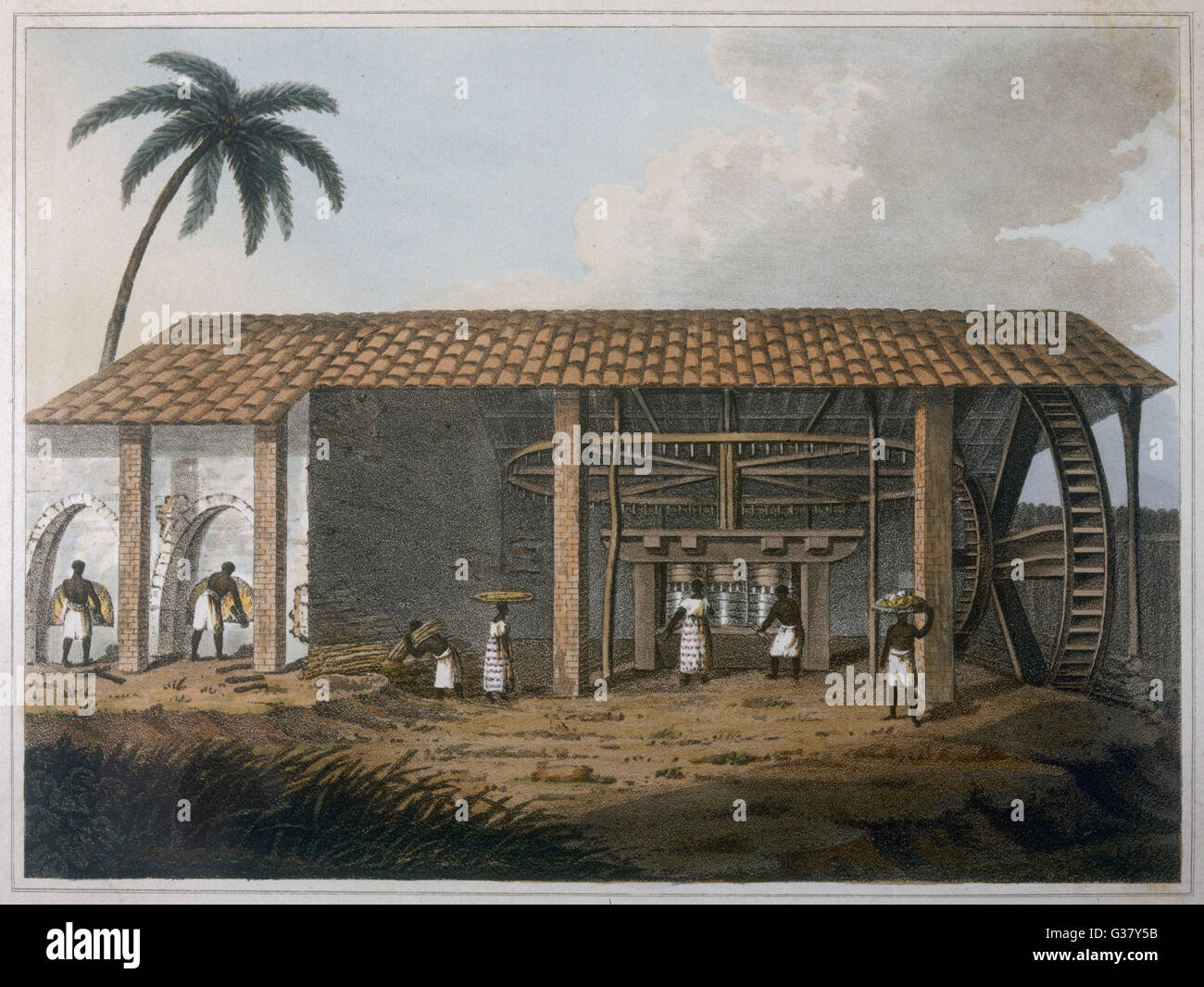 Slaves working in a Sugar Mill in the West Indies. Date: 1816 Stock Photohttps://www.alamy.com/image-license-details/?v=1https://www.alamy.com/stock-photo-slaves-working-in-a-sugar-mill-in-the-west-indies-date-1816-105281159.html
Slaves working in a Sugar Mill in the West Indies. Date: 1816 Stock Photohttps://www.alamy.com/image-license-details/?v=1https://www.alamy.com/stock-photo-slaves-working-in-a-sugar-mill-in-the-west-indies-date-1816-105281159.htmlRMG37Y5B–Slaves working in a Sugar Mill in the West Indies. Date: 1816
 Sugar factory in the West Indies c. 1670 Stock Photohttps://www.alamy.com/image-license-details/?v=1https://www.alamy.com/stock-photo-sugar-factory-in-the-west-indies-c-1670-83329861.html
Sugar factory in the West Indies c. 1670 Stock Photohttps://www.alamy.com/image-license-details/?v=1https://www.alamy.com/stock-photo-sugar-factory-in-the-west-indies-c-1670-83329861.htmlRMERG02D–Sugar factory in the West Indies c. 1670
 Slavery West Indies Stock Photohttps://www.alamy.com/image-license-details/?v=1https://www.alamy.com/slavery-west-indies-image5073678.html
Slavery West Indies Stock Photohttps://www.alamy.com/image-license-details/?v=1https://www.alamy.com/slavery-west-indies-image5073678.htmlRMANJK0F–Slavery West Indies
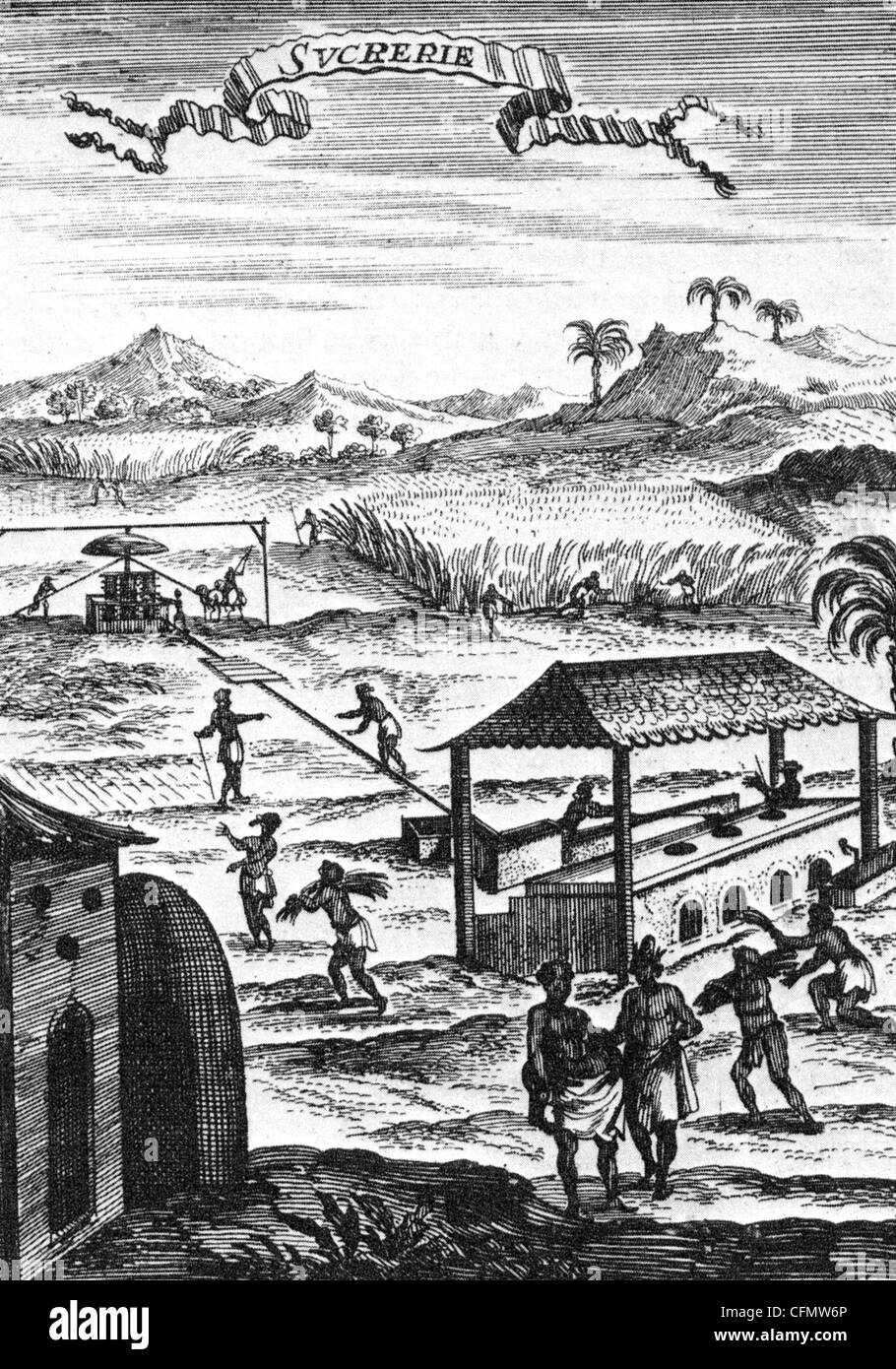 FRENCH SUGAR PLANTATION in the West Indies in 1683 Stock Photohttps://www.alamy.com/image-license-details/?v=1https://www.alamy.com/stock-photo-french-sugar-plantation-in-the-west-indies-in-1683-44099406.html
FRENCH SUGAR PLANTATION in the West Indies in 1683 Stock Photohttps://www.alamy.com/image-license-details/?v=1https://www.alamy.com/stock-photo-french-sugar-plantation-in-the-west-indies-in-1683-44099406.htmlRMCFMW6P–FRENCH SUGAR PLANTATION in the West Indies in 1683
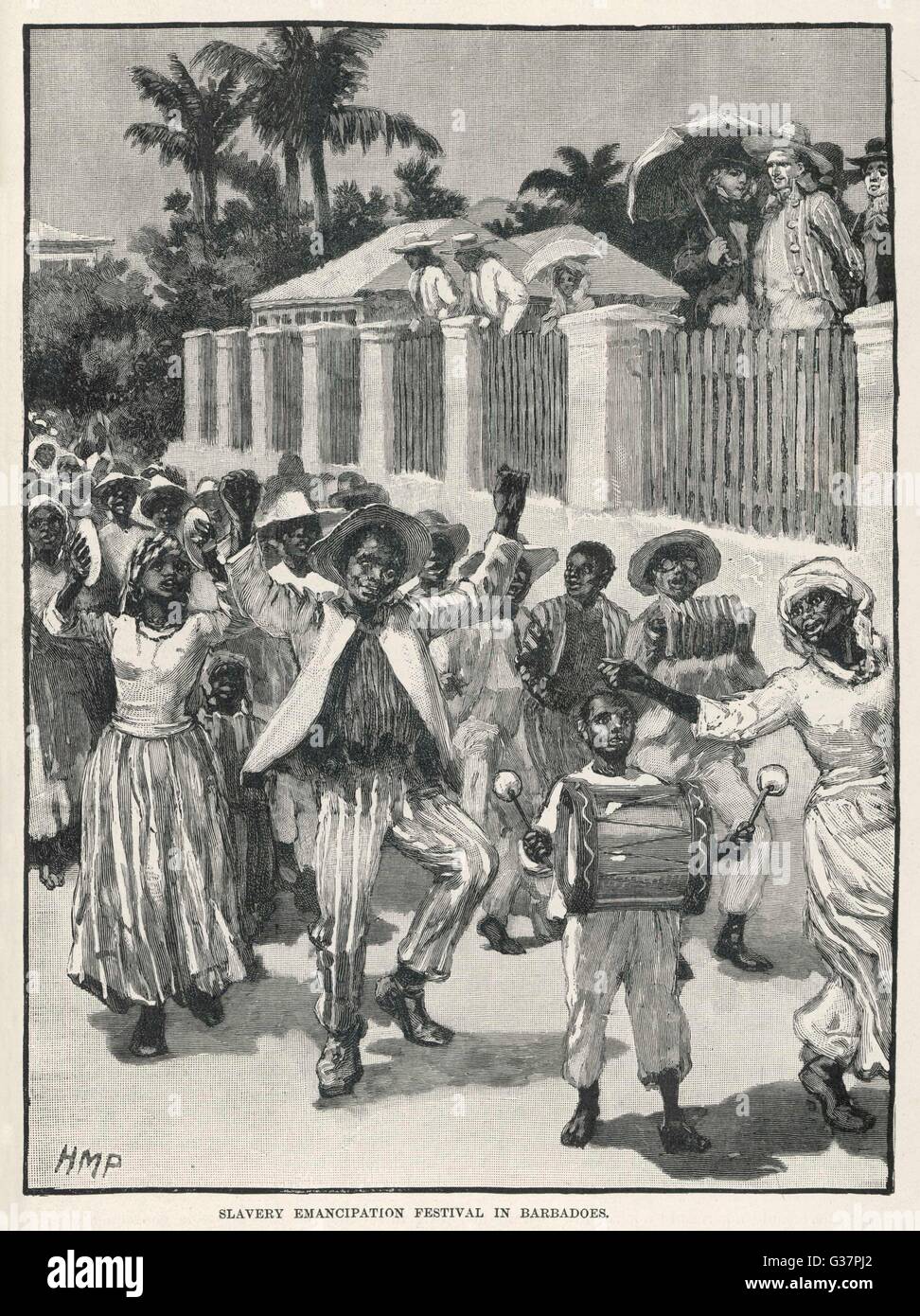 SLAVERY/WEST INDIES Stock Photohttps://www.alamy.com/image-license-details/?v=1https://www.alamy.com/stock-photo-slaverywest-indies-105277594.html
SLAVERY/WEST INDIES Stock Photohttps://www.alamy.com/image-license-details/?v=1https://www.alamy.com/stock-photo-slaverywest-indies-105277594.htmlRMG37PJ2–SLAVERY/WEST INDIES
![Slaves in Barbadoes [Barbados] from the book ' A voyage in the West Indies: : containing various observations made during a residence in Barbadoes, and several of the Leeward Islands; with some notices and illustrations relative to the city of Paramarabo, in Surinam. With engravings. ' by Waller, John Augustine Published in London: Printed for Sir Richard Phillips and Co. Bride Court, Bridge Street; and to be had of all booksellers. in 1820 Stock Photo Slaves in Barbadoes [Barbados] from the book ' A voyage in the West Indies: : containing various observations made during a residence in Barbadoes, and several of the Leeward Islands; with some notices and illustrations relative to the city of Paramarabo, in Surinam. With engravings. ' by Waller, John Augustine Published in London: Printed for Sir Richard Phillips and Co. Bride Court, Bridge Street; and to be had of all booksellers. in 1820 Stock Photo](https://c8.alamy.com/comp/2GE6NGT/slaves-in-barbadoes-barbados-from-the-book-a-voyage-in-the-west-indies-containing-various-observations-made-during-a-residence-in-barbadoes-and-several-of-the-leeward-islands-with-some-notices-and-illustrations-relative-to-the-city-of-paramarabo-in-surinam-with-engravings-by-waller-john-augustine-published-in-london-printed-for-sir-richard-phillips-and-co-bride-court-bridge-street-and-to-be-had-of-all-booksellers-in-1820-2GE6NGT.jpg) Slaves in Barbadoes [Barbados] from the book ' A voyage in the West Indies: : containing various observations made during a residence in Barbadoes, and several of the Leeward Islands; with some notices and illustrations relative to the city of Paramarabo, in Surinam. With engravings. ' by Waller, John Augustine Published in London: Printed for Sir Richard Phillips and Co. Bride Court, Bridge Street; and to be had of all booksellers. in 1820 Stock Photohttps://www.alamy.com/image-license-details/?v=1https://www.alamy.com/slaves-in-barbadoes-barbados-from-the-book-a-voyage-in-the-west-indies-containing-various-observations-made-during-a-residence-in-barbadoes-and-several-of-the-leeward-islands-with-some-notices-and-illustrations-relative-to-the-city-of-paramarabo-in-surinam-with-engravings-by-waller-john-augustine-published-in-london-printed-for-sir-richard-phillips-and-co-bride-court-bridge-street-and-to-be-had-of-all-booksellers-in-1820-image439013032.html
Slaves in Barbadoes [Barbados] from the book ' A voyage in the West Indies: : containing various observations made during a residence in Barbadoes, and several of the Leeward Islands; with some notices and illustrations relative to the city of Paramarabo, in Surinam. With engravings. ' by Waller, John Augustine Published in London: Printed for Sir Richard Phillips and Co. Bride Court, Bridge Street; and to be had of all booksellers. in 1820 Stock Photohttps://www.alamy.com/image-license-details/?v=1https://www.alamy.com/slaves-in-barbadoes-barbados-from-the-book-a-voyage-in-the-west-indies-containing-various-observations-made-during-a-residence-in-barbadoes-and-several-of-the-leeward-islands-with-some-notices-and-illustrations-relative-to-the-city-of-paramarabo-in-surinam-with-engravings-by-waller-john-augustine-published-in-london-printed-for-sir-richard-phillips-and-co-bride-court-bridge-street-and-to-be-had-of-all-booksellers-in-1820-image439013032.htmlRM2GE6NGT–Slaves in Barbadoes [Barbados] from the book ' A voyage in the West Indies: : containing various observations made during a residence in Barbadoes, and several of the Leeward Islands; with some notices and illustrations relative to the city of Paramarabo, in Surinam. With engravings. ' by Waller, John Augustine Published in London: Printed for Sir Richard Phillips and Co. Bride Court, Bridge Street; and to be had of all booksellers. in 1820
 Slavery - West Indies Stock Photohttps://www.alamy.com/image-license-details/?v=1https://www.alamy.com/stock-photo-slavery-west-indies-56693999.html
Slavery - West Indies Stock Photohttps://www.alamy.com/image-license-details/?v=1https://www.alamy.com/stock-photo-slavery-west-indies-56693999.htmlRMD86HNK–Slavery - West Indies
 The emancipation of slaves on a West Indian plantation, early 19th century (c1895). Artist: Unknown Stock Photohttps://www.alamy.com/image-license-details/?v=1https://www.alamy.com/the-emancipation-of-slaves-on-a-west-indian-plantation-early-19th-century-c1895-artist-unknown-image262757251.html
The emancipation of slaves on a West Indian plantation, early 19th century (c1895). Artist: Unknown Stock Photohttps://www.alamy.com/image-license-details/?v=1https://www.alamy.com/the-emancipation-of-slaves-on-a-west-indian-plantation-early-19th-century-c1895-artist-unknown-image262757251.htmlRMW7DHFF–The emancipation of slaves on a West Indian plantation, early 19th century (c1895). Artist: Unknown
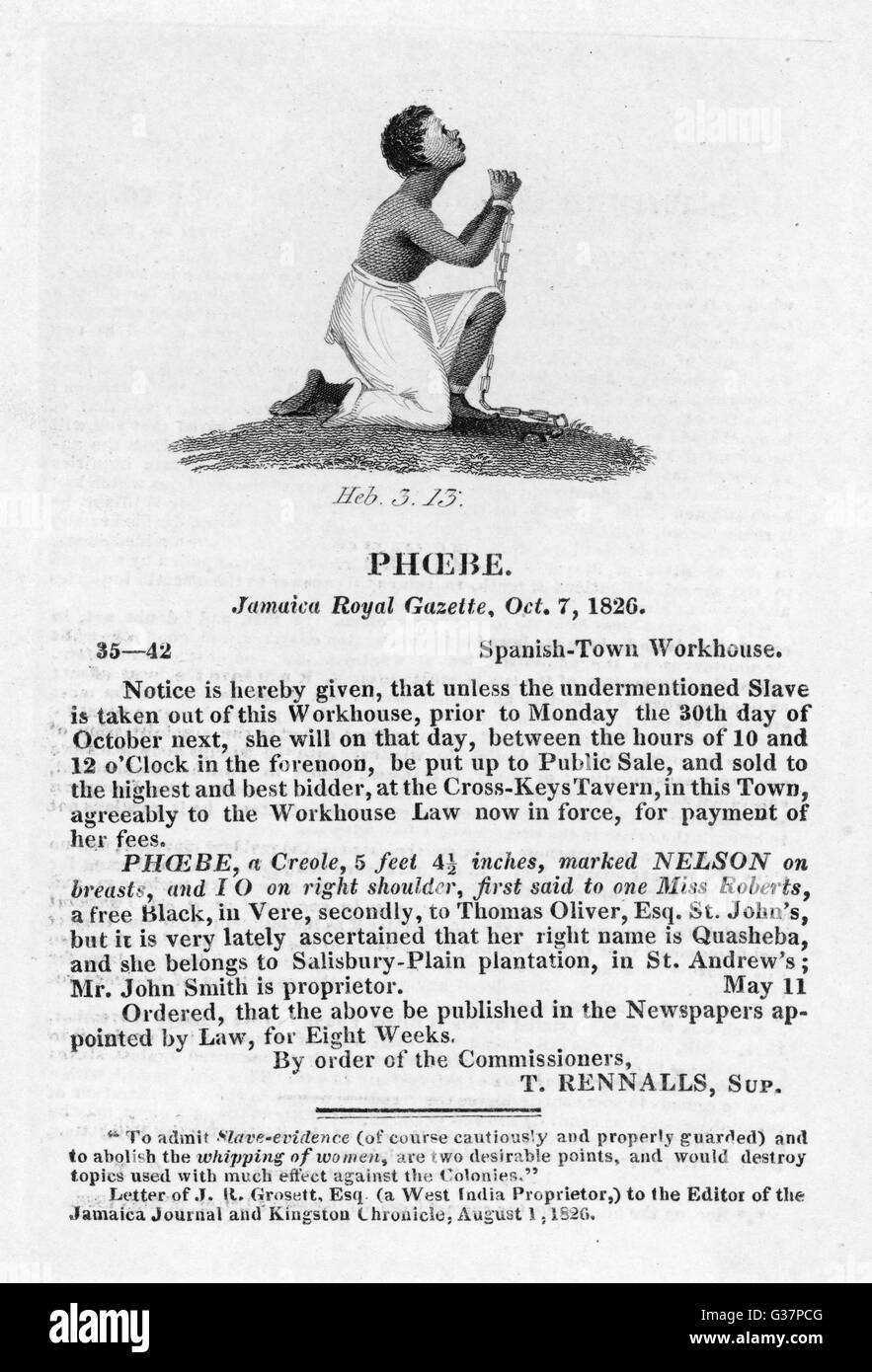 SLAVERY/WEST INDIES Stock Photohttps://www.alamy.com/image-license-details/?v=1https://www.alamy.com/stock-photo-slaverywest-indies-105277440.html
SLAVERY/WEST INDIES Stock Photohttps://www.alamy.com/image-license-details/?v=1https://www.alamy.com/stock-photo-slaverywest-indies-105277440.htmlRMG37PCG–SLAVERY/WEST INDIES
 WEST INDIES: Indigofera planter & slaves. Indigo dye. 'Indigotoire'. MALLET 1683 Stock Photohttps://www.alamy.com/image-license-details/?v=1https://www.alamy.com/stock-photo-west-indies-indigofera-planter-slaves-indigo-dye-indigotoire-mallet-102711179.html
WEST INDIES: Indigofera planter & slaves. Indigo dye. 'Indigotoire'. MALLET 1683 Stock Photohttps://www.alamy.com/image-license-details/?v=1https://www.alamy.com/stock-photo-west-indies-indigofera-planter-slaves-indigo-dye-indigotoire-mallet-102711179.htmlRFFY2W4B–WEST INDIES: Indigofera planter & slaves. Indigo dye. 'Indigotoire'. MALLET 1683
 The Women of Martinique, West Indies Stock Photohttps://www.alamy.com/image-license-details/?v=1https://www.alamy.com/the-women-of-martinique-west-indies-image66070146.html
The Women of Martinique, West Indies Stock Photohttps://www.alamy.com/image-license-details/?v=1https://www.alamy.com/the-women-of-martinique-west-indies-image66070146.htmlRMDRDN42–The Women of Martinique, West Indies
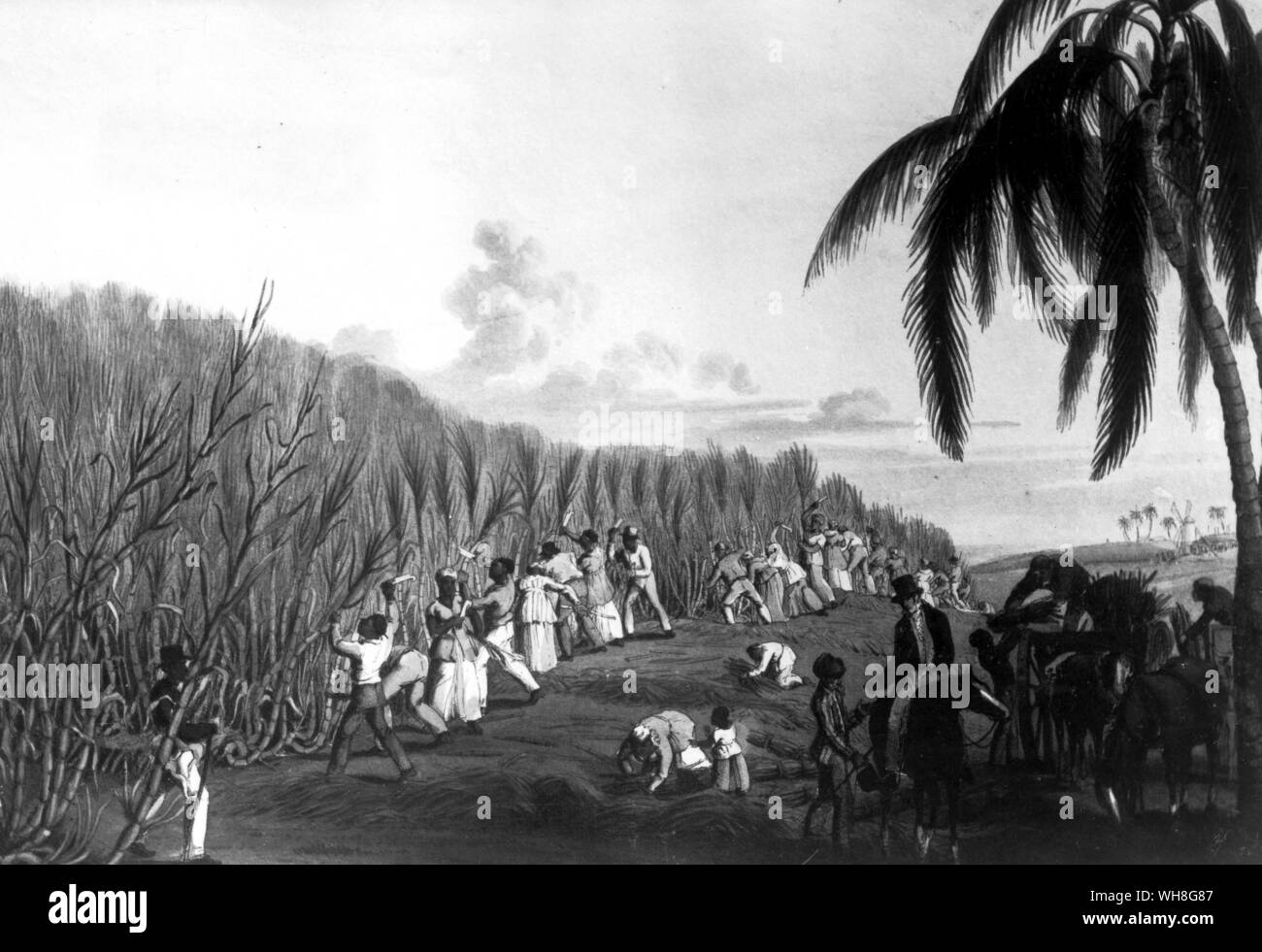 Slaves cutting sugar cane on Delap's estate on the West Indian Island of Antigua. Stock Photohttps://www.alamy.com/image-license-details/?v=1https://www.alamy.com/slaves-cutting-sugar-cane-on-delaps-estate-on-the-west-indian-island-of-antigua-image268793063.html
Slaves cutting sugar cane on Delap's estate on the West Indian Island of Antigua. Stock Photohttps://www.alamy.com/image-license-details/?v=1https://www.alamy.com/slaves-cutting-sugar-cane-on-delaps-estate-on-the-west-indian-island-of-antigua-image268793063.htmlRMWH8G87–Slaves cutting sugar cane on Delap's estate on the West Indian Island of Antigua.
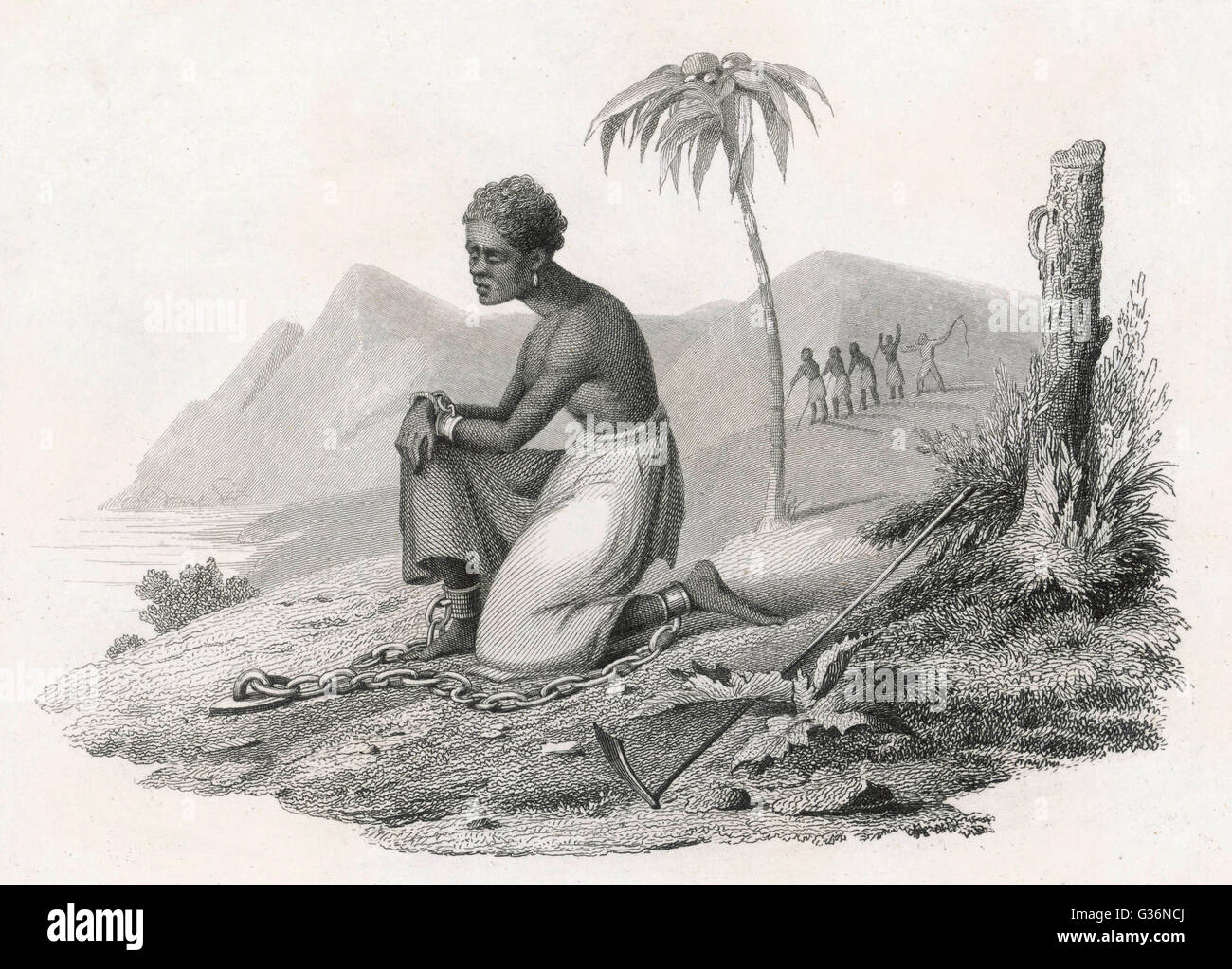 Slave in chains in the West Indies Stock Photohttps://www.alamy.com/image-license-details/?v=1https://www.alamy.com/stock-photo-slave-in-chains-in-the-west-indies-105254706.html
Slave in chains in the West Indies Stock Photohttps://www.alamy.com/image-license-details/?v=1https://www.alamy.com/stock-photo-slave-in-chains-in-the-west-indies-105254706.htmlRMG36NCJ–Slave in chains in the West Indies
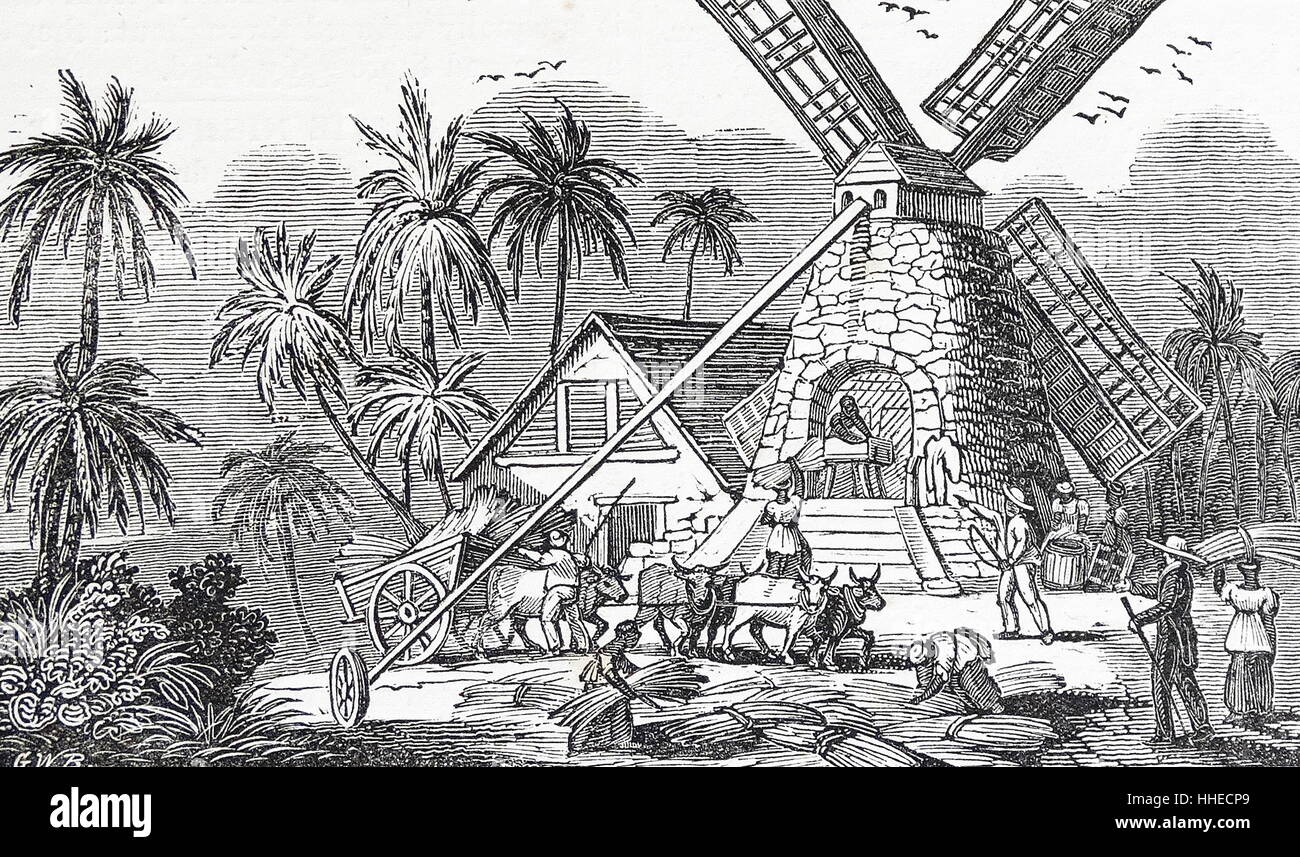 West Indies: Slaves carting sugar cane to the mill where it was crushed and the juice expressed 1833 Stock Photohttps://www.alamy.com/image-license-details/?v=1https://www.alamy.com/stock-photo-west-indies-slaves-carting-sugar-cane-to-the-mill-where-it-was-crushed-131239089.html
West Indies: Slaves carting sugar cane to the mill where it was crushed and the juice expressed 1833 Stock Photohttps://www.alamy.com/image-license-details/?v=1https://www.alamy.com/stock-photo-west-indies-slaves-carting-sugar-cane-to-the-mill-where-it-was-crushed-131239089.htmlRMHHECP9–West Indies: Slaves carting sugar cane to the mill where it was crushed and the juice expressed 1833
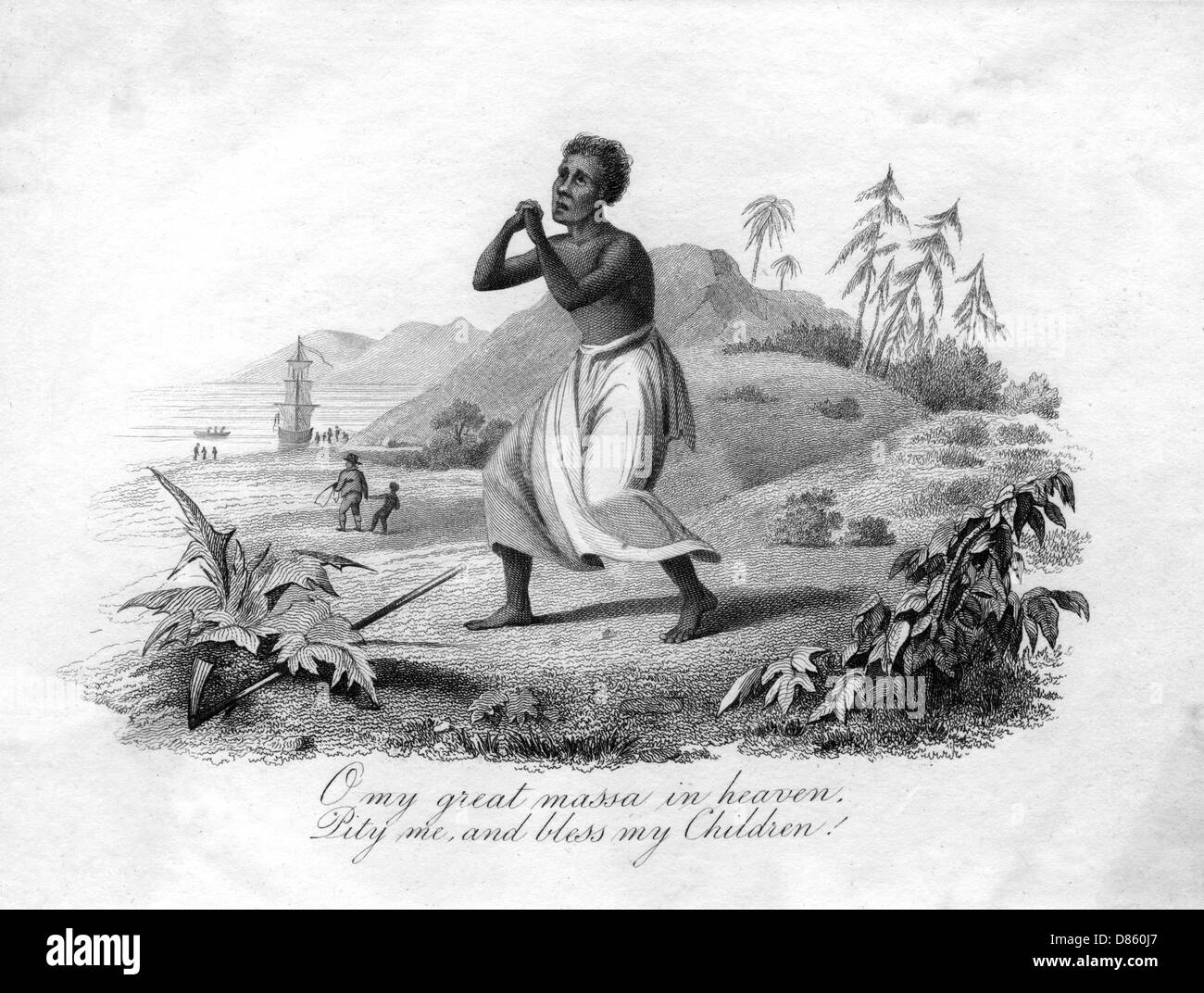 Slave praying in the West Indies Stock Photohttps://www.alamy.com/image-license-details/?v=1https://www.alamy.com/stock-photo-slave-praying-in-the-west-indies-56680575.html
Slave praying in the West Indies Stock Photohttps://www.alamy.com/image-license-details/?v=1https://www.alamy.com/stock-photo-slave-praying-in-the-west-indies-56680575.htmlRMD860J7–Slave praying in the West Indies
 Slaves cultivating sugar cane in the West Indies. Hand-coloured wood engraving from Grandfather Grey 'The Wonders of Home' London, 1852. Stock Photohttps://www.alamy.com/image-license-details/?v=1https://www.alamy.com/stock-photo-slaves-cultivating-sugar-cane-in-the-west-indies-hand-coloured-wood-57308387.html
Slaves cultivating sugar cane in the West Indies. Hand-coloured wood engraving from Grandfather Grey 'The Wonders of Home' London, 1852. Stock Photohttps://www.alamy.com/image-license-details/?v=1https://www.alamy.com/stock-photo-slaves-cultivating-sugar-cane-in-the-west-indies-hand-coloured-wood-57308387.htmlRMD96HC3–Slaves cultivating sugar cane in the West Indies. Hand-coloured wood engraving from Grandfather Grey 'The Wonders of Home' London, 1852.
 Enslaved mother and child in the West Indies Stock Photohttps://www.alamy.com/image-license-details/?v=1https://www.alamy.com/stock-photo-enslaved-mother-and-child-in-the-west-indies-56680572.html
Enslaved mother and child in the West Indies Stock Photohttps://www.alamy.com/image-license-details/?v=1https://www.alamy.com/stock-photo-enslaved-mother-and-child-in-the-west-indies-56680572.htmlRMD860J4–Enslaved mother and child in the West Indies
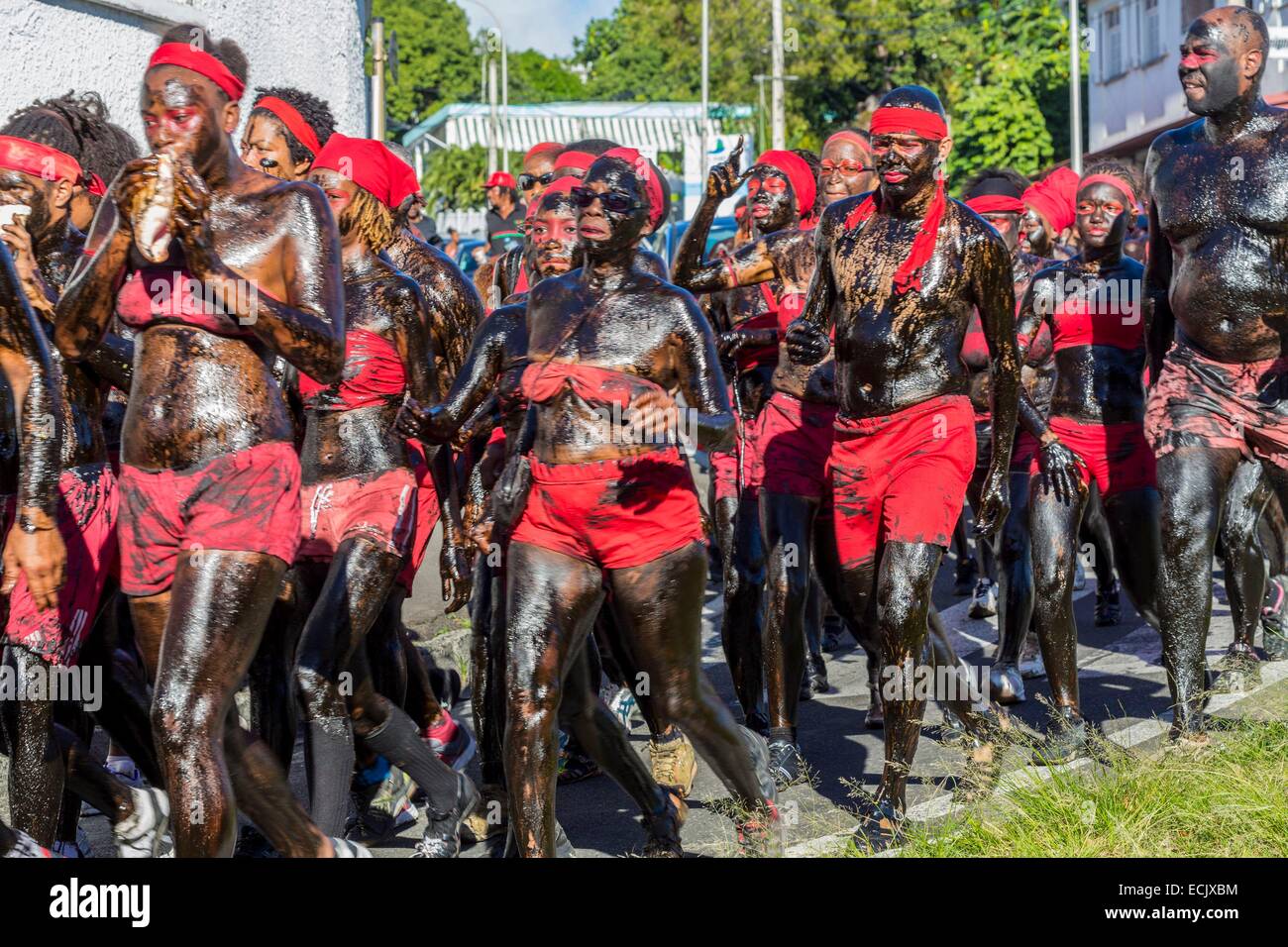 France, Guadeloupe (French West Indies), Basse Terre, Carnival (introduced by settlers in the 17th century), carnival group disguised as slaves in the parade Stock Photohttps://www.alamy.com/image-license-details/?v=1https://www.alamy.com/stock-photo-france-guadeloupe-french-west-indies-basse-terre-carnival-introduced-76633192.html
France, Guadeloupe (French West Indies), Basse Terre, Carnival (introduced by settlers in the 17th century), carnival group disguised as slaves in the parade Stock Photohttps://www.alamy.com/image-license-details/?v=1https://www.alamy.com/stock-photo-france-guadeloupe-french-west-indies-basse-terre-carnival-introduced-76633192.htmlRMECJXBM–France, Guadeloupe (French West Indies), Basse Terre, Carnival (introduced by settlers in the 17th century), carnival group disguised as slaves in the parade
 West Indian Plantation - Slaves Receiving News Of Their Emancipation Stock Photohttps://www.alamy.com/image-license-details/?v=1https://www.alamy.com/west-indian-plantation-slaves-receiving-news-of-their-emancipation-image504916473.html
West Indian Plantation - Slaves Receiving News Of Their Emancipation Stock Photohttps://www.alamy.com/image-license-details/?v=1https://www.alamy.com/west-indian-plantation-slaves-receiving-news-of-their-emancipation-image504916473.htmlRM2M9CX35–West Indian Plantation - Slaves Receiving News Of Their Emancipation
 Sugar production in the West Indies in the 17th century used an evaporating furnace (left), grinding mill driven by oxen (right), dwellings for the black workers (lower right), and a large plantation house (upper right). Afro-Caribbean slaves are supervised by an overseer with a stick. Stock Photohttps://www.alamy.com/image-license-details/?v=1https://www.alamy.com/stock-photo-sugar-production-in-the-west-indies-in-the-17th-century-used-an-evaporating-32391063.html
Sugar production in the West Indies in the 17th century used an evaporating furnace (left), grinding mill driven by oxen (right), dwellings for the black workers (lower right), and a large plantation house (upper right). Afro-Caribbean slaves are supervised by an overseer with a stick. Stock Photohttps://www.alamy.com/image-license-details/?v=1https://www.alamy.com/stock-photo-sugar-production-in-the-west-indies-in-the-17th-century-used-an-evaporating-32391063.htmlRMBTKF3K–Sugar production in the West Indies in the 17th century used an evaporating furnace (left), grinding mill driven by oxen (right), dwellings for the black workers (lower right), and a large plantation house (upper right). Afro-Caribbean slaves are supervised by an overseer with a stick.
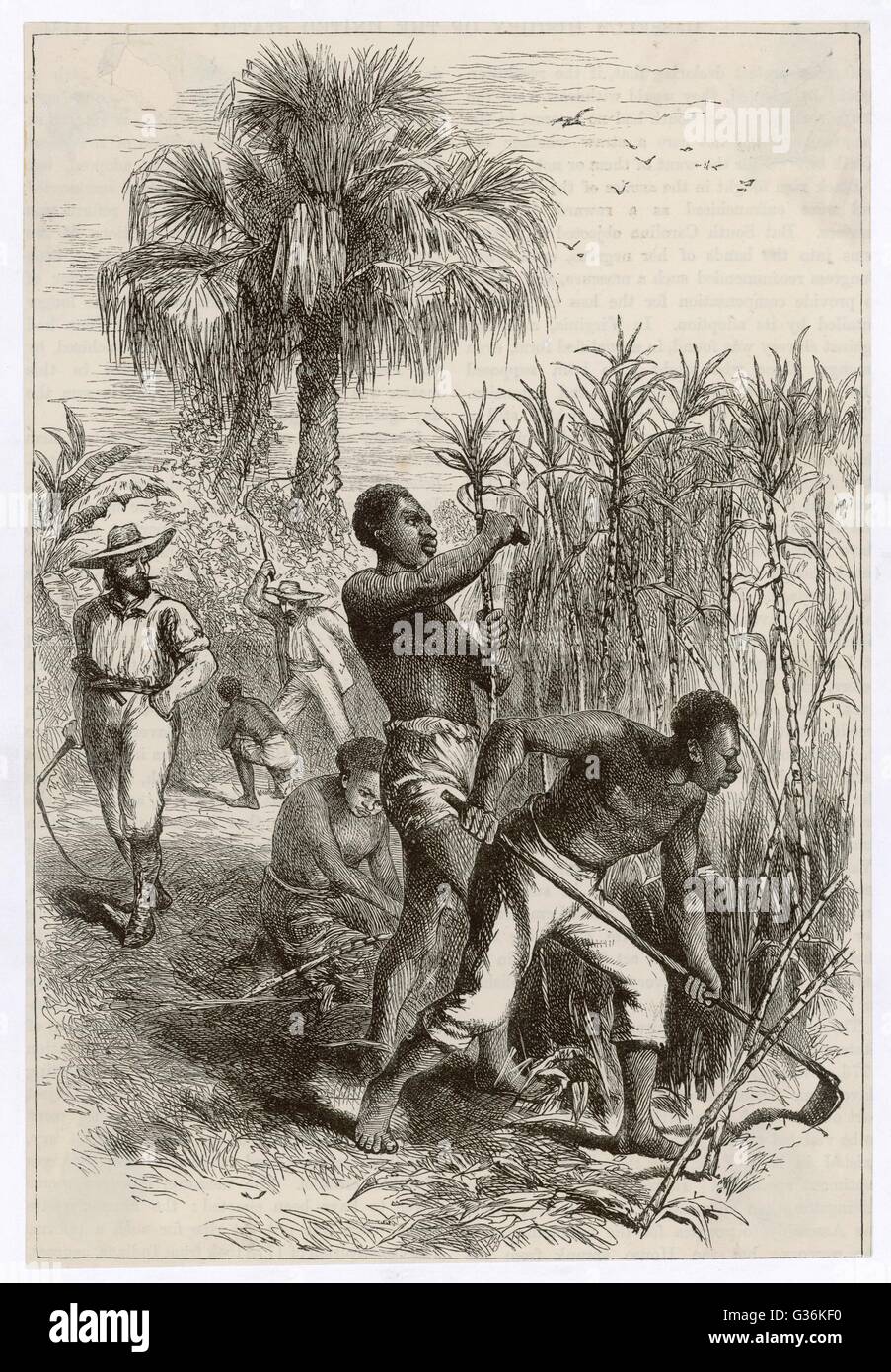 Slaves working on a West Indian sugar plantation Date: circa 1870 Stock Photohttps://www.alamy.com/image-license-details/?v=1https://www.alamy.com/stock-photo-slaves-working-on-a-west-indian-sugar-plantation-date-circa-1870-105253204.html
Slaves working on a West Indian sugar plantation Date: circa 1870 Stock Photohttps://www.alamy.com/image-license-details/?v=1https://www.alamy.com/stock-photo-slaves-working-on-a-west-indian-sugar-plantation-date-circa-1870-105253204.htmlRMG36KF0–Slaves working on a West Indian sugar plantation Date: circa 1870
 France, Martinique (French West Indies), Le Marin, mural representing the punishment of slaves Stock Photohttps://www.alamy.com/image-license-details/?v=1https://www.alamy.com/stock-photo-france-martinique-french-west-indies-le-marin-mural-representing-the-48739896.html
France, Martinique (French West Indies), Le Marin, mural representing the punishment of slaves Stock Photohttps://www.alamy.com/image-license-details/?v=1https://www.alamy.com/stock-photo-france-martinique-french-west-indies-le-marin-mural-representing-the-48739896.htmlRMCR886G–France, Martinique (French West Indies), Le Marin, mural representing the punishment of slaves
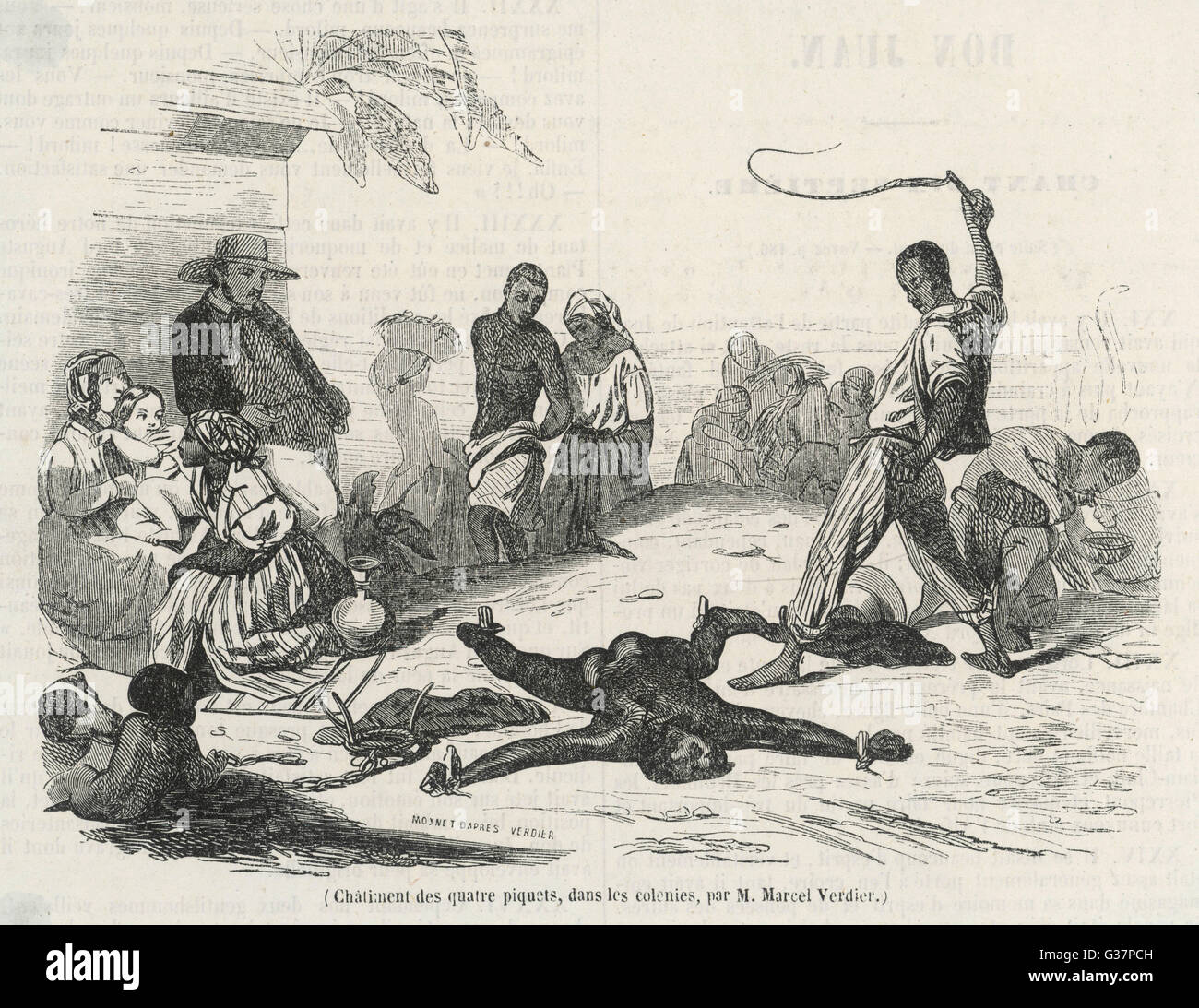 French West Indies : punishment of the 'four pegs' inflicted on a slave who didn't do as his master wished him to do Date: 1843 Stock Photohttps://www.alamy.com/image-license-details/?v=1https://www.alamy.com/stock-photo-french-west-indies-punishment-of-the-four-pegs-inflicted-on-a-slave-105277441.html
French West Indies : punishment of the 'four pegs' inflicted on a slave who didn't do as his master wished him to do Date: 1843 Stock Photohttps://www.alamy.com/image-license-details/?v=1https://www.alamy.com/stock-photo-french-west-indies-punishment-of-the-four-pegs-inflicted-on-a-slave-105277441.htmlRMG37PCH–French West Indies : punishment of the 'four pegs' inflicted on a slave who didn't do as his master wished him to do Date: 1843
 SUGAR CANE mill operated by slaves in a French West Indies colony in a 17th century engraving. Stock Photohttps://www.alamy.com/image-license-details/?v=1https://www.alamy.com/stock-photo-sugar-cane-mill-operated-by-slaves-in-a-french-west-indies-colony-26117219.html
SUGAR CANE mill operated by slaves in a French West Indies colony in a 17th century engraving. Stock Photohttps://www.alamy.com/image-license-details/?v=1https://www.alamy.com/stock-photo-sugar-cane-mill-operated-by-slaves-in-a-french-west-indies-colony-26117219.htmlRMBEDMNR–SUGAR CANE mill operated by slaves in a French West Indies colony in a 17th century engraving.
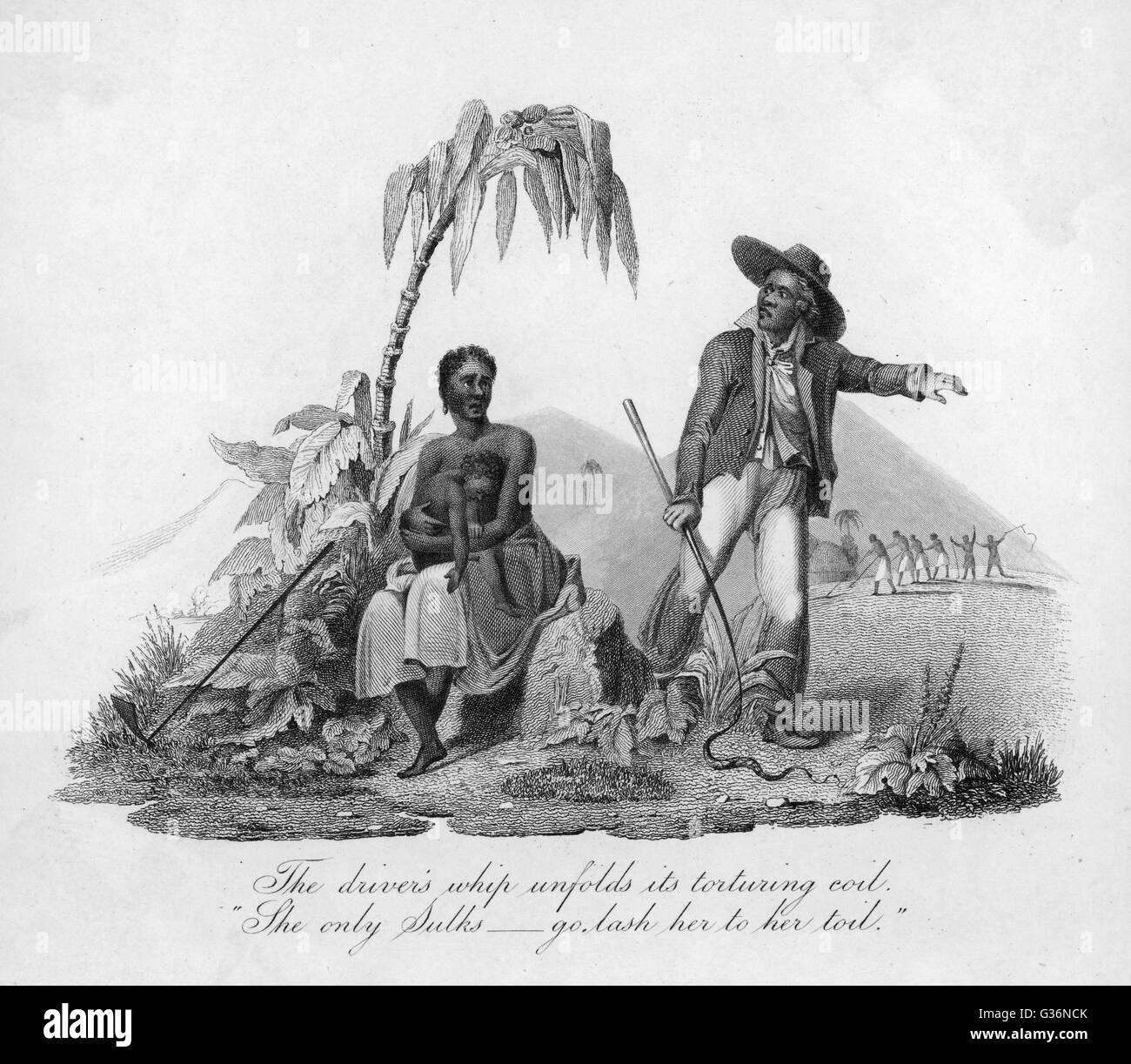 An enslaved mother in the West Indies with her child in her lap is urged to work by the slave driver. 'The driver's whip unfolds its torturing evil.' Date: circa 1835 Stock Photohttps://www.alamy.com/image-license-details/?v=1https://www.alamy.com/stock-photo-an-enslaved-mother-in-the-west-indies-with-her-child-in-her-lap-is-105254707.html
An enslaved mother in the West Indies with her child in her lap is urged to work by the slave driver. 'The driver's whip unfolds its torturing evil.' Date: circa 1835 Stock Photohttps://www.alamy.com/image-license-details/?v=1https://www.alamy.com/stock-photo-an-enslaved-mother-in-the-west-indies-with-her-child-in-her-lap-is-105254707.htmlRMG36NCK–An enslaved mother in the West Indies with her child in her lap is urged to work by the slave driver. 'The driver's whip unfolds its torturing evil.' Date: circa 1835
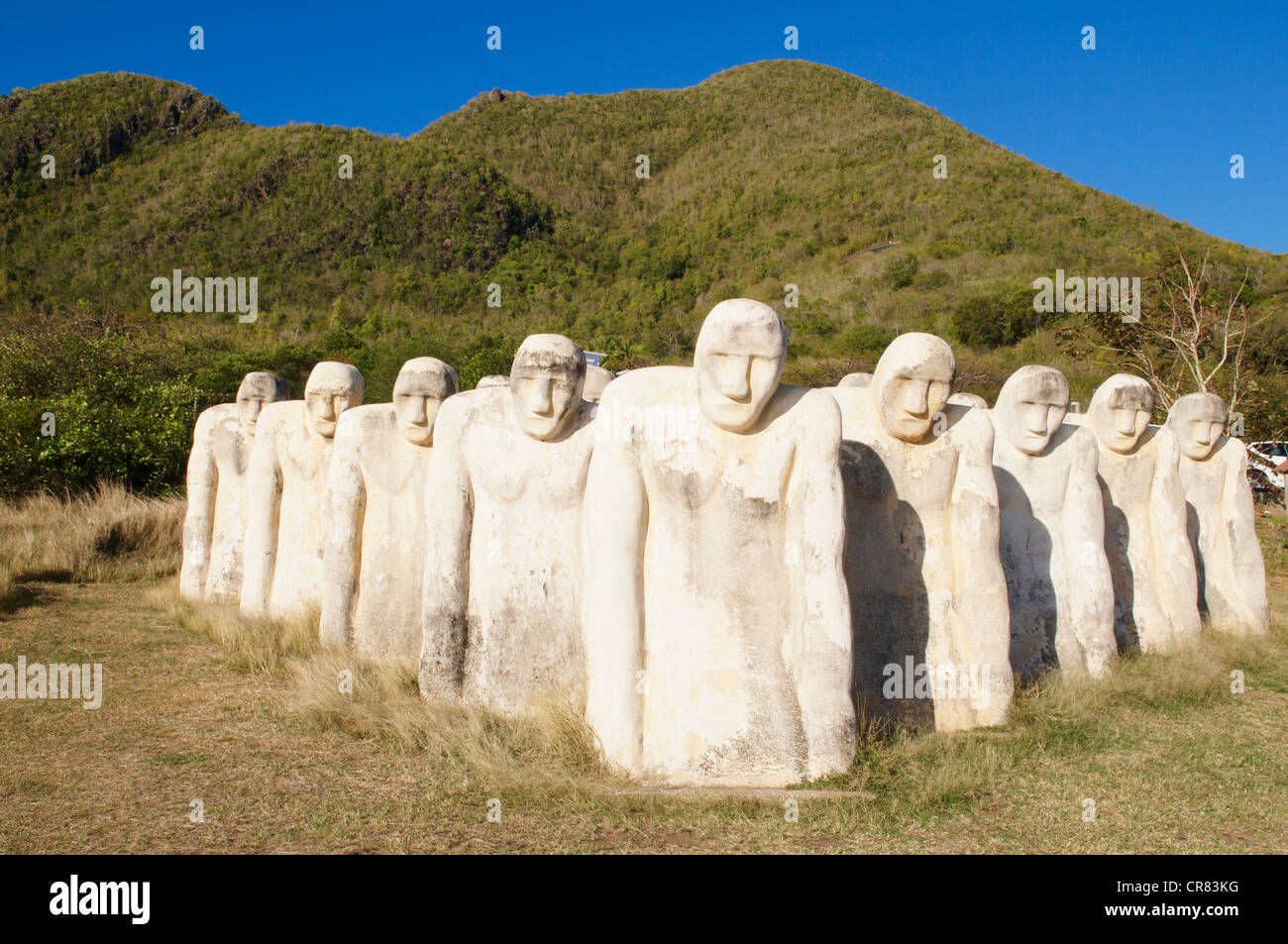 France, Martinique (French West Indies), Le Diamant, Anse Cafard memorial symbolizing the drowning of the slaves in the Stock Photohttps://www.alamy.com/image-license-details/?v=1https://www.alamy.com/stock-photo-france-martinique-french-west-indies-le-diamant-anse-cafard-memorial-48736340.html
France, Martinique (French West Indies), Le Diamant, Anse Cafard memorial symbolizing the drowning of the slaves in the Stock Photohttps://www.alamy.com/image-license-details/?v=1https://www.alamy.com/stock-photo-france-martinique-french-west-indies-le-diamant-anse-cafard-memorial-48736340.htmlRMCR83KG–France, Martinique (French West Indies), Le Diamant, Anse Cafard memorial symbolizing the drowning of the slaves in the
 Slavery West Indies Stock Photohttps://www.alamy.com/image-license-details/?v=1https://www.alamy.com/slavery-west-indies-image5073575.html
Slavery West Indies Stock Photohttps://www.alamy.com/image-license-details/?v=1https://www.alamy.com/slavery-west-indies-image5073575.htmlRMANJJA8–Slavery West Indies
 Memorial for drowned slaves, Anse Cafard, Le Diamant, Martinique, Windward Islands, West Indies, Caribbean Stock Photohttps://www.alamy.com/image-license-details/?v=1https://www.alamy.com/stock-photo-memorial-for-drowned-slaves-anse-cafard-le-diamant-martinique-windward-43942950.html
Memorial for drowned slaves, Anse Cafard, Le Diamant, Martinique, Windward Islands, West Indies, Caribbean Stock Photohttps://www.alamy.com/image-license-details/?v=1https://www.alamy.com/stock-photo-memorial-for-drowned-slaves-anse-cafard-le-diamant-martinique-windward-43942950.htmlRMCFDNK2–Memorial for drowned slaves, Anse Cafard, Le Diamant, Martinique, Windward Islands, West Indies, Caribbean
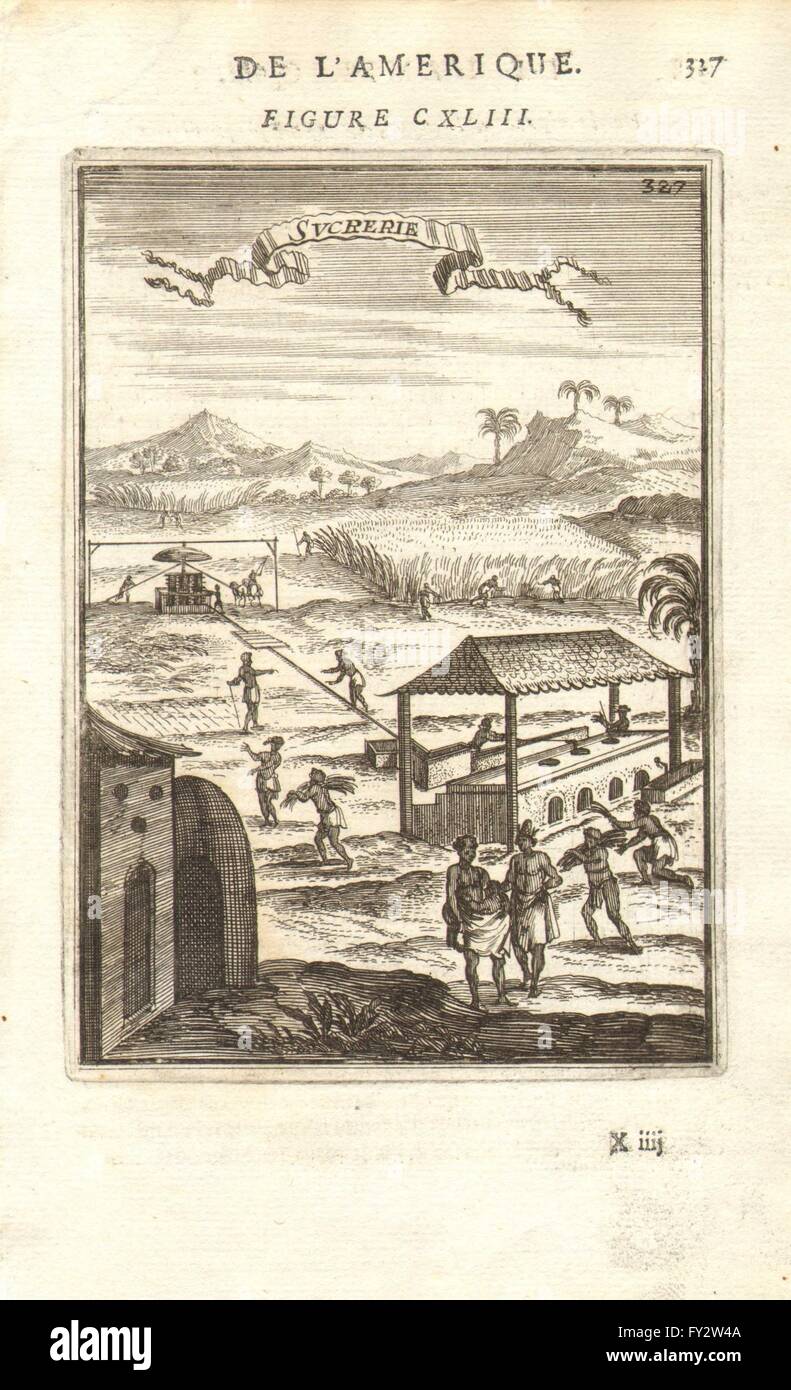 WEST INDIES: Sugarcane plantation & press/mill. Slaves. ' Sucrerie'. MALLET 1683 Stock Photohttps://www.alamy.com/image-license-details/?v=1https://www.alamy.com/stock-photo-west-indies-sugarcane-plantation-pressmill-slaves-sucrerie-mallet-102711178.html
WEST INDIES: Sugarcane plantation & press/mill. Slaves. ' Sucrerie'. MALLET 1683 Stock Photohttps://www.alamy.com/image-license-details/?v=1https://www.alamy.com/stock-photo-west-indies-sugarcane-plantation-pressmill-slaves-sucrerie-mallet-102711178.htmlRFFY2W4A–WEST INDIES: Sugarcane plantation & press/mill. Slaves. ' Sucrerie'. MALLET 1683
 An act to prevent the importation of slaves, by any of His Majesty's subjects, into any islands, colonies, plantations, or territories belonging to any foreign sovereign, state, or power; and also to render more effectual a certain order, made by His Majesty in council on the fifteenth day of August one thousand eight hundred and five, for prohibiting the importation of slaves (except in certain cases), into any of the settlements, islands, colonies, or plantations on the continent of America, or in the West Indies, which have been surrendered to His Majesty's arms during the present war Stock Photohttps://www.alamy.com/image-license-details/?v=1https://www.alamy.com/an-act-to-prevent-the-importation-of-slaves-by-any-of-his-majestys-subjects-into-any-islands-colonies-plantations-or-territories-belonging-to-any-foreign-sovereign-state-or-power-and-also-to-render-more-effectual-a-certain-order-made-by-his-majesty-in-council-on-the-fifteenth-day-of-august-one-thousand-eight-hundred-and-five-for-prohibiting-the-importation-of-slaves-except-in-certain-cases-into-any-of-the-settlements-islands-colonies-or-plantations-on-the-continent-of-america-or-in-the-west-indies-which-have-been-surrendered-to-his-majestys-arms-during-the-present-war-image376510496.html
An act to prevent the importation of slaves, by any of His Majesty's subjects, into any islands, colonies, plantations, or territories belonging to any foreign sovereign, state, or power; and also to render more effectual a certain order, made by His Majesty in council on the fifteenth day of August one thousand eight hundred and five, for prohibiting the importation of slaves (except in certain cases), into any of the settlements, islands, colonies, or plantations on the continent of America, or in the West Indies, which have been surrendered to His Majesty's arms during the present war Stock Photohttps://www.alamy.com/image-license-details/?v=1https://www.alamy.com/an-act-to-prevent-the-importation-of-slaves-by-any-of-his-majestys-subjects-into-any-islands-colonies-plantations-or-territories-belonging-to-any-foreign-sovereign-state-or-power-and-also-to-render-more-effectual-a-certain-order-made-by-his-majesty-in-council-on-the-fifteenth-day-of-august-one-thousand-eight-hundred-and-five-for-prohibiting-the-importation-of-slaves-except-in-certain-cases-into-any-of-the-settlements-islands-colonies-or-plantations-on-the-continent-of-america-or-in-the-west-indies-which-have-been-surrendered-to-his-majestys-arms-during-the-present-war-image376510496.htmlRM2CTFEYC–An act to prevent the importation of slaves, by any of His Majesty's subjects, into any islands, colonies, plantations, or territories belonging to any foreign sovereign, state, or power; and also to render more effectual a certain order, made by His Majesty in council on the fifteenth day of August one thousand eight hundred and five, for prohibiting the importation of slaves (except in certain cases), into any of the settlements, islands, colonies, or plantations on the continent of America, or in the West Indies, which have been surrendered to His Majesty's arms during the present war
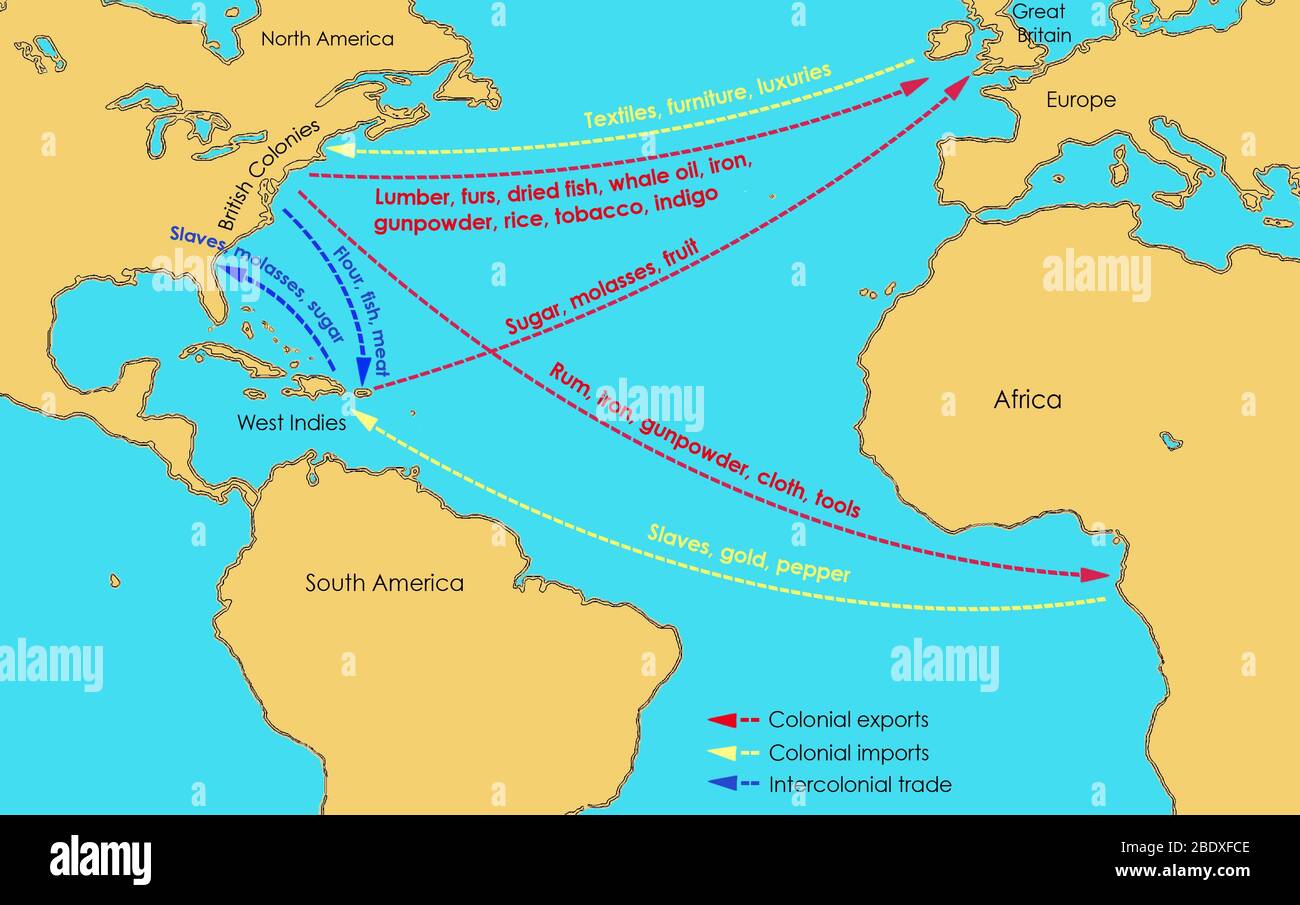 A map showing the flow of goods to and from the Thirteen British Colonies in North America in the 17th and 18th centuries. Britain exported manufactured goods, textiles, furniture, and luxuries to the Colonies; from the Colonies and the West Indies, they imported sugar, molases, fruit, lumber, furs, dried fish, whale oil, iron, gunpowder, rice, tobacco, and indigo. The Colonies exported rum, iron, gunpowder, cloth, and tools to Africa. Slaves, gold and pepper were transported from Africa, while intercolonial trade (to and from the West Indies and the Colonies) included slaves, molasses, sugar, Stock Photohttps://www.alamy.com/image-license-details/?v=1https://www.alamy.com/a-map-showing-the-flow-of-goods-to-and-from-the-thirteen-british-colonies-in-north-america-in-the-17th-and-18th-centuries-britain-exported-manufactured-goods-textiles-furniture-and-luxuries-to-the-colonies-from-the-colonies-and-the-west-indies-they-imported-sugar-molases-fruit-lumber-furs-dried-fish-whale-oil-iron-gunpowder-rice-tobacco-and-indigo-the-colonies-exported-rum-iron-gunpowder-cloth-and-tools-to-africa-slaves-gold-and-pepper-were-transported-from-africa-while-intercolonial-trade-to-and-from-the-west-indies-and-the-colonies-included-slaves-molasses-sugar-image352780750.html
A map showing the flow of goods to and from the Thirteen British Colonies in North America in the 17th and 18th centuries. Britain exported manufactured goods, textiles, furniture, and luxuries to the Colonies; from the Colonies and the West Indies, they imported sugar, molases, fruit, lumber, furs, dried fish, whale oil, iron, gunpowder, rice, tobacco, and indigo. The Colonies exported rum, iron, gunpowder, cloth, and tools to Africa. Slaves, gold and pepper were transported from Africa, while intercolonial trade (to and from the West Indies and the Colonies) included slaves, molasses, sugar, Stock Photohttps://www.alamy.com/image-license-details/?v=1https://www.alamy.com/a-map-showing-the-flow-of-goods-to-and-from-the-thirteen-british-colonies-in-north-america-in-the-17th-and-18th-centuries-britain-exported-manufactured-goods-textiles-furniture-and-luxuries-to-the-colonies-from-the-colonies-and-the-west-indies-they-imported-sugar-molases-fruit-lumber-furs-dried-fish-whale-oil-iron-gunpowder-rice-tobacco-and-indigo-the-colonies-exported-rum-iron-gunpowder-cloth-and-tools-to-africa-slaves-gold-and-pepper-were-transported-from-africa-while-intercolonial-trade-to-and-from-the-west-indies-and-the-colonies-included-slaves-molasses-sugar-image352780750.htmlRM2BDXFCE–A map showing the flow of goods to and from the Thirteen British Colonies in North America in the 17th and 18th centuries. Britain exported manufactured goods, textiles, furniture, and luxuries to the Colonies; from the Colonies and the West Indies, they imported sugar, molases, fruit, lumber, furs, dried fish, whale oil, iron, gunpowder, rice, tobacco, and indigo. The Colonies exported rum, iron, gunpowder, cloth, and tools to Africa. Slaves, gold and pepper were transported from Africa, while intercolonial trade (to and from the West Indies and the Colonies) included slaves, molasses, sugar,
 Title Page from the book ' A voyage in the West Indies: : containing various observations made during a residence in Barbadoes, and several of the Leeward Islands; with some notices and illustrations relative to the city of Paramarabo, in Surinam. With engravings. ' by Waller, John Augustine Published in London: Printed for Sir Richard Phillips and Co. Bride Court, Bridge Street; and to be had of all booksellers. in 1820 Stock Photohttps://www.alamy.com/image-license-details/?v=1https://www.alamy.com/title-page-from-the-book-a-voyage-in-the-west-indies-containing-various-observations-made-during-a-residence-in-barbadoes-and-several-of-the-leeward-islands-with-some-notices-and-illustrations-relative-to-the-city-of-paramarabo-in-surinam-with-engravings-by-waller-john-augustine-published-in-london-printed-for-sir-richard-phillips-and-co-bride-court-bridge-street-and-to-be-had-of-all-booksellers-in-1820-image439012872.html
Title Page from the book ' A voyage in the West Indies: : containing various observations made during a residence in Barbadoes, and several of the Leeward Islands; with some notices and illustrations relative to the city of Paramarabo, in Surinam. With engravings. ' by Waller, John Augustine Published in London: Printed for Sir Richard Phillips and Co. Bride Court, Bridge Street; and to be had of all booksellers. in 1820 Stock Photohttps://www.alamy.com/image-license-details/?v=1https://www.alamy.com/title-page-from-the-book-a-voyage-in-the-west-indies-containing-various-observations-made-during-a-residence-in-barbadoes-and-several-of-the-leeward-islands-with-some-notices-and-illustrations-relative-to-the-city-of-paramarabo-in-surinam-with-engravings-by-waller-john-augustine-published-in-london-printed-for-sir-richard-phillips-and-co-bride-court-bridge-street-and-to-be-had-of-all-booksellers-in-1820-image439012872.htmlRM2GE6NB4–Title Page from the book ' A voyage in the West Indies: : containing various observations made during a residence in Barbadoes, and several of the Leeward Islands; with some notices and illustrations relative to the city of Paramarabo, in Surinam. With engravings. ' by Waller, John Augustine Published in London: Printed for Sir Richard Phillips and Co. Bride Court, Bridge Street; and to be had of all booksellers. in 1820
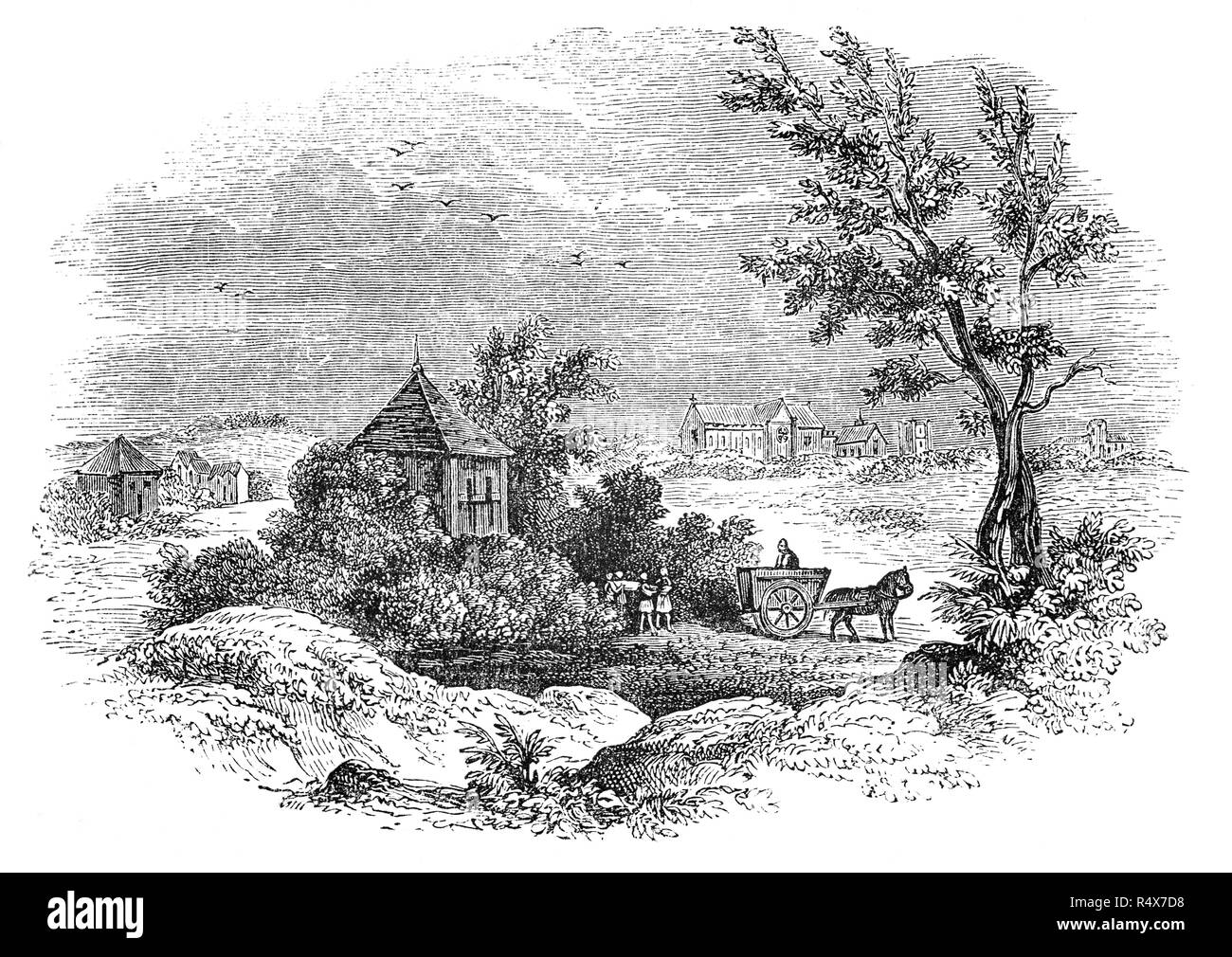 A 'Pest house' (isolation hospital in times of plague), Tothill Fields, Westminster, London, England. After Cromwell's victory at the Battle of Worcester in September 1651, some 4,000 defeated Royalists were imprisoned at Tothill Fields prior to being sold as slaves to merchants trading with Africa and the West Indies. Facilities at the prison camp on the marshy ground were so poor that 1,200 prisoners were recorded as having died in the primitive conditions. Stock Photohttps://www.alamy.com/image-license-details/?v=1https://www.alamy.com/a-pest-house-isolation-hospital-in-times-of-plague-tothill-fields-westminster-london-england-after-cromwells-victory-at-the-battle-of-worcester-in-september-1651-some-4000-defeated-royalists-were-imprisoned-at-tothill-fields-prior-to-being-sold-as-slaves-to-merchants-trading-with-africa-and-the-west-indies-facilities-at-the-prison-camp-on-the-marshy-ground-were-so-poor-that-1200-prisoners-were-recorded-as-having-died-in-the-primitive-conditions-image226770020.html
A 'Pest house' (isolation hospital in times of plague), Tothill Fields, Westminster, London, England. After Cromwell's victory at the Battle of Worcester in September 1651, some 4,000 defeated Royalists were imprisoned at Tothill Fields prior to being sold as slaves to merchants trading with Africa and the West Indies. Facilities at the prison camp on the marshy ground were so poor that 1,200 prisoners were recorded as having died in the primitive conditions. Stock Photohttps://www.alamy.com/image-license-details/?v=1https://www.alamy.com/a-pest-house-isolation-hospital-in-times-of-plague-tothill-fields-westminster-london-england-after-cromwells-victory-at-the-battle-of-worcester-in-september-1651-some-4000-defeated-royalists-were-imprisoned-at-tothill-fields-prior-to-being-sold-as-slaves-to-merchants-trading-with-africa-and-the-west-indies-facilities-at-the-prison-camp-on-the-marshy-ground-were-so-poor-that-1200-prisoners-were-recorded-as-having-died-in-the-primitive-conditions-image226770020.htmlRMR4X7D8–A 'Pest house' (isolation hospital in times of plague), Tothill Fields, Westminster, London, England. After Cromwell's victory at the Battle of Worcester in September 1651, some 4,000 defeated Royalists were imprisoned at Tothill Fields prior to being sold as slaves to merchants trading with Africa and the West Indies. Facilities at the prison camp on the marshy ground were so poor that 1,200 prisoners were recorded as having died in the primitive conditions.
 West Indies, Bonaire, Boca Slagbaai, Washington National Park Stock Photohttps://www.alamy.com/image-license-details/?v=1https://www.alamy.com/stock-photo-west-indies-bonaire-boca-slagbaai-washington-national-park-47323970.html
West Indies, Bonaire, Boca Slagbaai, Washington National Park Stock Photohttps://www.alamy.com/image-license-details/?v=1https://www.alamy.com/stock-photo-west-indies-bonaire-boca-slagbaai-washington-national-park-47323970.htmlRMCMYP5P–West Indies, Bonaire, Boca Slagbaai, Washington National Park
 Auctioning slaves in the West Indies after their transportation from West Africa. From Rev. Isaac Taylor 'Scenes in Africa' London 1824. Hand-coloured engraving. Stock Photohttps://www.alamy.com/image-license-details/?v=1https://www.alamy.com/stock-photo-auctioning-slaves-in-the-west-indies-after-their-transportation-from-57303477.html
Auctioning slaves in the West Indies after their transportation from West Africa. From Rev. Isaac Taylor 'Scenes in Africa' London 1824. Hand-coloured engraving. Stock Photohttps://www.alamy.com/image-license-details/?v=1https://www.alamy.com/stock-photo-auctioning-slaves-in-the-west-indies-after-their-transportation-from-57303477.htmlRMD96B4N–Auctioning slaves in the West Indies after their transportation from West Africa. From Rev. Isaac Taylor 'Scenes in Africa' London 1824. Hand-coloured engraving.
 West Indies, Bonaire, Boca Slagbaai, Washington National Park Stock Photohttps://www.alamy.com/image-license-details/?v=1https://www.alamy.com/stock-photo-west-indies-bonaire-boca-slagbaai-washington-national-park-47323961.html
West Indies, Bonaire, Boca Slagbaai, Washington National Park Stock Photohttps://www.alamy.com/image-license-details/?v=1https://www.alamy.com/stock-photo-west-indies-bonaire-boca-slagbaai-washington-national-park-47323961.htmlRMCMYP5D–West Indies, Bonaire, Boca Slagbaai, Washington National Park
 France, Martinique, Le Diamant, Anse Cafard memorial for slaves drown Stock Photohttps://www.alamy.com/image-license-details/?v=1https://www.alamy.com/france-martinique-le-diamant-anse-cafard-memorial-for-slaves-drown-image369594805.html
France, Martinique, Le Diamant, Anse Cafard memorial for slaves drown Stock Photohttps://www.alamy.com/image-license-details/?v=1https://www.alamy.com/france-martinique-le-diamant-anse-cafard-memorial-for-slaves-drown-image369594805.htmlRM2CD8DXD–France, Martinique, Le Diamant, Anse Cafard memorial for slaves drown
 West Indies, Bonaire, Washington National Park, Flamingos and pelican Stock Photohttps://www.alamy.com/image-license-details/?v=1https://www.alamy.com/stock-photo-west-indies-bonaire-washington-national-park-flamingos-and-pelican-47323975.html
West Indies, Bonaire, Washington National Park, Flamingos and pelican Stock Photohttps://www.alamy.com/image-license-details/?v=1https://www.alamy.com/stock-photo-west-indies-bonaire-washington-national-park-flamingos-and-pelican-47323975.htmlRMCMYP5Y–West Indies, Bonaire, Washington National Park, Flamingos and pelican
 The burial place and chapel of Governor-General Peter von Scholten in the Assistens Cemetery in Copenhagen, Denmark. Stock Photohttps://www.alamy.com/image-license-details/?v=1https://www.alamy.com/stock-photo-the-burial-place-and-chapel-of-governor-general-peter-von-scholten-56637246.html
The burial place and chapel of Governor-General Peter von Scholten in the Assistens Cemetery in Copenhagen, Denmark. Stock Photohttps://www.alamy.com/image-license-details/?v=1https://www.alamy.com/stock-photo-the-burial-place-and-chapel-of-governor-general-peter-von-scholten-56637246.htmlRMD841AP–The burial place and chapel of Governor-General Peter von Scholten in the Assistens Cemetery in Copenhagen, Denmark.
 sharon moravian church barbados caribbean lesser antilles west indies Stock Photohttps://www.alamy.com/image-license-details/?v=1https://www.alamy.com/sharon-moravian-church-barbados-caribbean-lesser-antilles-west-indies-image3085188.html
sharon moravian church barbados caribbean lesser antilles west indies Stock Photohttps://www.alamy.com/image-license-details/?v=1https://www.alamy.com/sharon-moravian-church-barbados-caribbean-lesser-antilles-west-indies-image3085188.htmlRMAWN385–sharon moravian church barbados caribbean lesser antilles west indies
 African slaves harvesting cotton bolls, removing the seeds by machine, while an overseer with musket and whip drives a horse laden with raw cotton. West Indies, early 19th century. Handcoloured copperplate engraving by Nasi from Giulio Ferrrario's Costumes Antique and Modern of All Peoples (Il Costume Antico e Moderno di Tutti i Popoli), Florence, 1842. Stock Photohttps://www.alamy.com/image-license-details/?v=1https://www.alamy.com/african-slaves-harvesting-cotton-bolls-removing-the-seeds-by-machine-while-an-overseer-with-musket-and-whip-drives-a-horse-laden-with-raw-cotton-west-indies-early-19th-century-handcoloured-copperplate-engraving-by-nasi-from-giulio-ferrrarios-costumes-antique-and-modern-of-all-peoples-il-costume-antico-e-moderno-di-tutti-i-popoli-florence-1842-image211125106.html
African slaves harvesting cotton bolls, removing the seeds by machine, while an overseer with musket and whip drives a horse laden with raw cotton. West Indies, early 19th century. Handcoloured copperplate engraving by Nasi from Giulio Ferrrario's Costumes Antique and Modern of All Peoples (Il Costume Antico e Moderno di Tutti i Popoli), Florence, 1842. Stock Photohttps://www.alamy.com/image-license-details/?v=1https://www.alamy.com/african-slaves-harvesting-cotton-bolls-removing-the-seeds-by-machine-while-an-overseer-with-musket-and-whip-drives-a-horse-laden-with-raw-cotton-west-indies-early-19th-century-handcoloured-copperplate-engraving-by-nasi-from-giulio-ferrrarios-costumes-antique-and-modern-of-all-peoples-il-costume-antico-e-moderno-di-tutti-i-popoli-florence-1842-image211125106.htmlRMP7DG6A–African slaves harvesting cotton bolls, removing the seeds by machine, while an overseer with musket and whip drives a horse laden with raw cotton. West Indies, early 19th century. Handcoloured copperplate engraving by Nasi from Giulio Ferrrario's Costumes Antique and Modern of All Peoples (Il Costume Antico e Moderno di Tutti i Popoli), Florence, 1842.
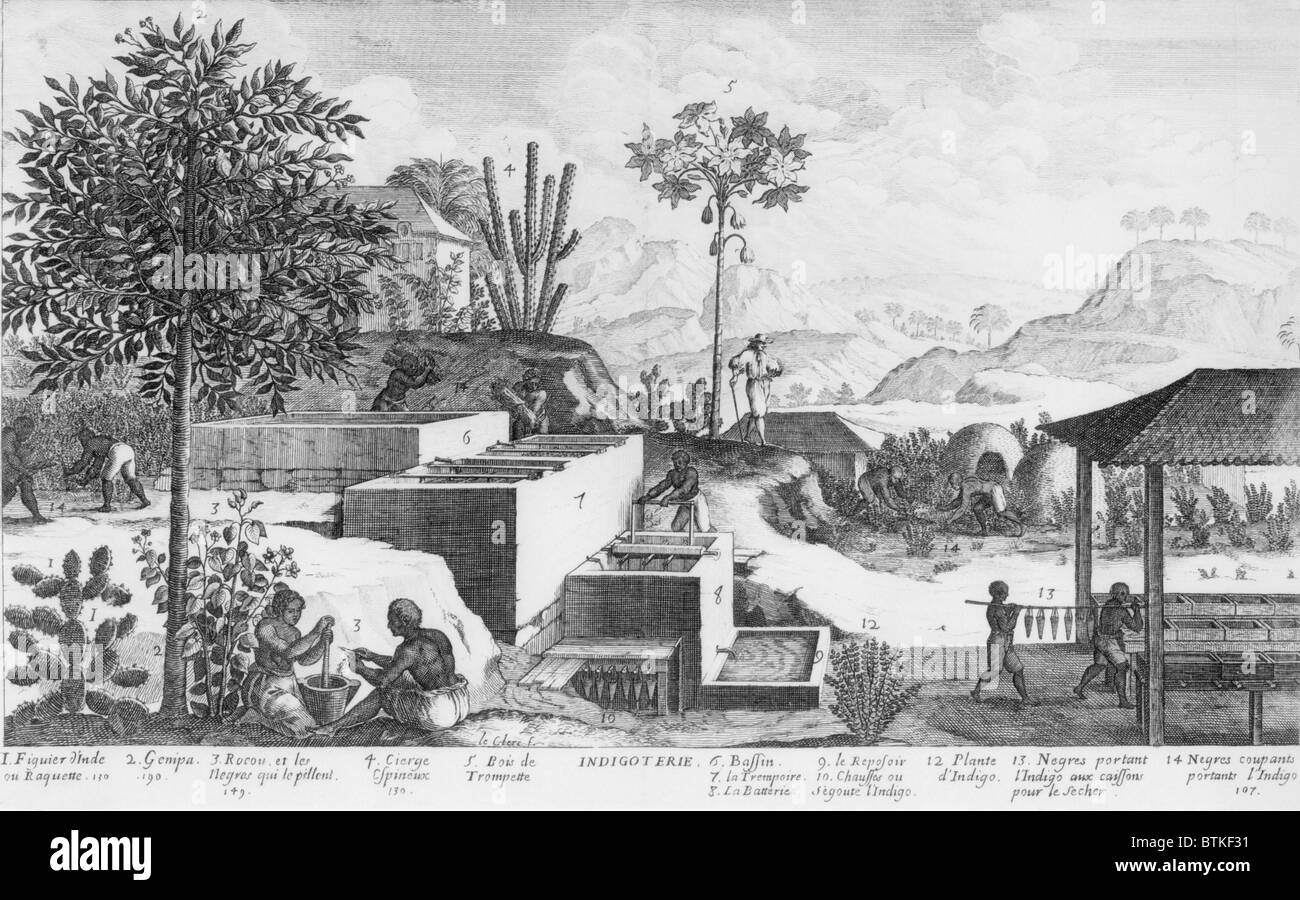 Slaves and their overseer working on a Caribbean plantation producing natural blue dye from indigo plants. Indigo plant's leaves soaked and fermented in bins to extract the blue dye, which was then processed further into blue powder. French engraving. 1667. Stock Photohttps://www.alamy.com/image-license-details/?v=1https://www.alamy.com/stock-photo-slaves-and-their-overseer-working-on-a-caribbean-plantation-producing-32391045.html
Slaves and their overseer working on a Caribbean plantation producing natural blue dye from indigo plants. Indigo plant's leaves soaked and fermented in bins to extract the blue dye, which was then processed further into blue powder. French engraving. 1667. Stock Photohttps://www.alamy.com/image-license-details/?v=1https://www.alamy.com/stock-photo-slaves-and-their-overseer-working-on-a-caribbean-plantation-producing-32391045.htmlRMBTKF31–Slaves and their overseer working on a Caribbean plantation producing natural blue dye from indigo plants. Indigo plant's leaves soaked and fermented in bins to extract the blue dye, which was then processed further into blue powder. French engraving. 1667.
 Free West Indian Dominicans, painting by Agostino Brunias, circa 1770 Stock Photohttps://www.alamy.com/image-license-details/?v=1https://www.alamy.com/free-west-indian-dominicans-painting-by-agostino-brunias-circa-1770-image365733209.html
Free West Indian Dominicans, painting by Agostino Brunias, circa 1770 Stock Photohttps://www.alamy.com/image-license-details/?v=1https://www.alamy.com/free-west-indian-dominicans-painting-by-agostino-brunias-circa-1770-image365733209.htmlRM2C70GC9–Free West Indian Dominicans, painting by Agostino Brunias, circa 1770
 Caribbean Antilles. Sugar cane mill. French engraving, 1759. Later colouration. Stock Photohttps://www.alamy.com/image-license-details/?v=1https://www.alamy.com/caribbean-antilles-sugar-cane-mill-french-engraving-1759-later-colouration-image337902992.html
Caribbean Antilles. Sugar cane mill. French engraving, 1759. Later colouration. Stock Photohttps://www.alamy.com/image-license-details/?v=1https://www.alamy.com/caribbean-antilles-sugar-cane-mill-french-engraving-1759-later-colouration-image337902992.htmlRM2AHMPM0–Caribbean Antilles. Sugar cane mill. French engraving, 1759. Later colouration.
 France, Martinique (French West Indies), Le Diamant, Anse Cafard memorial symbolizing the drowning of the slaves in the Stock Photohttps://www.alamy.com/image-license-details/?v=1https://www.alamy.com/stock-photo-france-martinique-french-west-indies-le-diamant-anse-cafard-memorial-48736348.html
France, Martinique (French West Indies), Le Diamant, Anse Cafard memorial symbolizing the drowning of the slaves in the Stock Photohttps://www.alamy.com/image-license-details/?v=1https://www.alamy.com/stock-photo-france-martinique-french-west-indies-le-diamant-anse-cafard-memorial-48736348.htmlRMCR83KT–France, Martinique (French West Indies), Le Diamant, Anse Cafard memorial symbolizing the drowning of the slaves in the
 Asian Slaves In W Indies Stock Photohttps://www.alamy.com/image-license-details/?v=1https://www.alamy.com/asian-slaves-in-w-indies-image8260762.html
Asian Slaves In W Indies Stock Photohttps://www.alamy.com/image-license-details/?v=1https://www.alamy.com/asian-slaves-in-w-indies-image8260762.htmlRMAHF7NB–Asian Slaves In W Indies
 France, Martinique (French West Indies), Le Diamant, Anse Cafard Memorial symbolizing the drowning slaves in the sinking of a Stock Photohttps://www.alamy.com/image-license-details/?v=1https://www.alamy.com/stock-photo-france-martinique-french-west-indies-le-diamant-anse-cafard-memorial-48739892.html
France, Martinique (French West Indies), Le Diamant, Anse Cafard Memorial symbolizing the drowning slaves in the sinking of a Stock Photohttps://www.alamy.com/image-license-details/?v=1https://www.alamy.com/stock-photo-france-martinique-french-west-indies-le-diamant-anse-cafard-memorial-48739892.htmlRMCR886C–France, Martinique (French West Indies), Le Diamant, Anse Cafard Memorial symbolizing the drowning slaves in the sinking of a
 Slaves opening land for planting sugar cane, Antigua, West Indies Date: 1833 Stock Photohttps://www.alamy.com/image-license-details/?v=1https://www.alamy.com/stock-photo-slaves-opening-land-for-planting-sugar-cane-antigua-west-indies-date-105278101.html
Slaves opening land for planting sugar cane, Antigua, West Indies Date: 1833 Stock Photohttps://www.alamy.com/image-license-details/?v=1https://www.alamy.com/stock-photo-slaves-opening-land-for-planting-sugar-cane-antigua-west-indies-date-105278101.htmlRMG37R85–Slaves opening land for planting sugar cane, Antigua, West Indies Date: 1833
 African slaves driving horses to extract sugar from sugar cane in a mill on a plantation in the West Indies. Handcoloured copperplate engraving by Migliavacca from Giulio Ferrrario's Costumes Antique and Modern of All Peoples (Il Costume Antico e Moderno di Tutti i Popoli), Florence, 1842. Stock Photohttps://www.alamy.com/image-license-details/?v=1https://www.alamy.com/african-slaves-driving-horses-to-extract-sugar-from-sugar-cane-in-a-mill-on-a-plantation-in-the-west-indies-handcoloured-copperplate-engraving-by-migliavacca-from-giulio-ferrrarios-costumes-antique-and-modern-of-all-peoples-il-costume-antico-e-moderno-di-tutti-i-popoli-florence-1842-image331884072.html
African slaves driving horses to extract sugar from sugar cane in a mill on a plantation in the West Indies. Handcoloured copperplate engraving by Migliavacca from Giulio Ferrrario's Costumes Antique and Modern of All Peoples (Il Costume Antico e Moderno di Tutti i Popoli), Florence, 1842. Stock Photohttps://www.alamy.com/image-license-details/?v=1https://www.alamy.com/african-slaves-driving-horses-to-extract-sugar-from-sugar-cane-in-a-mill-on-a-plantation-in-the-west-indies-handcoloured-copperplate-engraving-by-migliavacca-from-giulio-ferrrarios-costumes-antique-and-modern-of-all-peoples-il-costume-antico-e-moderno-di-tutti-i-popoli-florence-1842-image331884072.htmlRM2A7XHEG–African slaves driving horses to extract sugar from sugar cane in a mill on a plantation in the West Indies. Handcoloured copperplate engraving by Migliavacca from Giulio Ferrrario's Costumes Antique and Modern of All Peoples (Il Costume Antico e Moderno di Tutti i Popoli), Florence, 1842.
 West Indian Sugar Slaves Stock Photohttps://www.alamy.com/image-license-details/?v=1https://www.alamy.com/west-indian-sugar-slaves-image5073447.html
West Indian Sugar Slaves Stock Photohttps://www.alamy.com/image-license-details/?v=1https://www.alamy.com/west-indian-sugar-slaves-image5073447.htmlRMANJJ28–West Indian Sugar Slaves
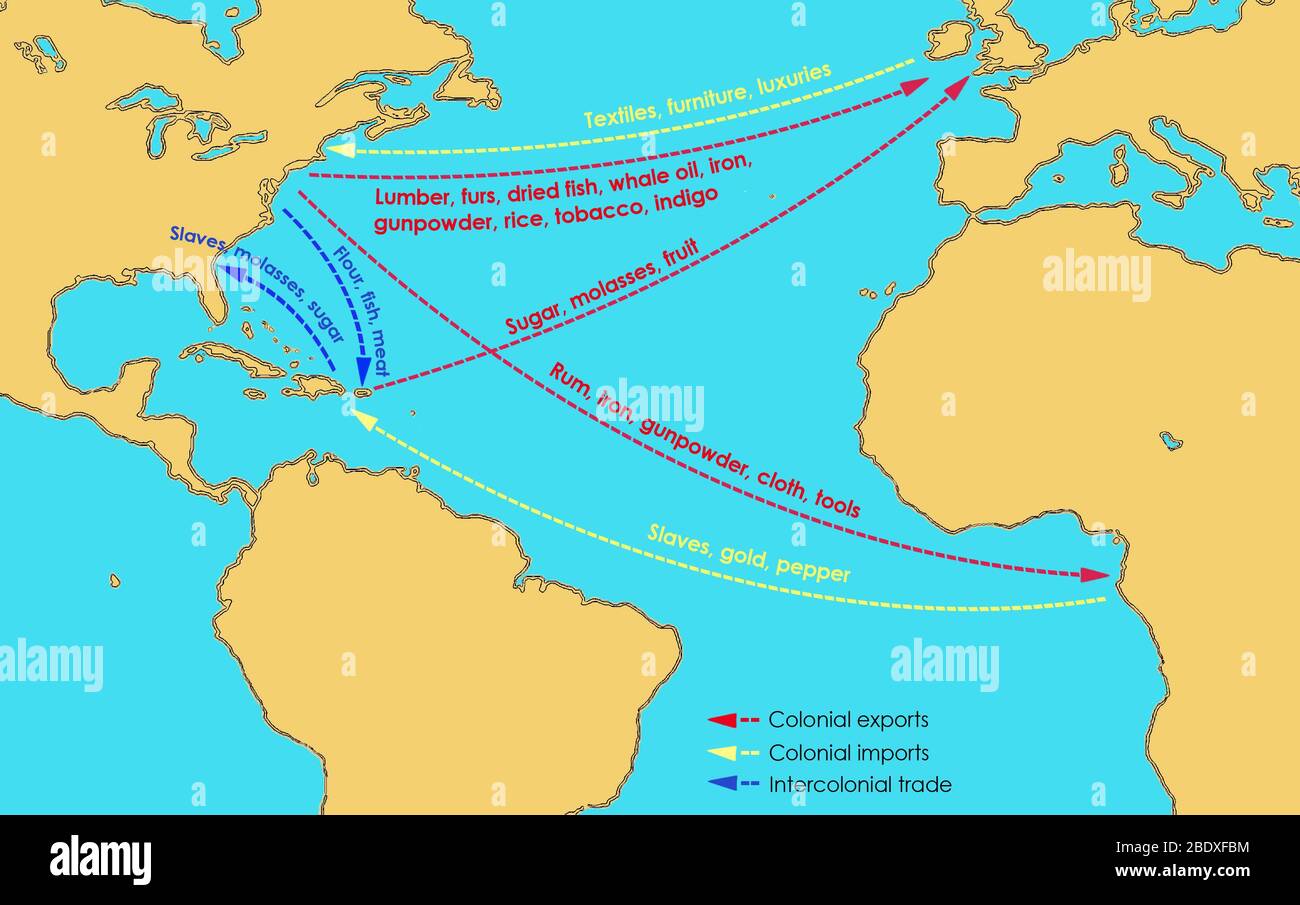 A map showing the flow of goods to and from the Thirteen British Colonies in North America in the 17th and 18th centuries. Britain exported manufactured goods, textiles, furniture, and luxuries to the Colonies; from the Colonies and the West Indies, they imported sugar, molases, fruit, lumber, furs, dried fish, whale oil, iron, gunpowder, rice, tobacco, and indigo. The Colonies exported rum, iron, gunpowder, cloth, and tools to Africa. Slaves, gold and pepper were transported from Africa, while intercolonial trade (to and from the West Indies and the Colonies) included slaves, molasses, sugar, Stock Photohttps://www.alamy.com/image-license-details/?v=1https://www.alamy.com/a-map-showing-the-flow-of-goods-to-and-from-the-thirteen-british-colonies-in-north-america-in-the-17th-and-18th-centuries-britain-exported-manufactured-goods-textiles-furniture-and-luxuries-to-the-colonies-from-the-colonies-and-the-west-indies-they-imported-sugar-molases-fruit-lumber-furs-dried-fish-whale-oil-iron-gunpowder-rice-tobacco-and-indigo-the-colonies-exported-rum-iron-gunpowder-cloth-and-tools-to-africa-slaves-gold-and-pepper-were-transported-from-africa-while-intercolonial-trade-to-and-from-the-west-indies-and-the-colonies-included-slaves-molasses-sugar-image352780728.html
A map showing the flow of goods to and from the Thirteen British Colonies in North America in the 17th and 18th centuries. Britain exported manufactured goods, textiles, furniture, and luxuries to the Colonies; from the Colonies and the West Indies, they imported sugar, molases, fruit, lumber, furs, dried fish, whale oil, iron, gunpowder, rice, tobacco, and indigo. The Colonies exported rum, iron, gunpowder, cloth, and tools to Africa. Slaves, gold and pepper were transported from Africa, while intercolonial trade (to and from the West Indies and the Colonies) included slaves, molasses, sugar, Stock Photohttps://www.alamy.com/image-license-details/?v=1https://www.alamy.com/a-map-showing-the-flow-of-goods-to-and-from-the-thirteen-british-colonies-in-north-america-in-the-17th-and-18th-centuries-britain-exported-manufactured-goods-textiles-furniture-and-luxuries-to-the-colonies-from-the-colonies-and-the-west-indies-they-imported-sugar-molases-fruit-lumber-furs-dried-fish-whale-oil-iron-gunpowder-rice-tobacco-and-indigo-the-colonies-exported-rum-iron-gunpowder-cloth-and-tools-to-africa-slaves-gold-and-pepper-were-transported-from-africa-while-intercolonial-trade-to-and-from-the-west-indies-and-the-colonies-included-slaves-molasses-sugar-image352780728.htmlRM2BDXFBM–A map showing the flow of goods to and from the Thirteen British Colonies in North America in the 17th and 18th centuries. Britain exported manufactured goods, textiles, furniture, and luxuries to the Colonies; from the Colonies and the West Indies, they imported sugar, molases, fruit, lumber, furs, dried fish, whale oil, iron, gunpowder, rice, tobacco, and indigo. The Colonies exported rum, iron, gunpowder, cloth, and tools to Africa. Slaves, gold and pepper were transported from Africa, while intercolonial trade (to and from the West Indies and the Colonies) included slaves, molasses, sugar,
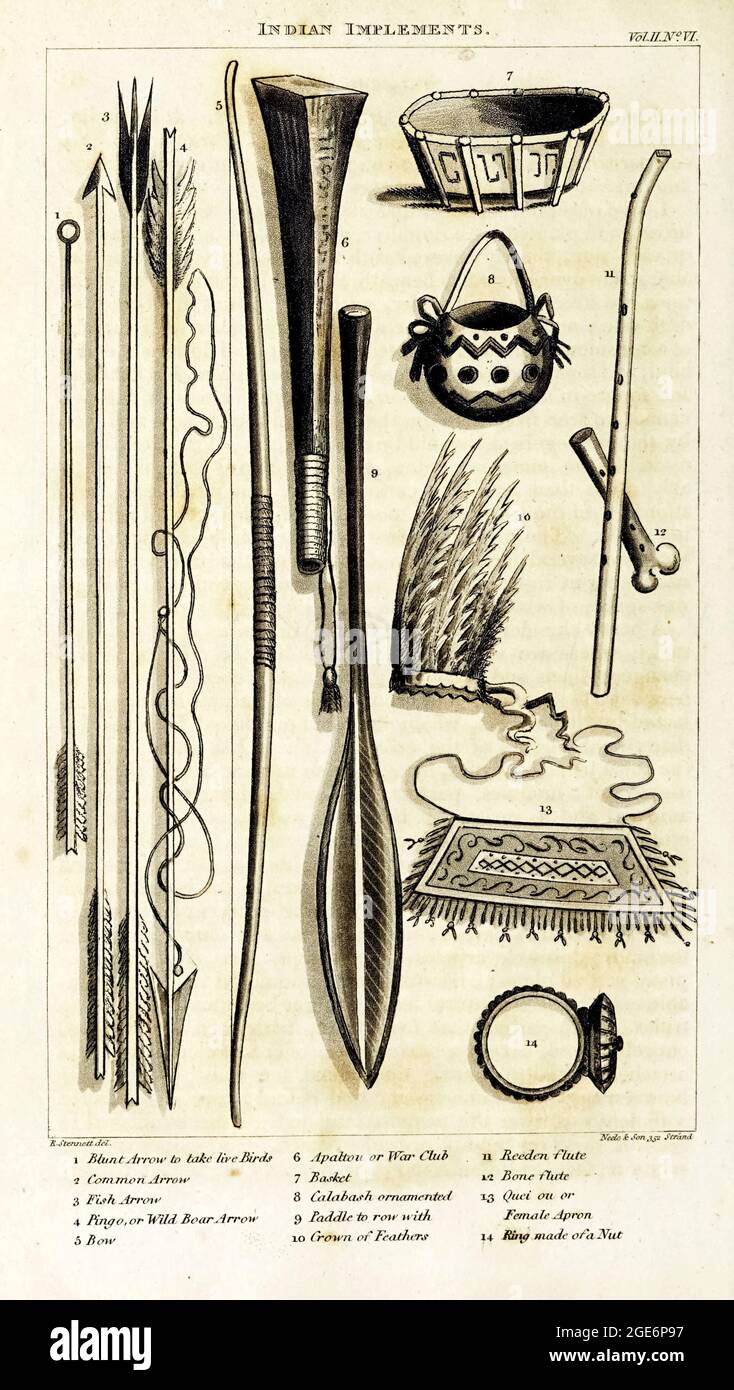 Indian Implements from the book ' A voyage in the West Indies: : containing various observations made during a residence in Barbadoes, and several of the Leeward Islands; with some notices and illustrations relative to the city of Paramarabo, in Surinam. With engravings. ' by Waller, John Augustine Published in London: Printed for Sir Richard Phillips and Co. Bride Court, Bridge Street; and to be had of all booksellers. in 1820 Stock Photohttps://www.alamy.com/image-license-details/?v=1https://www.alamy.com/indian-implements-from-the-book-a-voyage-in-the-west-indies-containing-various-observations-made-during-a-residence-in-barbadoes-and-several-of-the-leeward-islands-with-some-notices-and-illustrations-relative-to-the-city-of-paramarabo-in-surinam-with-engravings-by-waller-john-augustine-published-in-london-printed-for-sir-richard-phillips-and-co-bride-court-bridge-street-and-to-be-had-of-all-booksellers-in-1820-image439013603.html
Indian Implements from the book ' A voyage in the West Indies: : containing various observations made during a residence in Barbadoes, and several of the Leeward Islands; with some notices and illustrations relative to the city of Paramarabo, in Surinam. With engravings. ' by Waller, John Augustine Published in London: Printed for Sir Richard Phillips and Co. Bride Court, Bridge Street; and to be had of all booksellers. in 1820 Stock Photohttps://www.alamy.com/image-license-details/?v=1https://www.alamy.com/indian-implements-from-the-book-a-voyage-in-the-west-indies-containing-various-observations-made-during-a-residence-in-barbadoes-and-several-of-the-leeward-islands-with-some-notices-and-illustrations-relative-to-the-city-of-paramarabo-in-surinam-with-engravings-by-waller-john-augustine-published-in-london-printed-for-sir-richard-phillips-and-co-bride-court-bridge-street-and-to-be-had-of-all-booksellers-in-1820-image439013603.htmlRM2GE6P97–Indian Implements from the book ' A voyage in the West Indies: : containing various observations made during a residence in Barbadoes, and several of the Leeward Islands; with some notices and illustrations relative to the city of Paramarabo, in Surinam. With engravings. ' by Waller, John Augustine Published in London: Printed for Sir Richard Phillips and Co. Bride Court, Bridge Street; and to be had of all booksellers. in 1820
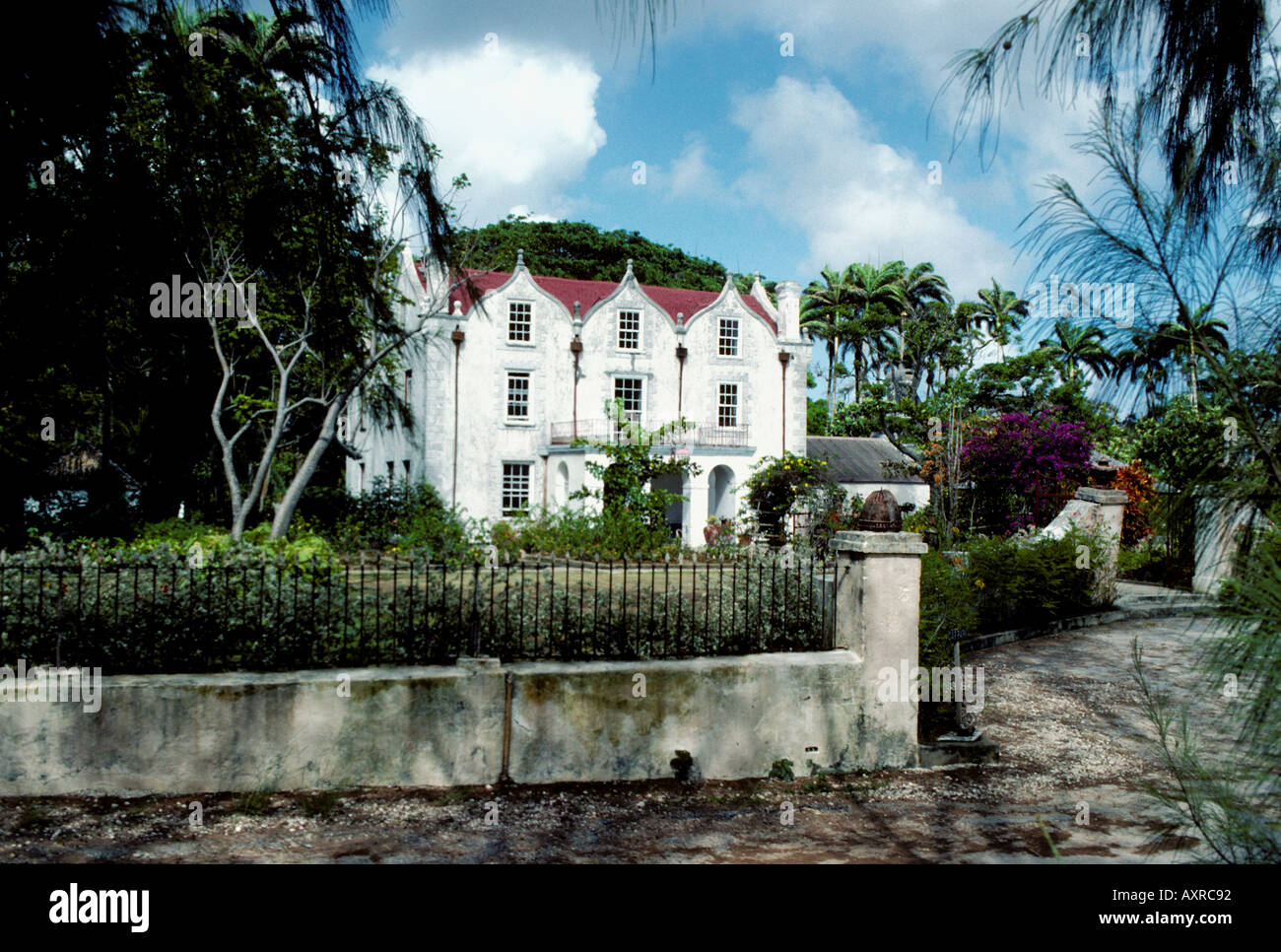 St Nicholas Abbey Barbados Stock Photohttps://www.alamy.com/image-license-details/?v=1https://www.alamy.com/st-nicholas-abbey-barbados-image3144849.html
St Nicholas Abbey Barbados Stock Photohttps://www.alamy.com/image-license-details/?v=1https://www.alamy.com/st-nicholas-abbey-barbados-image3144849.htmlRMAXRC92–St Nicholas Abbey Barbados
 Slaves cutting the sugar cane in Antigua. Y William Clark 1827 Stock Photohttps://www.alamy.com/image-license-details/?v=1https://www.alamy.com/slaves-cutting-the-sugar-cane-in-antigua-y-william-clark-1827-image634302149.html
Slaves cutting the sugar cane in Antigua. Y William Clark 1827 Stock Photohttps://www.alamy.com/image-license-details/?v=1https://www.alamy.com/slaves-cutting-the-sugar-cane-in-antigua-y-william-clark-1827-image634302149.htmlRM2YRXXT5–Slaves cutting the sugar cane in Antigua. Y William Clark 1827
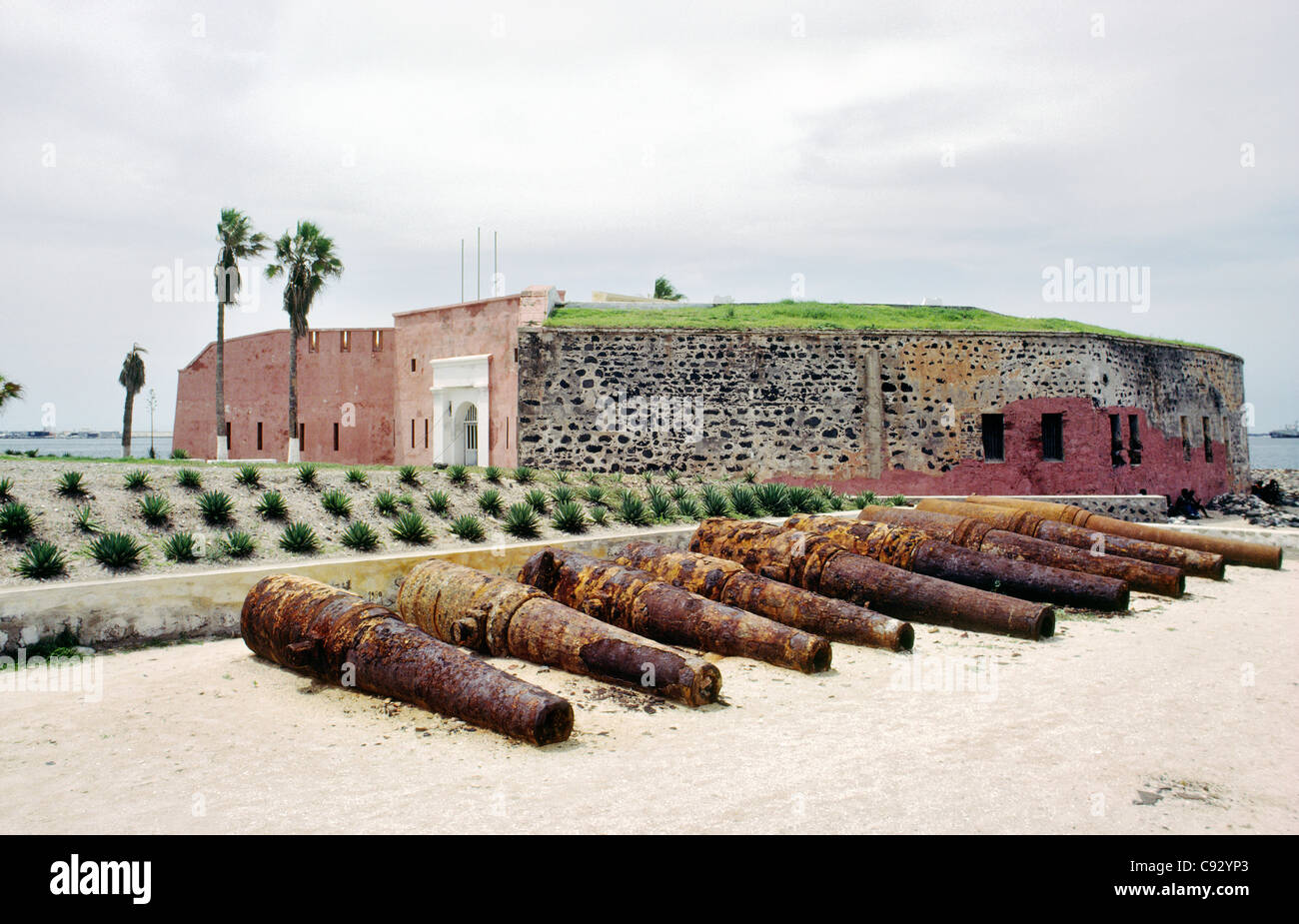 Goree Island Slave House colonial garrison off Dakar, Senegal. Slaves held for slave trade transportation to West Indies America Stock Photohttps://www.alamy.com/image-license-details/?v=1https://www.alamy.com/stock-photo-goree-island-slave-house-colonial-garrison-off-dakar-senegal-slaves-40018331.html
Goree Island Slave House colonial garrison off Dakar, Senegal. Slaves held for slave trade transportation to West Indies America Stock Photohttps://www.alamy.com/image-license-details/?v=1https://www.alamy.com/stock-photo-goree-island-slave-house-colonial-garrison-off-dakar-senegal-slaves-40018331.htmlRMC92YP3–Goree Island Slave House colonial garrison off Dakar, Senegal. Slaves held for slave trade transportation to West Indies America
 Planting sugar cane in the West Indies. Stock Photohttps://www.alamy.com/image-license-details/?v=1https://www.alamy.com/stock-photo-planting-sugar-cane-in-the-west-indies-131277720.html
Planting sugar cane in the West Indies. Stock Photohttps://www.alamy.com/image-license-details/?v=1https://www.alamy.com/stock-photo-planting-sugar-cane-in-the-west-indies-131277720.htmlRMHHG620–Planting sugar cane in the West Indies.
 France, Martinique, Le Diamant, Anse Cafard memorial for slaves drown Stock Photohttps://www.alamy.com/image-license-details/?v=1https://www.alamy.com/france-martinique-le-diamant-anse-cafard-memorial-for-slaves-drown-image369594810.html
France, Martinique, Le Diamant, Anse Cafard memorial for slaves drown Stock Photohttps://www.alamy.com/image-license-details/?v=1https://www.alamy.com/france-martinique-le-diamant-anse-cafard-memorial-for-slaves-drown-image369594810.htmlRM2CD8DXJ–France, Martinique, Le Diamant, Anse Cafard memorial for slaves drown
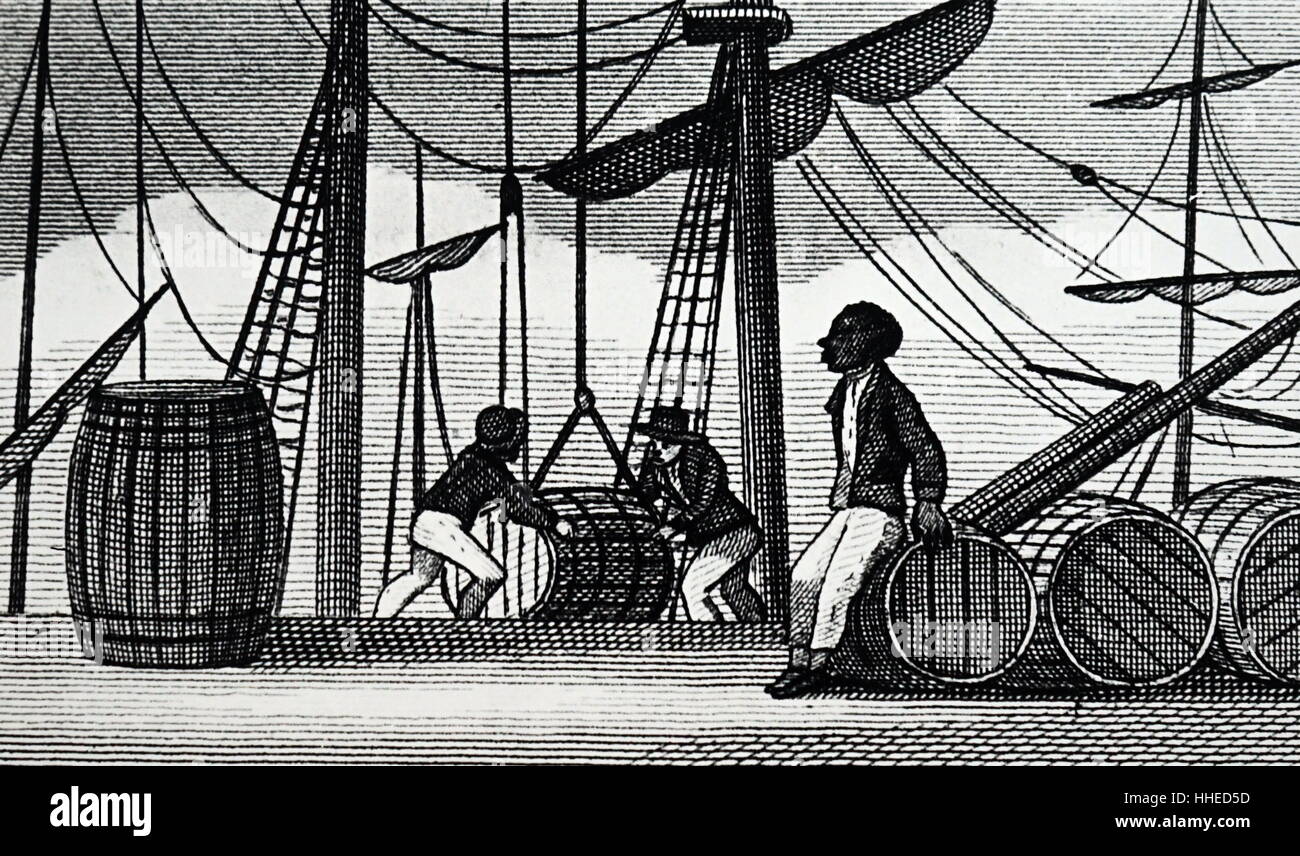 Slave Trade: Unloading sugar from the West Indies at Bristol docks, South West England. 1823. Stock Photohttps://www.alamy.com/image-license-details/?v=1https://www.alamy.com/stock-photo-slave-trade-unloading-sugar-from-the-west-indies-at-bristol-docks-131239401.html
Slave Trade: Unloading sugar from the West Indies at Bristol docks, South West England. 1823. Stock Photohttps://www.alamy.com/image-license-details/?v=1https://www.alamy.com/stock-photo-slave-trade-unloading-sugar-from-the-west-indies-at-bristol-docks-131239401.htmlRMHHED5D–Slave Trade: Unloading sugar from the West Indies at Bristol docks, South West England. 1823.
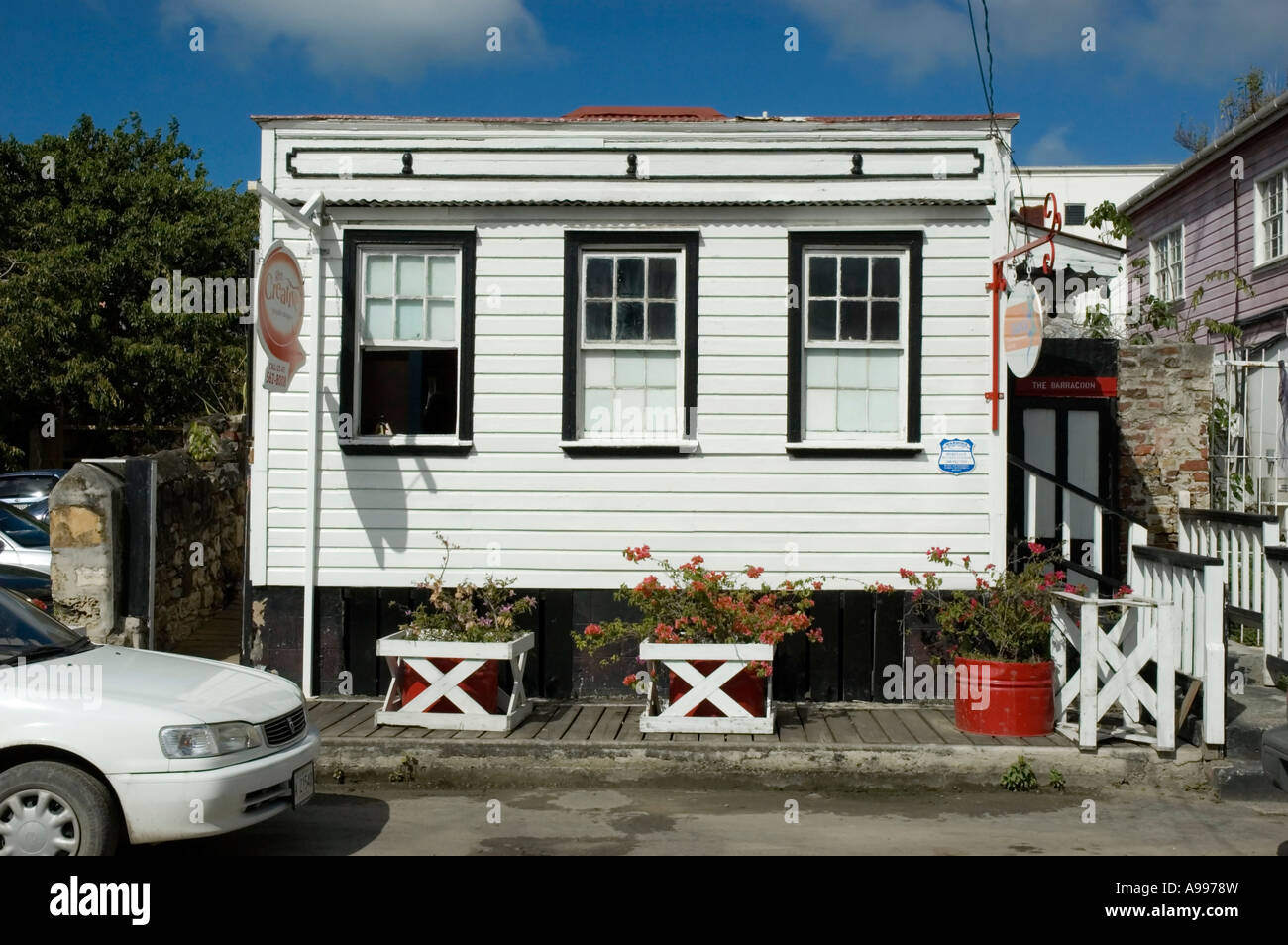 The Coates Cottage, a brightly painted clapboard office which was once used as a holding area for slaves, St John's, Antigua Stock Photohttps://www.alamy.com/image-license-details/?v=1https://www.alamy.com/stock-photo-the-coates-cottage-a-brightly-painted-clapboard-office-which-was-once-12292440.html
The Coates Cottage, a brightly painted clapboard office which was once used as a holding area for slaves, St John's, Antigua Stock Photohttps://www.alamy.com/image-license-details/?v=1https://www.alamy.com/stock-photo-the-coates-cottage-a-brightly-painted-clapboard-office-which-was-once-12292440.htmlRMA9978W–The Coates Cottage, a brightly painted clapboard office which was once used as a holding area for slaves, St John's, Antigua
 Slave labour working in a sugar boiling house. West Indies. 1833 Stock Photohttps://www.alamy.com/image-license-details/?v=1https://www.alamy.com/stock-photo-slave-labour-working-in-a-sugar-boiling-house-west-indies-1833-131277981.html
Slave labour working in a sugar boiling house. West Indies. 1833 Stock Photohttps://www.alamy.com/image-license-details/?v=1https://www.alamy.com/stock-photo-slave-labour-working-in-a-sugar-boiling-house-west-indies-1833-131277981.htmlRMHHG6B9–Slave labour working in a sugar boiling house. West Indies. 1833
 Slaves milling sugar, Saccharum officinarum, on a sugar cane plantation in the West Indies. Handcolored copperplate engraving of a botanical illustration from G. T. Wilhelm's 'Unterhaltungen aus der Naturgeschichte' (Encyclopedia of Natural History), Vienna, 1816. Gottlieb Tobias Wilhelm (1758-1811) was a Bavarian clergyman and naturalist in Augsburg, where the first edition was published. Stock Photohttps://www.alamy.com/image-license-details/?v=1https://www.alamy.com/slaves-milling-sugar-saccharum-officinarum-on-a-sugar-cane-plantation-in-the-west-indies-handcolored-copperplate-engraving-of-a-botanical-illustration-from-g-t-wilhelms-unterhaltungen-aus-der-naturgeschichte-encyclopedia-of-natural-history-vienna-1816-gottlieb-tobias-wilhelm-1758-1811-was-a-bavarian-clergyman-and-naturalist-in-augsburg-where-the-first-edition-was-published-image209727771.html
Slaves milling sugar, Saccharum officinarum, on a sugar cane plantation in the West Indies. Handcolored copperplate engraving of a botanical illustration from G. T. Wilhelm's 'Unterhaltungen aus der Naturgeschichte' (Encyclopedia of Natural History), Vienna, 1816. Gottlieb Tobias Wilhelm (1758-1811) was a Bavarian clergyman and naturalist in Augsburg, where the first edition was published. Stock Photohttps://www.alamy.com/image-license-details/?v=1https://www.alamy.com/slaves-milling-sugar-saccharum-officinarum-on-a-sugar-cane-plantation-in-the-west-indies-handcolored-copperplate-engraving-of-a-botanical-illustration-from-g-t-wilhelms-unterhaltungen-aus-der-naturgeschichte-encyclopedia-of-natural-history-vienna-1816-gottlieb-tobias-wilhelm-1758-1811-was-a-bavarian-clergyman-and-naturalist-in-augsburg-where-the-first-edition-was-published-image209727771.htmlRMP55WWF–Slaves milling sugar, Saccharum officinarum, on a sugar cane plantation in the West Indies. Handcolored copperplate engraving of a botanical illustration from G. T. Wilhelm's 'Unterhaltungen aus der Naturgeschichte' (Encyclopedia of Natural History), Vienna, 1816. Gottlieb Tobias Wilhelm (1758-1811) was a Bavarian clergyman and naturalist in Augsburg, where the first edition was published.
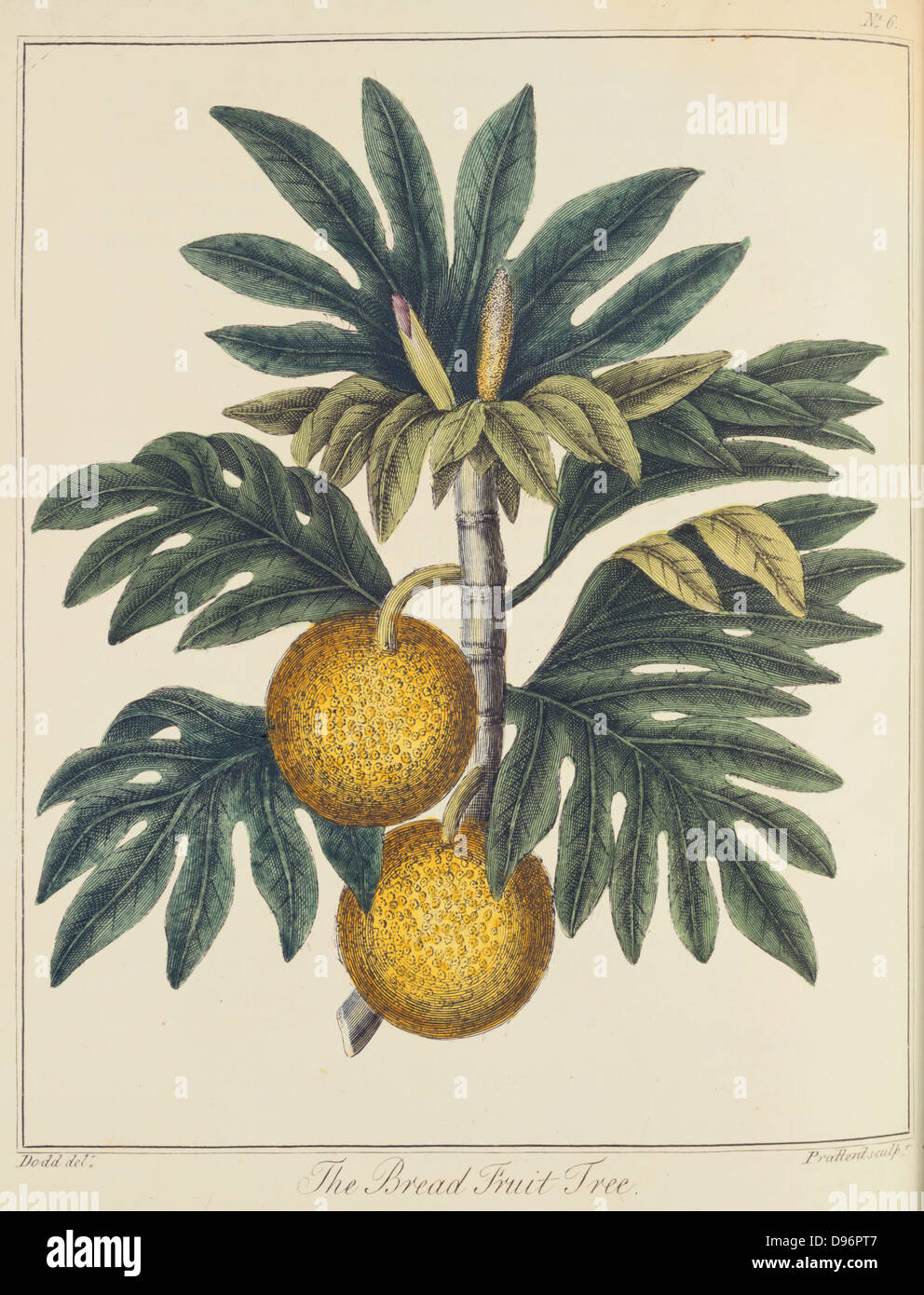 Breadfuit: Artocarpus incisus. Tree with fruit with white pulp like new bread, introduced into West Indies as important food crop for plantation slaves. Captain Bligh of HMS 'Bounty' fame was given the task of transporting stock plants from the South Sea Islands.From 'A Key to Physic' by Ebenezer Sibly. (London c1798). Hand-coloured engraving. Stock Photohttps://www.alamy.com/image-license-details/?v=1https://www.alamy.com/stock-photo-breadfuit-artocarpus-incisus-tree-with-fruit-with-white-pulp-like-57312647.html
Breadfuit: Artocarpus incisus. Tree with fruit with white pulp like new bread, introduced into West Indies as important food crop for plantation slaves. Captain Bligh of HMS 'Bounty' fame was given the task of transporting stock plants from the South Sea Islands.From 'A Key to Physic' by Ebenezer Sibly. (London c1798). Hand-coloured engraving. Stock Photohttps://www.alamy.com/image-license-details/?v=1https://www.alamy.com/stock-photo-breadfuit-artocarpus-incisus-tree-with-fruit-with-white-pulp-like-57312647.htmlRMD96PT7–Breadfuit: Artocarpus incisus. Tree with fruit with white pulp like new bread, introduced into West Indies as important food crop for plantation slaves. Captain Bligh of HMS 'Bounty' fame was given the task of transporting stock plants from the South Sea Islands.From 'A Key to Physic' by Ebenezer Sibly. (London c1798). Hand-coloured engraving.
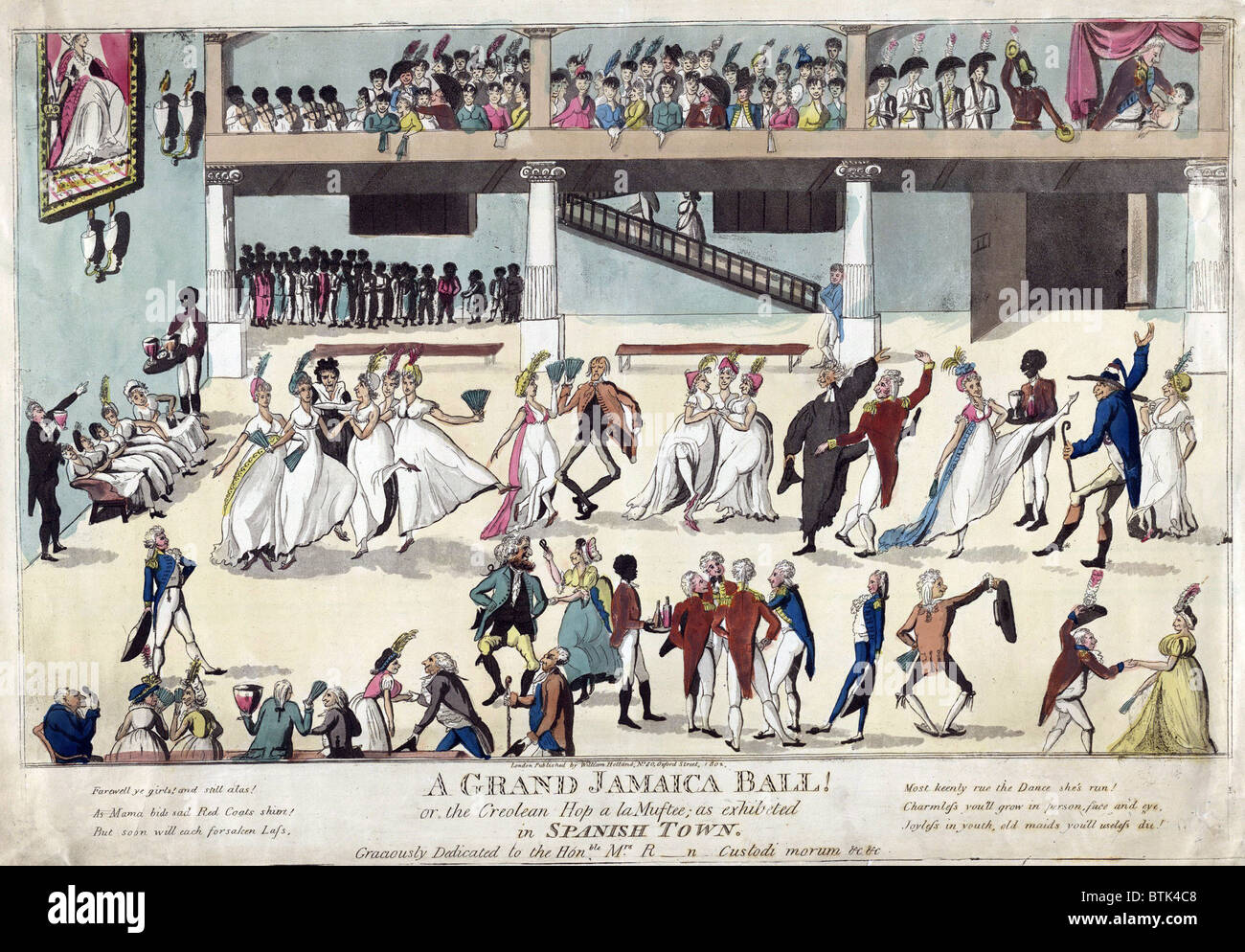 British colonists dancing and served by African slaves at a ball in Spanish Town, Jamaica. The print six lines of verse warning Stock Photohttps://www.alamy.com/image-license-details/?v=1https://www.alamy.com/stock-photo-british-colonists-dancing-and-served-by-african-slaves-at-a-ball-in-32382680.html
British colonists dancing and served by African slaves at a ball in Spanish Town, Jamaica. The print six lines of verse warning Stock Photohttps://www.alamy.com/image-license-details/?v=1https://www.alamy.com/stock-photo-british-colonists-dancing-and-served-by-african-slaves-at-a-ball-in-32382680.htmlRMBTK4C8–British colonists dancing and served by African slaves at a ball in Spanish Town, Jamaica. The print six lines of verse warning
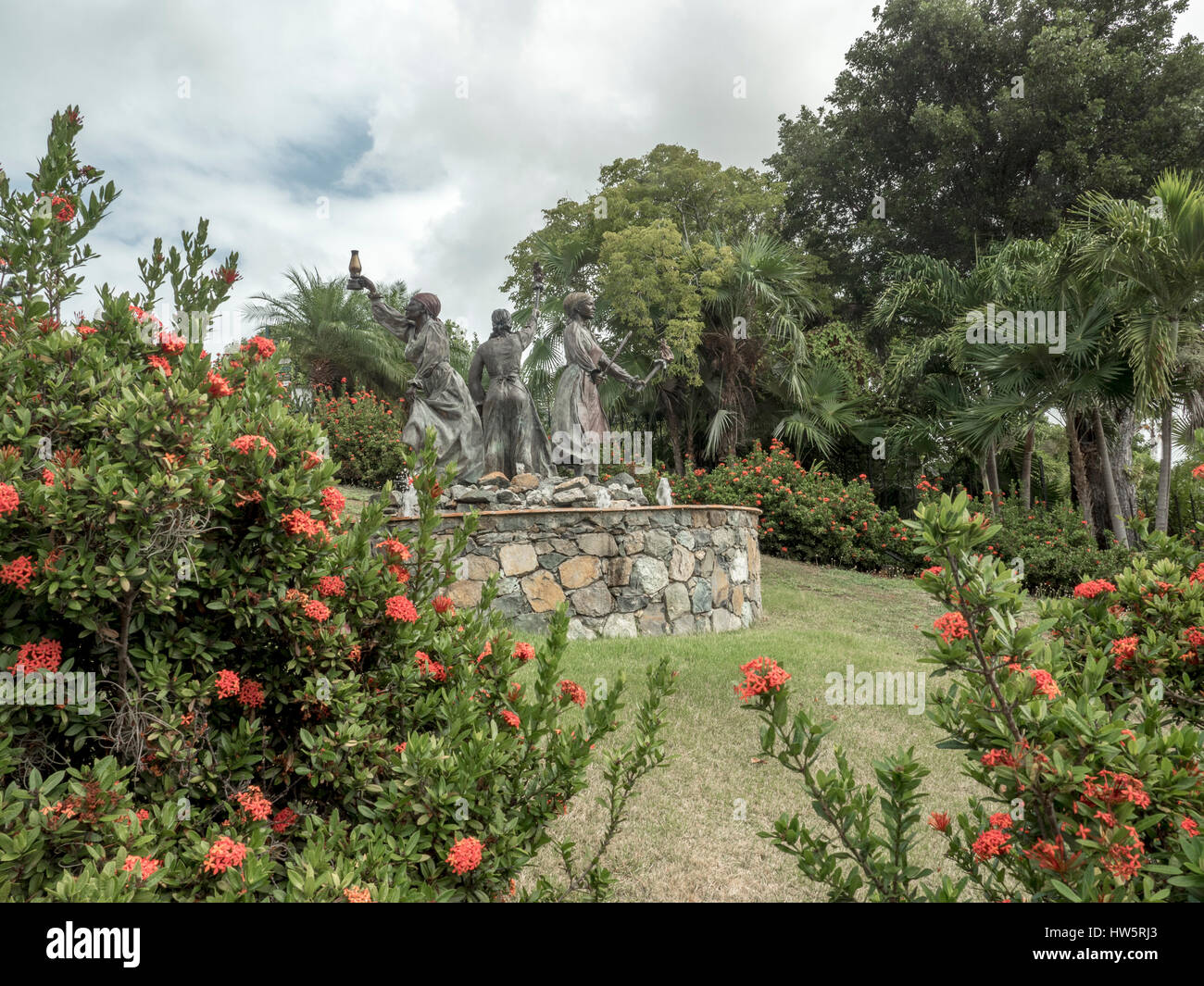 The Three Queens Of The Virgin Islands Fountain And Statue, Depicts Three Former Slaves From St Croix Who Led A Revolt Known As Fireburn Stock Photohttps://www.alamy.com/image-license-details/?v=1https://www.alamy.com/stock-photo-the-three-queens-of-the-virgin-islands-fountain-and-statue-depicts-135967275.html
The Three Queens Of The Virgin Islands Fountain And Statue, Depicts Three Former Slaves From St Croix Who Led A Revolt Known As Fireburn Stock Photohttps://www.alamy.com/image-license-details/?v=1https://www.alamy.com/stock-photo-the-three-queens-of-the-virgin-islands-fountain-and-statue-depicts-135967275.htmlRMHW5RJ3–The Three Queens Of The Virgin Islands Fountain And Statue, Depicts Three Former Slaves From St Croix Who Led A Revolt Known As Fireburn
 Caribbean West Indies St. Kitts and Nevis - The Cottle Church - historical ruins of a small church built by a planter Stock Photohttps://www.alamy.com/image-license-details/?v=1https://www.alamy.com/stock-photo-caribbean-west-indies-st-kitts-and-nevis-the-cottle-church-historical-49514716.html
Caribbean West Indies St. Kitts and Nevis - The Cottle Church - historical ruins of a small church built by a planter Stock Photohttps://www.alamy.com/image-license-details/?v=1https://www.alamy.com/stock-photo-caribbean-west-indies-st-kitts-and-nevis-the-cottle-church-historical-49514716.htmlRMCTFGEM–Caribbean West Indies St. Kitts and Nevis - The Cottle Church - historical ruins of a small church built by a planter
 France, Martinique (French West Indies), Le Diamant, Anse Cafard Memorial symbolizing the drowning slaves in the sinking of a Stock Photohttps://www.alamy.com/image-license-details/?v=1https://www.alamy.com/stock-photo-france-martinique-french-west-indies-le-diamant-anse-cafard-memorial-48739888.html
France, Martinique (French West Indies), Le Diamant, Anse Cafard Memorial symbolizing the drowning slaves in the sinking of a Stock Photohttps://www.alamy.com/image-license-details/?v=1https://www.alamy.com/stock-photo-france-martinique-french-west-indies-le-diamant-anse-cafard-memorial-48739888.htmlRMCR8868–France, Martinique (French West Indies), Le Diamant, Anse Cafard Memorial symbolizing the drowning slaves in the sinking of a
 Sugar production in the West Indies in the 17th century used an evaporating furnace (left), grinding mill driven by oxen Stock Photohttps://www.alamy.com/image-license-details/?v=1https://www.alamy.com/stock-photo-sugar-production-in-the-west-indies-in-the-17th-century-used-an-evaporating-50046444.html
Sugar production in the West Indies in the 17th century used an evaporating furnace (left), grinding mill driven by oxen Stock Photohttps://www.alamy.com/image-license-details/?v=1https://www.alamy.com/stock-photo-sugar-production-in-the-west-indies-in-the-17th-century-used-an-evaporating-50046444.htmlRMCWBPN0–Sugar production in the West Indies in the 17th century used an evaporating furnace (left), grinding mill driven by oxen
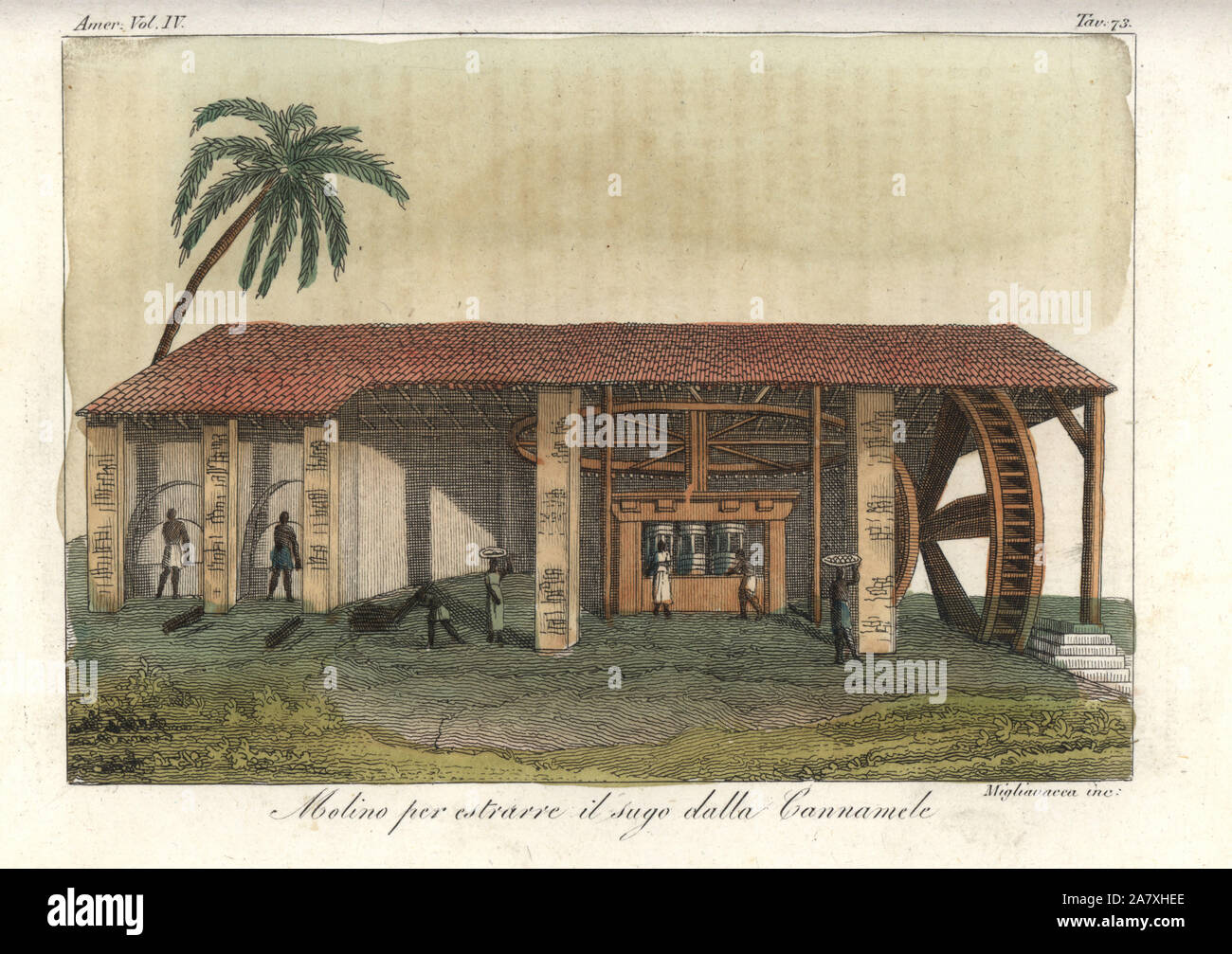 African slaves extracting sugar from sugarcane in a watermill on a plantation in the West Indies. The watermill drives a large wooden wheel turning three metal-clad cylinders. Handcoloured copperplate engraving by Migliavacca from Giulio Ferrrario's Costumes Antique and Modern of All Peoples (Il Costume Antico e Moderno di Tutti i Popoli), Florence, 1842. Stock Photohttps://www.alamy.com/image-license-details/?v=1https://www.alamy.com/african-slaves-extracting-sugar-from-sugarcane-in-a-watermill-on-a-plantation-in-the-west-indies-the-watermill-drives-a-large-wooden-wheel-turning-three-metal-clad-cylinders-handcoloured-copperplate-engraving-by-migliavacca-from-giulio-ferrrarios-costumes-antique-and-modern-of-all-peoples-il-costume-antico-e-moderno-di-tutti-i-popoli-florence-1842-image331884070.html
African slaves extracting sugar from sugarcane in a watermill on a plantation in the West Indies. The watermill drives a large wooden wheel turning three metal-clad cylinders. Handcoloured copperplate engraving by Migliavacca from Giulio Ferrrario's Costumes Antique and Modern of All Peoples (Il Costume Antico e Moderno di Tutti i Popoli), Florence, 1842. Stock Photohttps://www.alamy.com/image-license-details/?v=1https://www.alamy.com/african-slaves-extracting-sugar-from-sugarcane-in-a-watermill-on-a-plantation-in-the-west-indies-the-watermill-drives-a-large-wooden-wheel-turning-three-metal-clad-cylinders-handcoloured-copperplate-engraving-by-migliavacca-from-giulio-ferrrarios-costumes-antique-and-modern-of-all-peoples-il-costume-antico-e-moderno-di-tutti-i-popoli-florence-1842-image331884070.htmlRM2A7XHEE–African slaves extracting sugar from sugarcane in a watermill on a plantation in the West Indies. The watermill drives a large wooden wheel turning three metal-clad cylinders. Handcoloured copperplate engraving by Migliavacca from Giulio Ferrrario's Costumes Antique and Modern of All Peoples (Il Costume Antico e Moderno di Tutti i Popoli), Florence, 1842.
 Slavery West Indies Stock Photohttps://www.alamy.com/image-license-details/?v=1https://www.alamy.com/slavery-west-indies-image5071828.html
Slavery West Indies Stock Photohttps://www.alamy.com/image-license-details/?v=1https://www.alamy.com/slavery-west-indies-image5071828.htmlRMANHRD5–Slavery West Indies
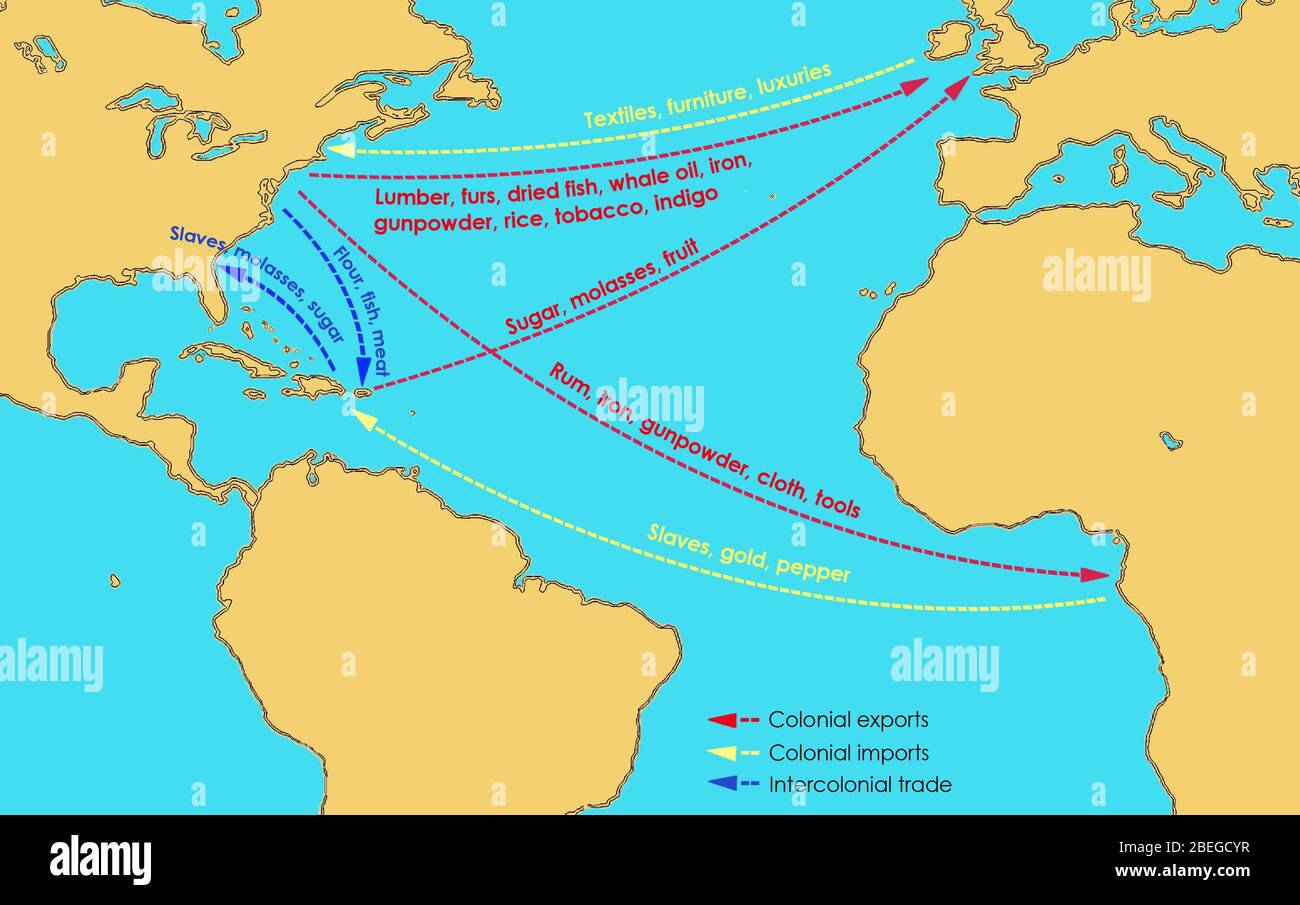 A map showing the flow of goods to and from the Thirteen British Colonies in North America in the 17th and 18th centuries. Britain exported manufactured goods, textiles, furniture, and luxuries to the Colonies; from the Colonies and the West Indies, they imported sugar, molases, fruit, lumber, furs, dried fish, whale oil, iron, gunpowder, rice, tobacco, and indigo. The Colonies exported rum, iron, gunpowder, cloth, and tools to Africa. Slaves, gold and pepper were transported from Africa, while intercolonial trade (to and from the West Indies and the Colonies) included slaves, molasses, sugar, Stock Photohttps://www.alamy.com/image-license-details/?v=1https://www.alamy.com/a-map-showing-the-flow-of-goods-to-and-from-the-thirteen-british-colonies-in-north-america-in-the-17th-and-18th-centuries-britain-exported-manufactured-goods-textiles-furniture-and-luxuries-to-the-colonies-from-the-colonies-and-the-west-indies-they-imported-sugar-molases-fruit-lumber-furs-dried-fish-whale-oil-iron-gunpowder-rice-tobacco-and-indigo-the-colonies-exported-rum-iron-gunpowder-cloth-and-tools-to-africa-slaves-gold-and-pepper-were-transported-from-africa-while-intercolonial-trade-to-and-from-the-west-indies-and-the-colonies-included-slaves-molasses-sugar-image353173963.html
A map showing the flow of goods to and from the Thirteen British Colonies in North America in the 17th and 18th centuries. Britain exported manufactured goods, textiles, furniture, and luxuries to the Colonies; from the Colonies and the West Indies, they imported sugar, molases, fruit, lumber, furs, dried fish, whale oil, iron, gunpowder, rice, tobacco, and indigo. The Colonies exported rum, iron, gunpowder, cloth, and tools to Africa. Slaves, gold and pepper were transported from Africa, while intercolonial trade (to and from the West Indies and the Colonies) included slaves, molasses, sugar, Stock Photohttps://www.alamy.com/image-license-details/?v=1https://www.alamy.com/a-map-showing-the-flow-of-goods-to-and-from-the-thirteen-british-colonies-in-north-america-in-the-17th-and-18th-centuries-britain-exported-manufactured-goods-textiles-furniture-and-luxuries-to-the-colonies-from-the-colonies-and-the-west-indies-they-imported-sugar-molases-fruit-lumber-furs-dried-fish-whale-oil-iron-gunpowder-rice-tobacco-and-indigo-the-colonies-exported-rum-iron-gunpowder-cloth-and-tools-to-africa-slaves-gold-and-pepper-were-transported-from-africa-while-intercolonial-trade-to-and-from-the-west-indies-and-the-colonies-included-slaves-molasses-sugar-image353173963.htmlRM2BEGCYR–A map showing the flow of goods to and from the Thirteen British Colonies in North America in the 17th and 18th centuries. Britain exported manufactured goods, textiles, furniture, and luxuries to the Colonies; from the Colonies and the West Indies, they imported sugar, molases, fruit, lumber, furs, dried fish, whale oil, iron, gunpowder, rice, tobacco, and indigo. The Colonies exported rum, iron, gunpowder, cloth, and tools to Africa. Slaves, gold and pepper were transported from Africa, while intercolonial trade (to and from the West Indies and the Colonies) included slaves, molasses, sugar,
 Ancient map of the Caribbean and Leeward Islands from the book ' A voyage in the West Indies: : containing various observations made during a residence in Barbadoes, and several of the Leeward Islands; with some notices and illustrations relative to the city of Paramarabo, in Surinam. With engravings. ' by Waller, John Augustine Published in London: Printed for Sir Richard Phillips and Co. Bride Court, Bridge Street; and to be had of all booksellers. in 1820 Stock Photohttps://www.alamy.com/image-license-details/?v=1https://www.alamy.com/ancient-map-of-the-caribbean-and-leeward-islands-from-the-book-a-voyage-in-the-west-indies-containing-various-observations-made-during-a-residence-in-barbadoes-and-several-of-the-leeward-islands-with-some-notices-and-illustrations-relative-to-the-city-of-paramarabo-in-surinam-with-engravings-by-waller-john-augustine-published-in-london-printed-for-sir-richard-phillips-and-co-bride-court-bridge-street-and-to-be-had-of-all-booksellers-in-1820-image439012863.html
Ancient map of the Caribbean and Leeward Islands from the book ' A voyage in the West Indies: : containing various observations made during a residence in Barbadoes, and several of the Leeward Islands; with some notices and illustrations relative to the city of Paramarabo, in Surinam. With engravings. ' by Waller, John Augustine Published in London: Printed for Sir Richard Phillips and Co. Bride Court, Bridge Street; and to be had of all booksellers. in 1820 Stock Photohttps://www.alamy.com/image-license-details/?v=1https://www.alamy.com/ancient-map-of-the-caribbean-and-leeward-islands-from-the-book-a-voyage-in-the-west-indies-containing-various-observations-made-during-a-residence-in-barbadoes-and-several-of-the-leeward-islands-with-some-notices-and-illustrations-relative-to-the-city-of-paramarabo-in-surinam-with-engravings-by-waller-john-augustine-published-in-london-printed-for-sir-richard-phillips-and-co-bride-court-bridge-street-and-to-be-had-of-all-booksellers-in-1820-image439012863.htmlRM2GE6NAR–Ancient map of the Caribbean and Leeward Islands from the book ' A voyage in the West Indies: : containing various observations made during a residence in Barbadoes, and several of the Leeward Islands; with some notices and illustrations relative to the city of Paramarabo, in Surinam. With engravings. ' by Waller, John Augustine Published in London: Printed for Sir Richard Phillips and Co. Bride Court, Bridge Street; and to be had of all booksellers. in 1820
 . English: 'Trelawney Town, the Chief Residence of the Maroons' Etching entitled 'Trelawney Town, the Chief Residence of the Maroons' published in 'The History, Civil and Commercial, of the British Colonies in the West Indies' by Bryan Edwards (1801). The Maroons formed two distinct communities in the mountains of central Jamaica, known as ‘cockpit country’. They were composed of runaway slaves and their descendents. The word ‘maroon’ derives from the Spanish ‘cìmarron’ meaning ‘wild’, and maroon communities frequently settled in areas across the Caribbean that were outside the control of Eur Stock Photohttps://www.alamy.com/image-license-details/?v=1https://www.alamy.com/english-trelawney-town-the-chief-residence-of-the-maroons-etching-entitled-trelawney-town-the-chief-residence-of-the-maroons-published-in-the-history-civil-and-commercial-of-the-british-colonies-in-the-west-indies-by-bryan-edwards-1801-the-maroons-formed-two-distinct-communities-in-the-mountains-of-central-jamaica-known-as-cockpit-country-they-were-composed-of-runaway-slaves-and-their-descendents-the-word-maroon-derives-from-the-spanish-cmarron-meaning-wild-and-maroon-communities-frequently-settled-in-areas-across-the-caribbean-that-were-outside-the-control-of-eur-image206595300.html
. English: 'Trelawney Town, the Chief Residence of the Maroons' Etching entitled 'Trelawney Town, the Chief Residence of the Maroons' published in 'The History, Civil and Commercial, of the British Colonies in the West Indies' by Bryan Edwards (1801). The Maroons formed two distinct communities in the mountains of central Jamaica, known as ‘cockpit country’. They were composed of runaway slaves and their descendents. The word ‘maroon’ derives from the Spanish ‘cìmarron’ meaning ‘wild’, and maroon communities frequently settled in areas across the Caribbean that were outside the control of Eur Stock Photohttps://www.alamy.com/image-license-details/?v=1https://www.alamy.com/english-trelawney-town-the-chief-residence-of-the-maroons-etching-entitled-trelawney-town-the-chief-residence-of-the-maroons-published-in-the-history-civil-and-commercial-of-the-british-colonies-in-the-west-indies-by-bryan-edwards-1801-the-maroons-formed-two-distinct-communities-in-the-mountains-of-central-jamaica-known-as-cockpit-country-they-were-composed-of-runaway-slaves-and-their-descendents-the-word-maroon-derives-from-the-spanish-cmarron-meaning-wild-and-maroon-communities-frequently-settled-in-areas-across-the-caribbean-that-were-outside-the-control-of-eur-image206595300.htmlRMP036BG–. English: 'Trelawney Town, the Chief Residence of the Maroons' Etching entitled 'Trelawney Town, the Chief Residence of the Maroons' published in 'The History, Civil and Commercial, of the British Colonies in the West Indies' by Bryan Edwards (1801). The Maroons formed two distinct communities in the mountains of central Jamaica, known as ‘cockpit country’. They were composed of runaway slaves and their descendents. The word ‘maroon’ derives from the Spanish ‘cìmarron’ meaning ‘wild’, and maroon communities frequently settled in areas across the Caribbean that were outside the control of Eur